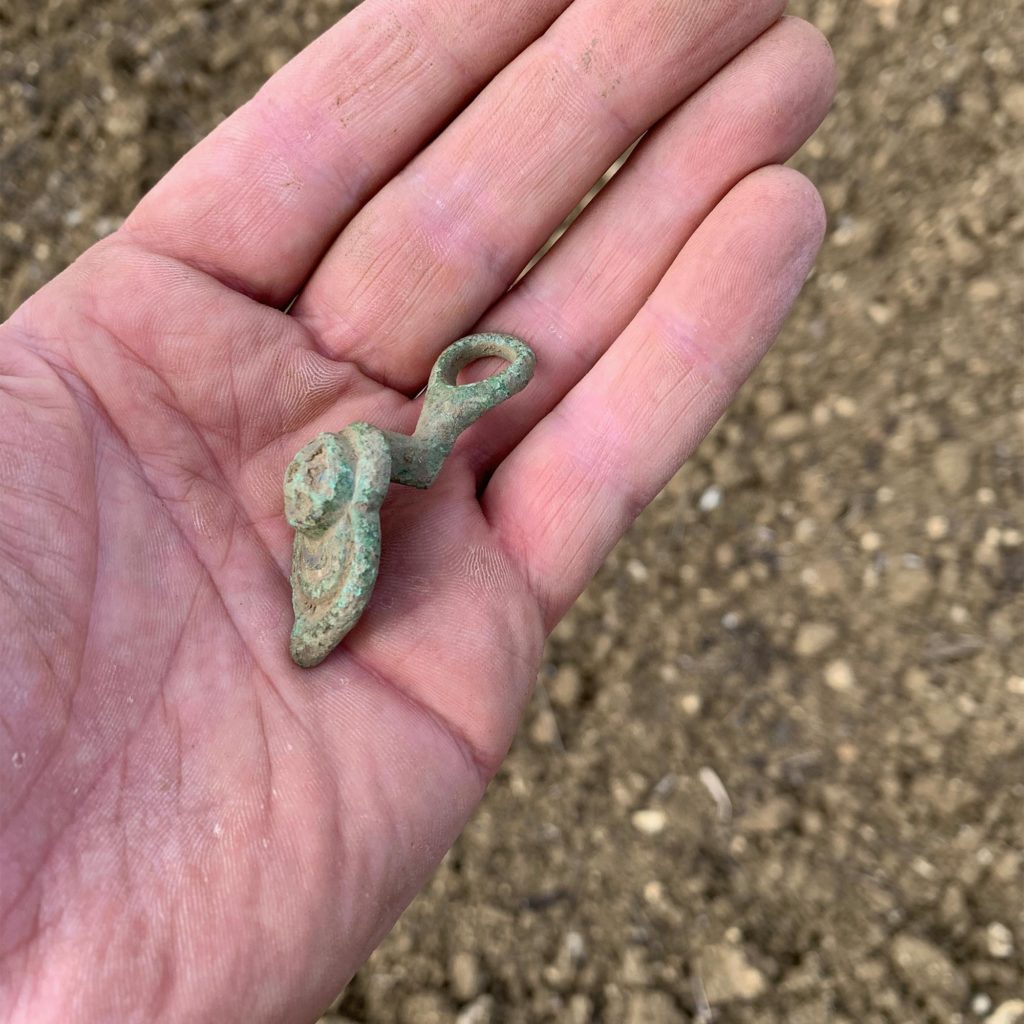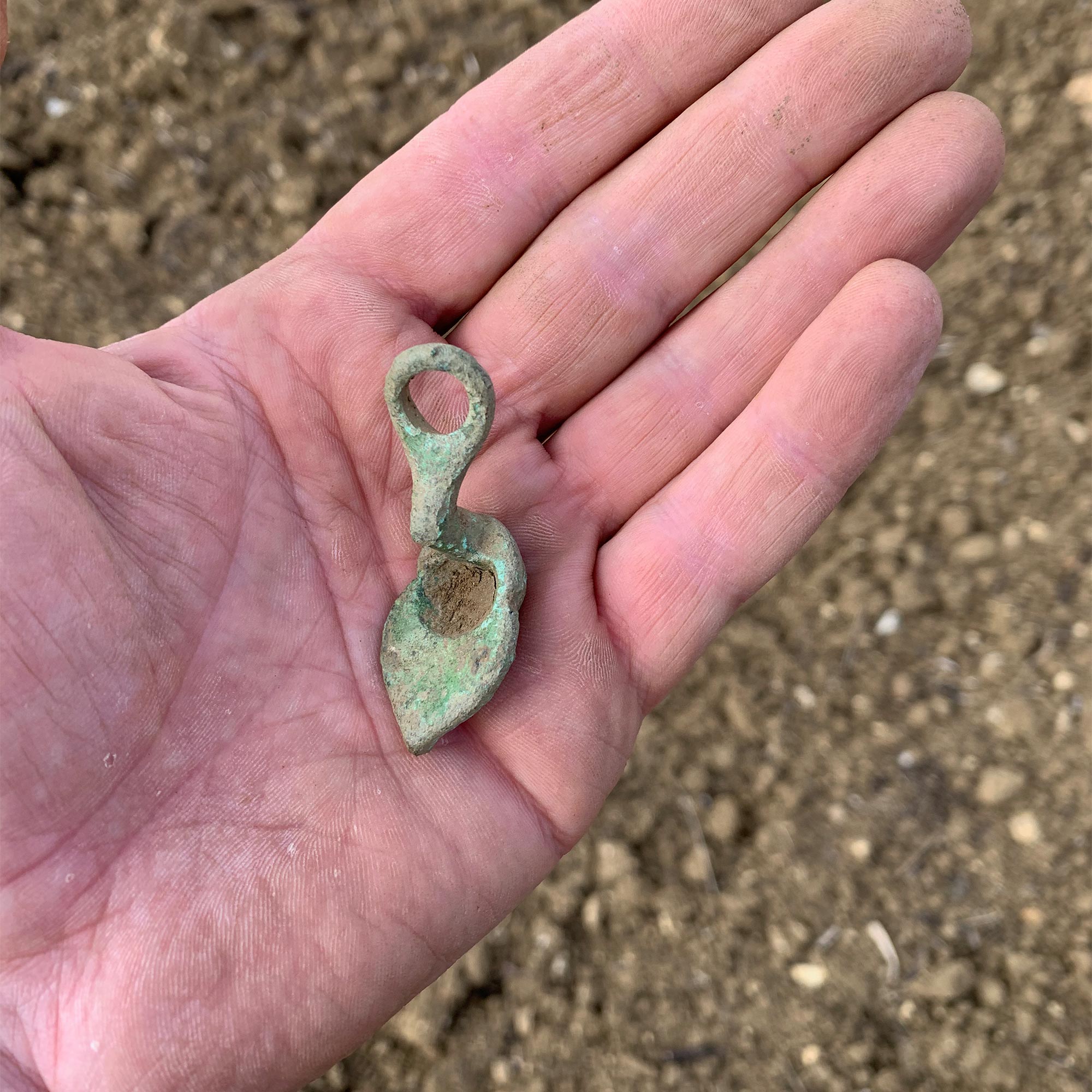Category: Metal Detecting
All noisy on the Weston front
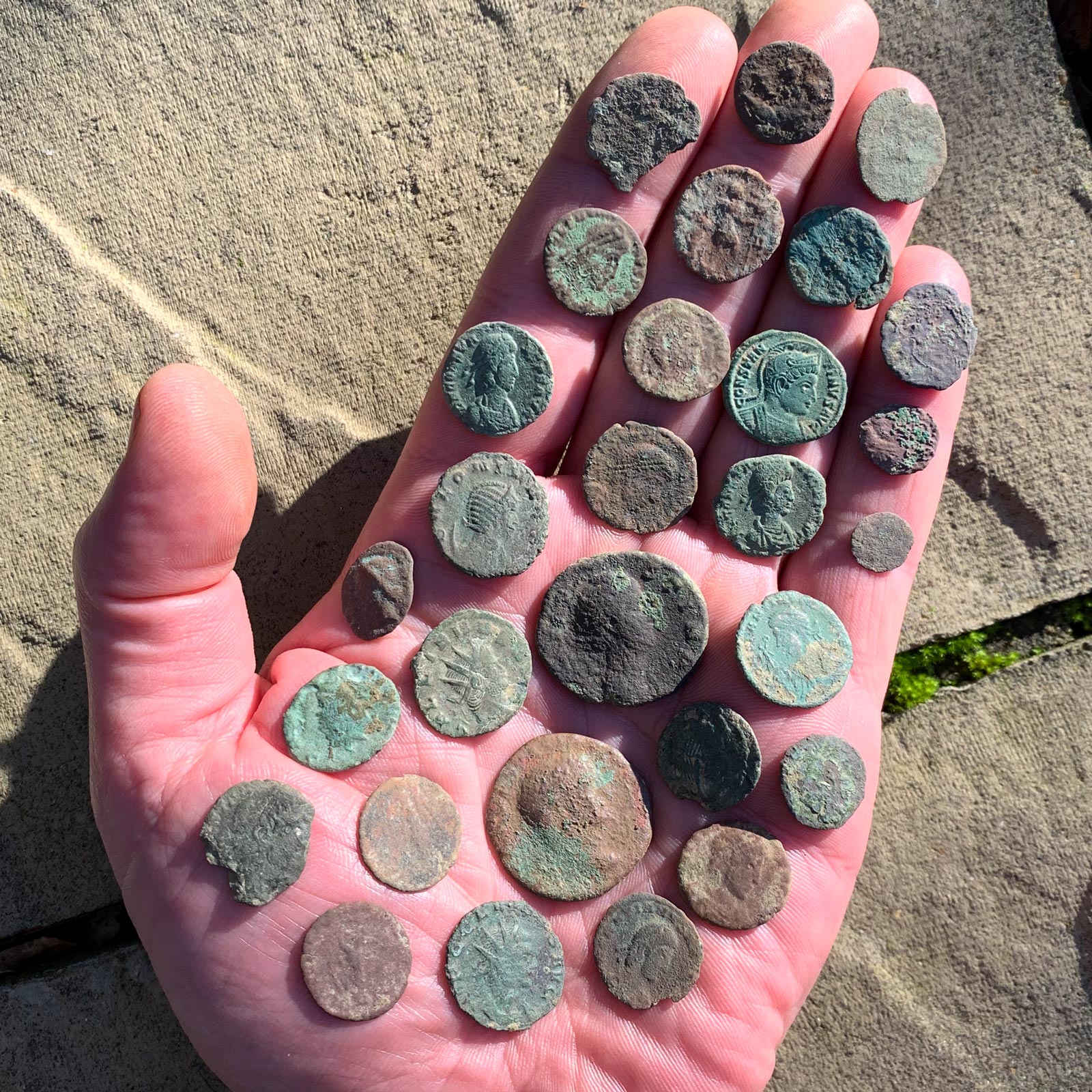
I’m sure most detectorists would agree that the hardest part of our hobby is obtaining permissions. I have been trying so hard for the past few years to get my own permissions outside of the couple of fields that my family owns but to no avail. I will carry on trying as I’m not the type of person who gives up that easily, but luckily for me I have an old school mate who has been more than generous by taking me out on his permissions. The last article I wrote about the lack of Roman finds at a villa site in Hertfordshire was one of his permissions and the article you’re reading now is much the same situation. But the difference here is that we started searching this site together, so from the off it felt like a level playing field, we both had contact with the landowner and we both arranged times to go detecting.
From the outset I had high hopes of good finds from this permission because the landowner revealed that the farm had been in his family for over 300 years and they had never granted permission for anyone to detect before now. He also revealed that there is a scheduled Roman villa in a neighbouring landowners field which borders with their land, could this permission get any better? Well actually yes, the landowner grows a hay crop so over the autumn and winter months most of the land is left to pasture, it is literally like being on the set of detectorists, heaven! Things did get a bit childish on the first day though when my old mate said “bagsie I get the field next to the Roman Villa”, at which point I started running whilst shouting “last one there’s not allowed on for a month!”. Things haven’t really progressed much from the school playground in the past 50 years.
The playground tactics employed to gain sole access to this particular field were soon to be proven pointless. On paper this should have been the field that produced the most given its close proximity to the villa, but in the 8 months that we have been on this permission it’s the field that has produced the least. I initially put this down to the fact that we started searching in the middle of summer with dry hard ground being a factor in masking what lay beneath. But even during the autumn and winter months when the ground was wet and soft it still didn’t really produce that much.
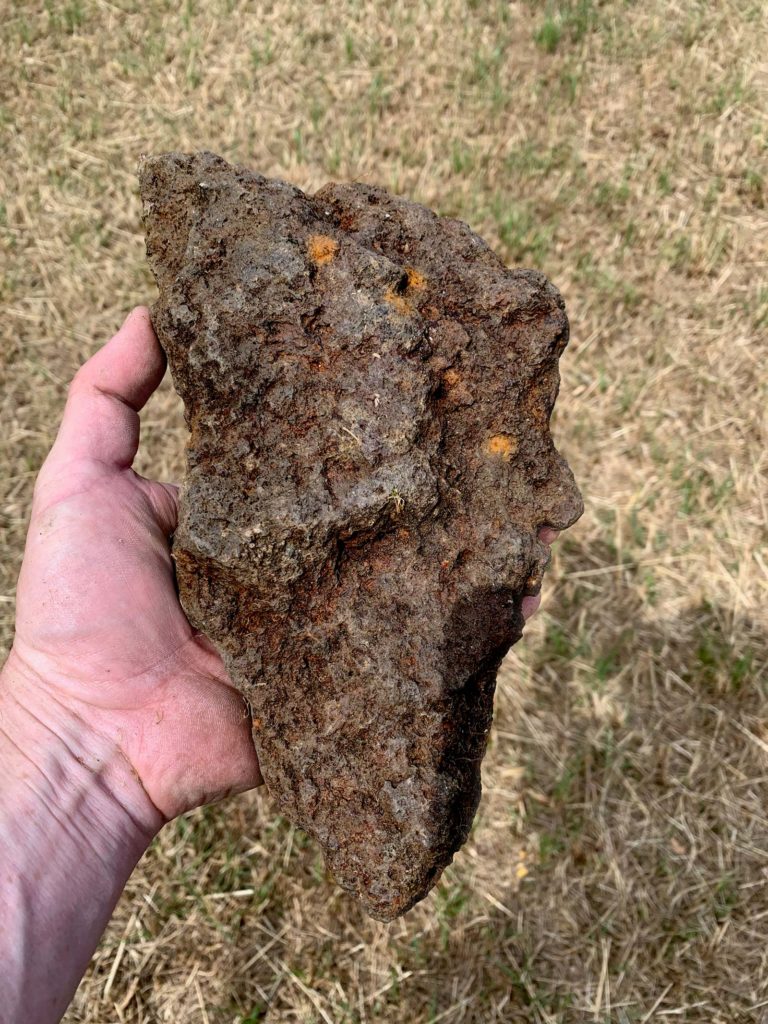
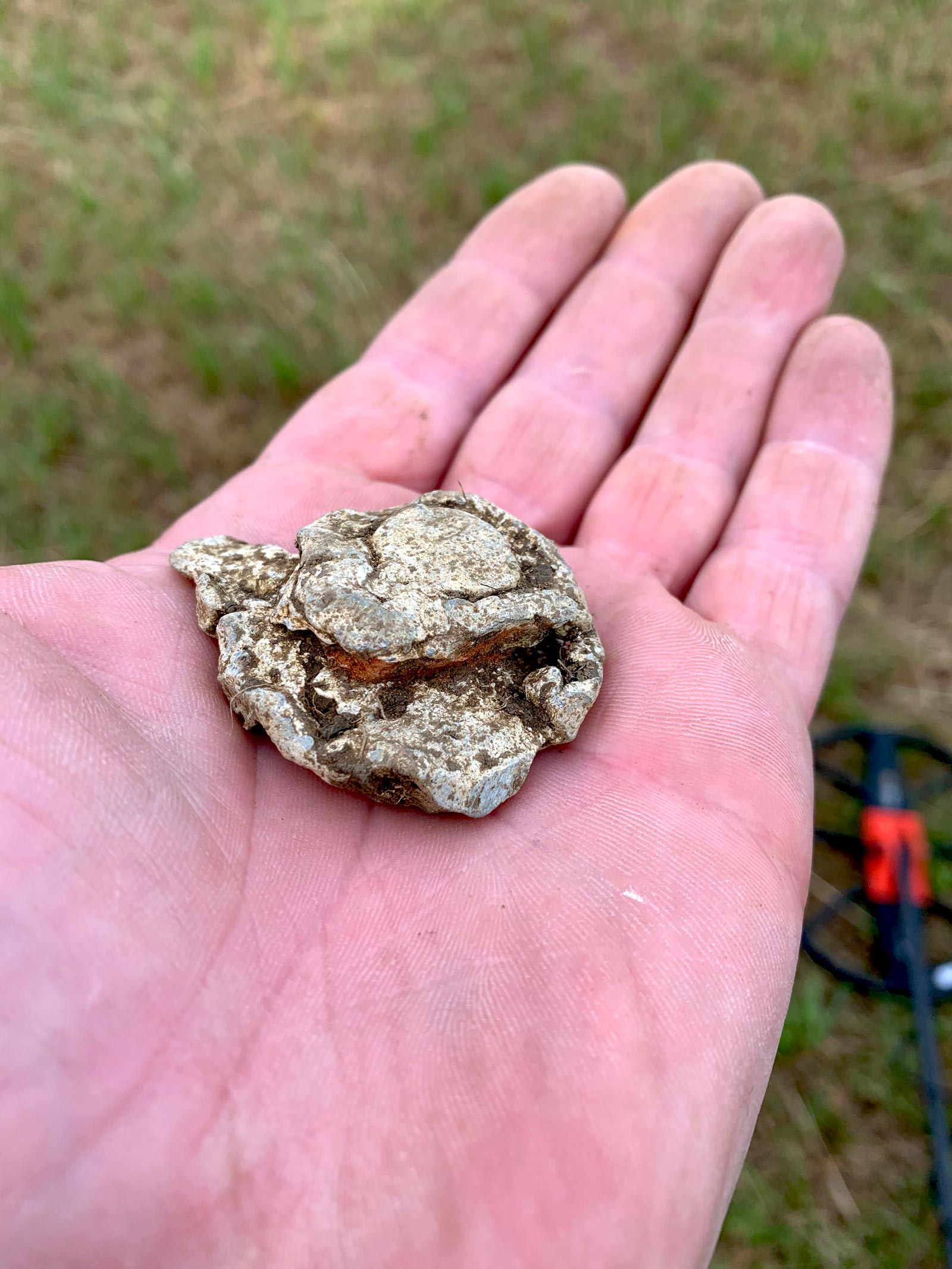
That’s not to say it produced nothing, in between the vast array of shot gun cartridges there has been the odd grotty Roman coin (5 in total between us), a huge lead pot mend and a massive lump of iron slag, all things which could be related to the villa in the next field. There has also been a few modern-ish coins including my first George III penny, even though it was pretty toasted it was still a joy to find.
The permission itself is pretty big, with a gorgeous 16th century country home at the heart of it. There is a lot of land here for us to search and given that it stretches between the Roman villa and a 12th century parish church there should be a lot of history for us to find. Our next target was a huge south facing slope which as luck would have it had just been harvested and was now left to pasture. My mate got chatting to a lady that used to help out farming this land and she told him that the south facing slope was referred to as ‘the vineyard’, could this be a Roman legacy?
I think it’s fair to say that this is where the historical journey really began as the finds started reveal the history we hoped that this permission would hold. My mate started things off on the first outing with a couple of hammy’s, but I wasn’t really getting that much in way of good signals. There is hardly any iron trash on this particular field so I soon learned that when I did get a signal it would more often than not be something good. Then on the 2nd outing I had some Roman coins come up, firstly a denarius of Hadrian which was a little beaten up but easily identifiable. Then I had a very worn dupondius which was closely followed by a lovely silver denarius of Faustina Sr. Because this was the first silver Roman I had found on this permission I decided to give it back to the land owner as he has a real interest in the history of his land.
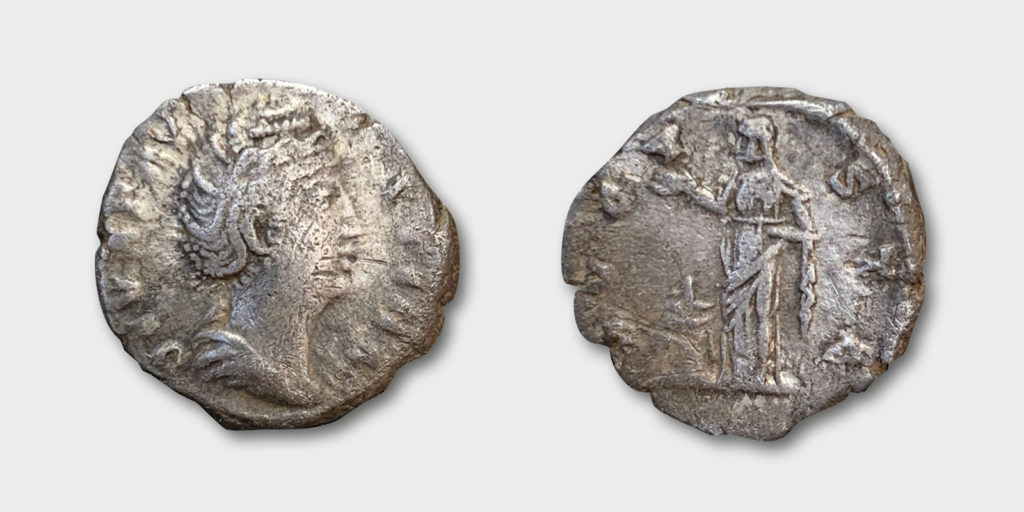
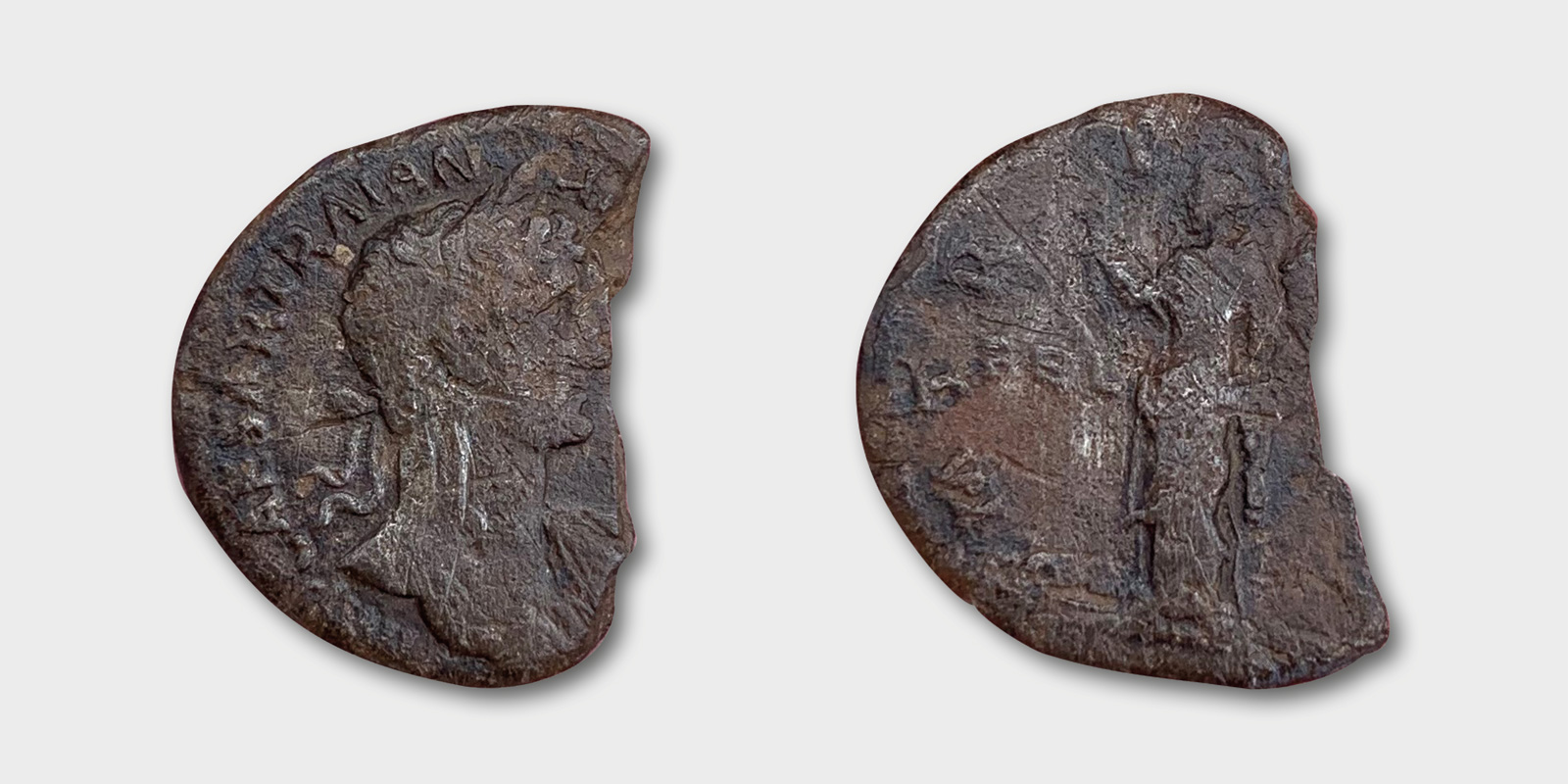
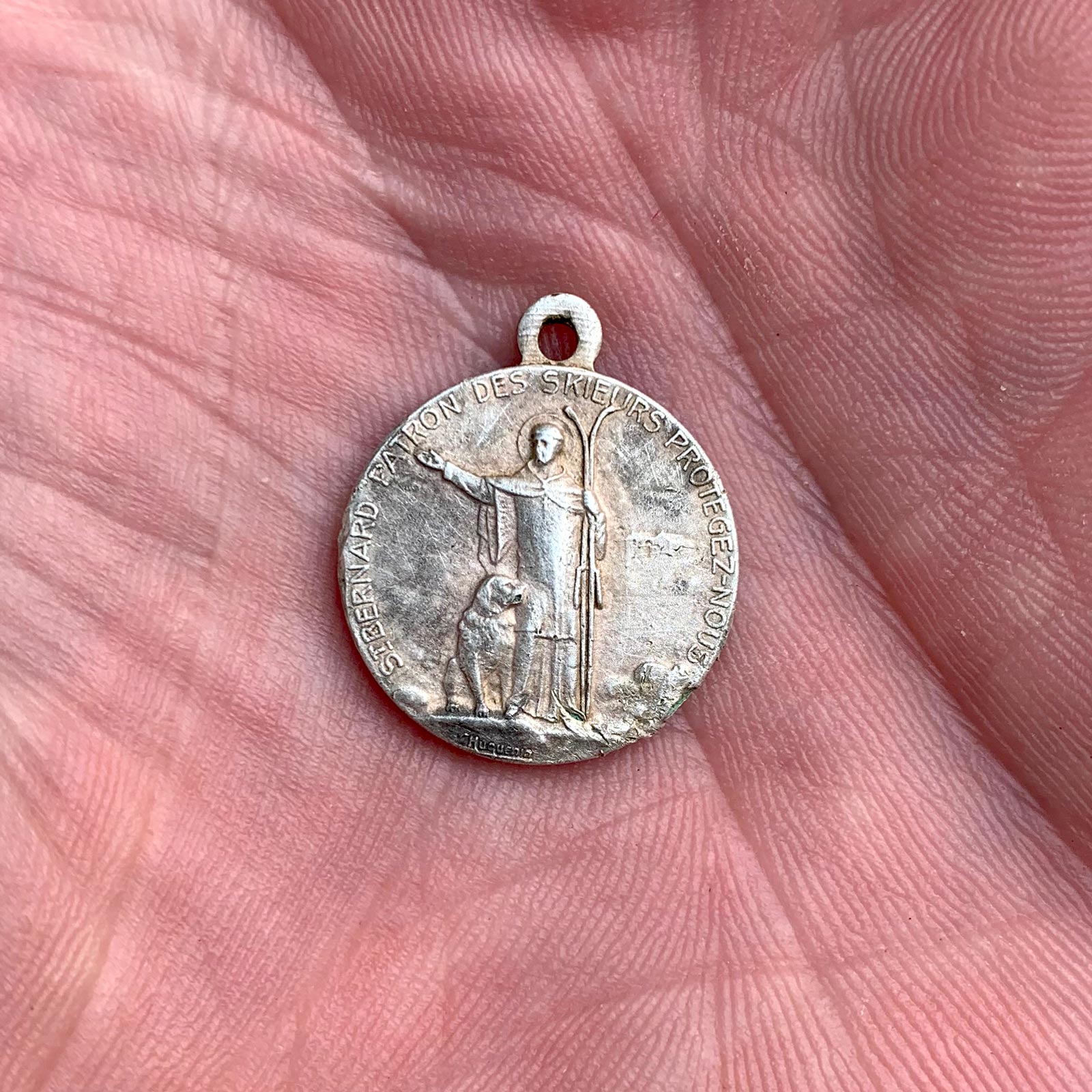
I also did the same with the second piece of silver that I found as this time it had a direct connection to his family. The silver in question was a pendant of St. Bernard the patron saint of skiers! The pendant had the makers name Huguenin which was a Swiss firm established in 1868. The connection is that previous generations of his family used to spend a lot of time in years gone by skiing in the Swiss Alps. It would also appear that they spent some time skiing on this slope too and I’m sure St. Bernard appreciates seeing daylight again.
We spent quite a lot of time on this field in the months that followed and although we had some other good finds it didn’t really produce in the way we thought it might. I had a couple more Roman coins from it though, one was Marcus Aurelius and the other was Gordian III. I was really chuffed with Marcus Aurelius and I remember on discovering who it was saying, “that’s bloody Richard Harris that is”. I was so chuffed that I insisted that my partner and I watched Gladiator that evening. There we were watching Richard Harris with one of his coins sat on the coffee table and me with a stupid grin on my face. It’s only when I think of it now that I realise that my partner must despair of me at times.
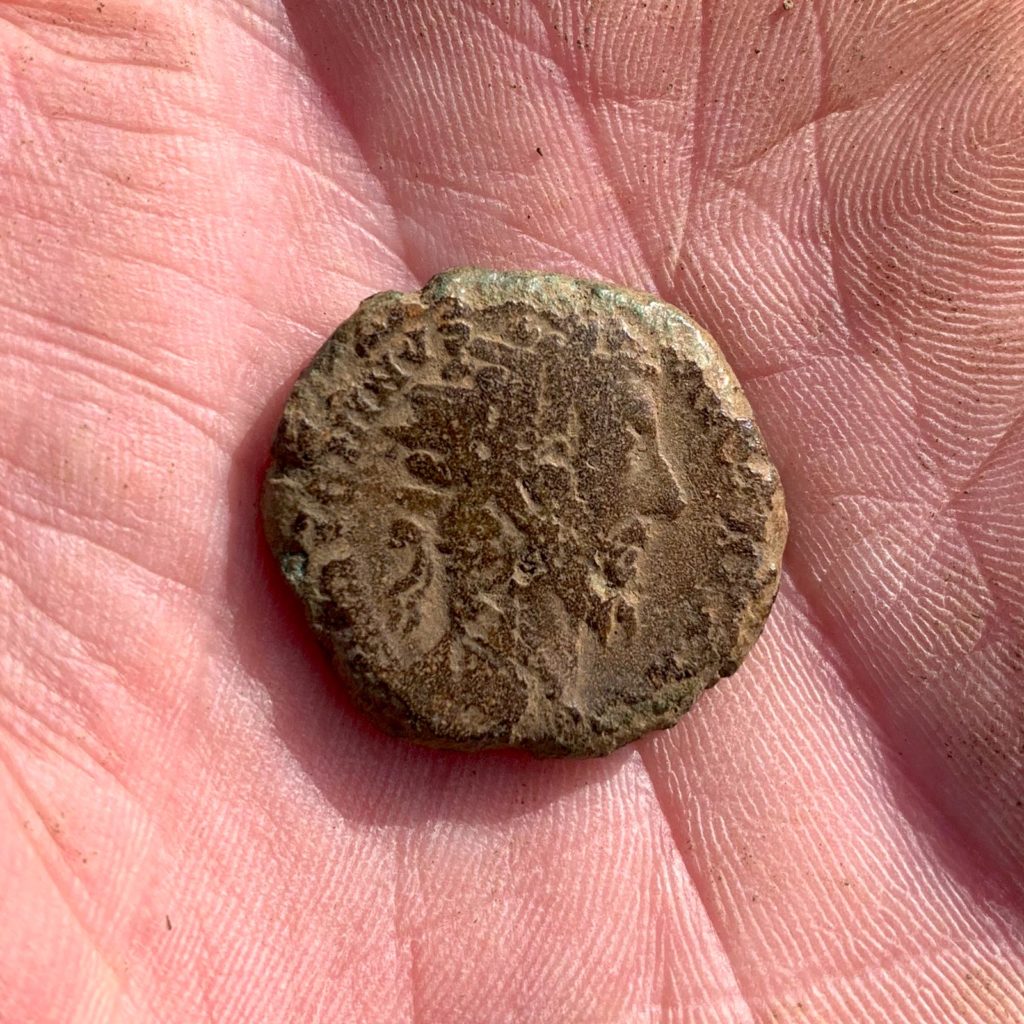
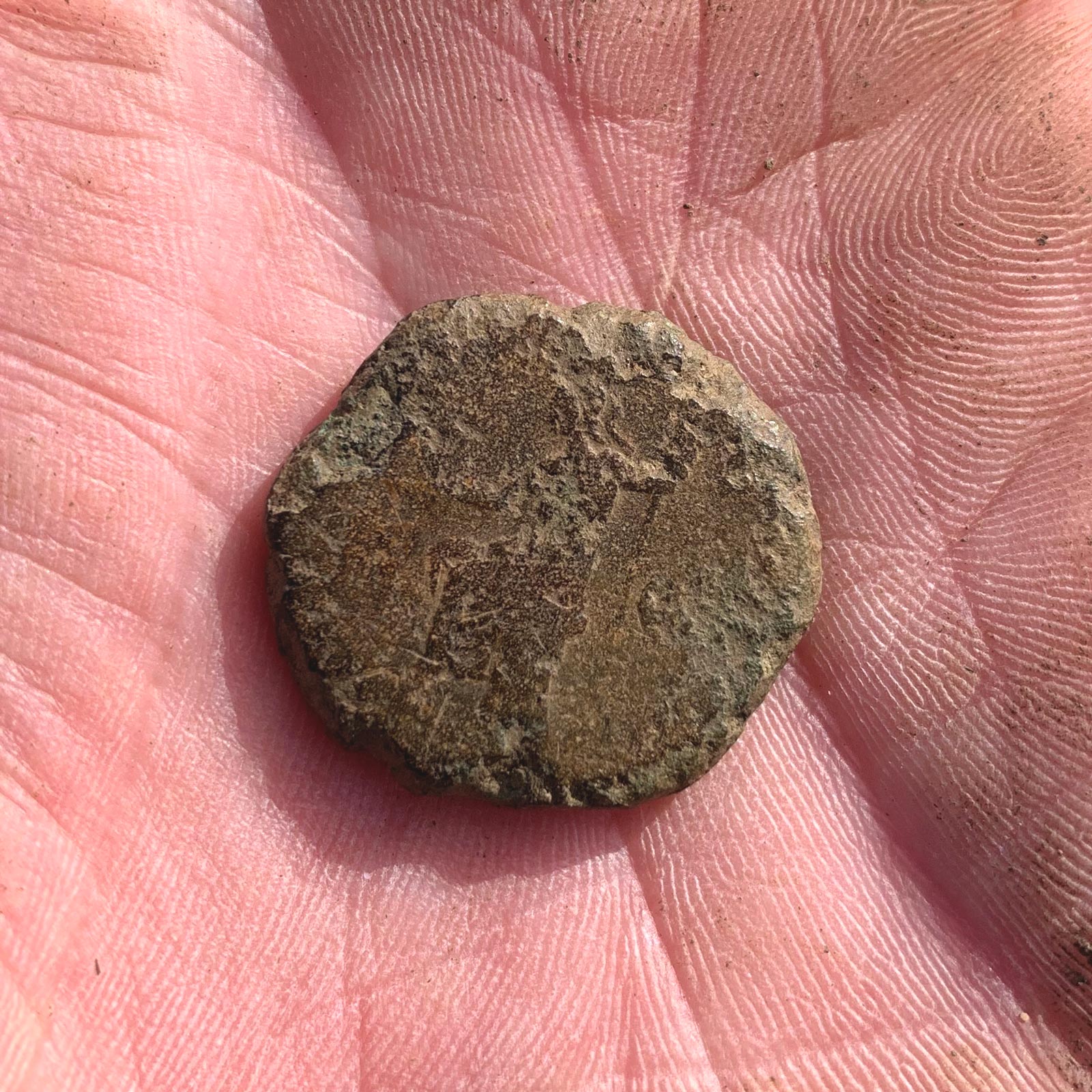
So again it was getting to the point where we needed to extend the search elsewhere on the permission. During December my mate didn’t come out as much, and to be honest I didn’t blame him because it had turned pretty darn cold. It was only my hot flask of tea and thermal underwear that kept me out in the freezing temperatures, along with the thought that there must be a Roman hoard around here somewhere. During some email conversations with Julian Evan-Hart, he let slip that Weston is where he grew up, which kinda left me with a feeling of imposter syndrome. But he also divulged that a hoard of silver denaris had been uncovered near the church sometime in the 1800’s. I don’t think any records exist and the whereabouts of the coins is unknown so who knows if it is true, but it has kept my hopes alive of there being another stash of Roman coins around here somewhere.
During this month I took the search closer to the family house, my thinking being that if I were a Roman living on this landscape I would make a home exactly where the family have there home today. The landowner was ok with this so long as I didn’t search directly on the main lawn. It worked for me as I wouldn’t have felt comfortable digging holes in the front garden and the area that I was specifically interested in I was allowed to search. This was a small wooded area to the side of the main house that had some well walked paths and small open grassy areas between some of the trees. But again, nothing Roman, it was mainly more modern coins from the early 1800’s onwards which I guess are probably loses from members of the landowners family over the years. I also found a medal, it turns out it was from the Daily Mail Teddy Tail League celebrating the Silver Jubilee of king George V in 1935.
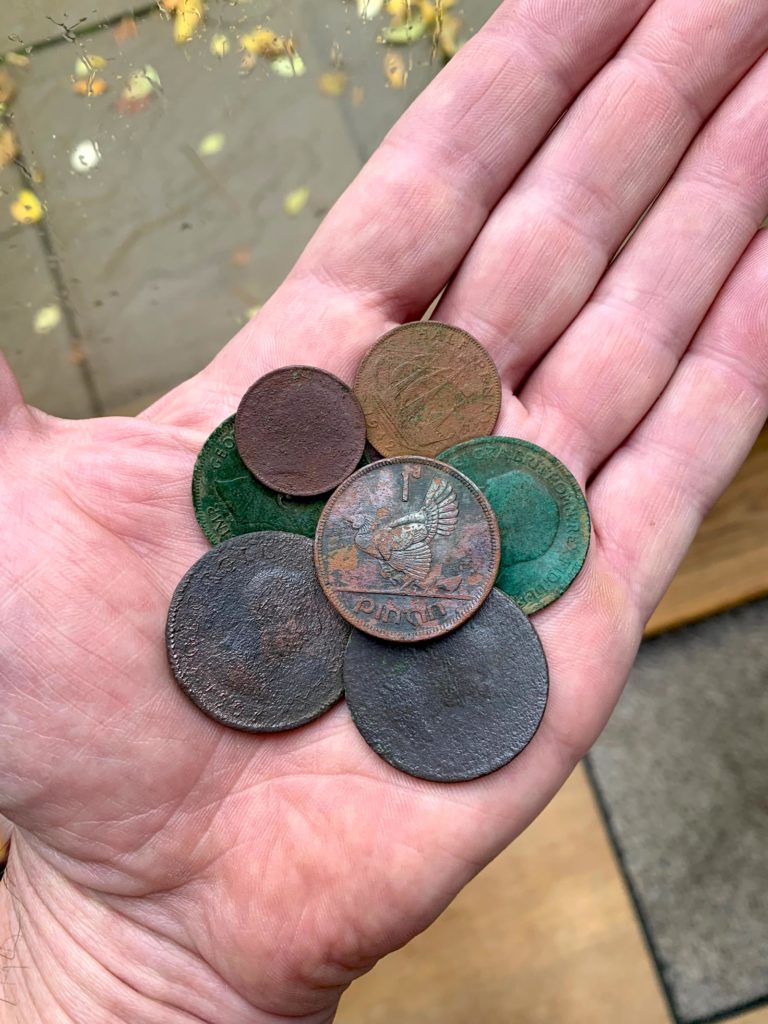
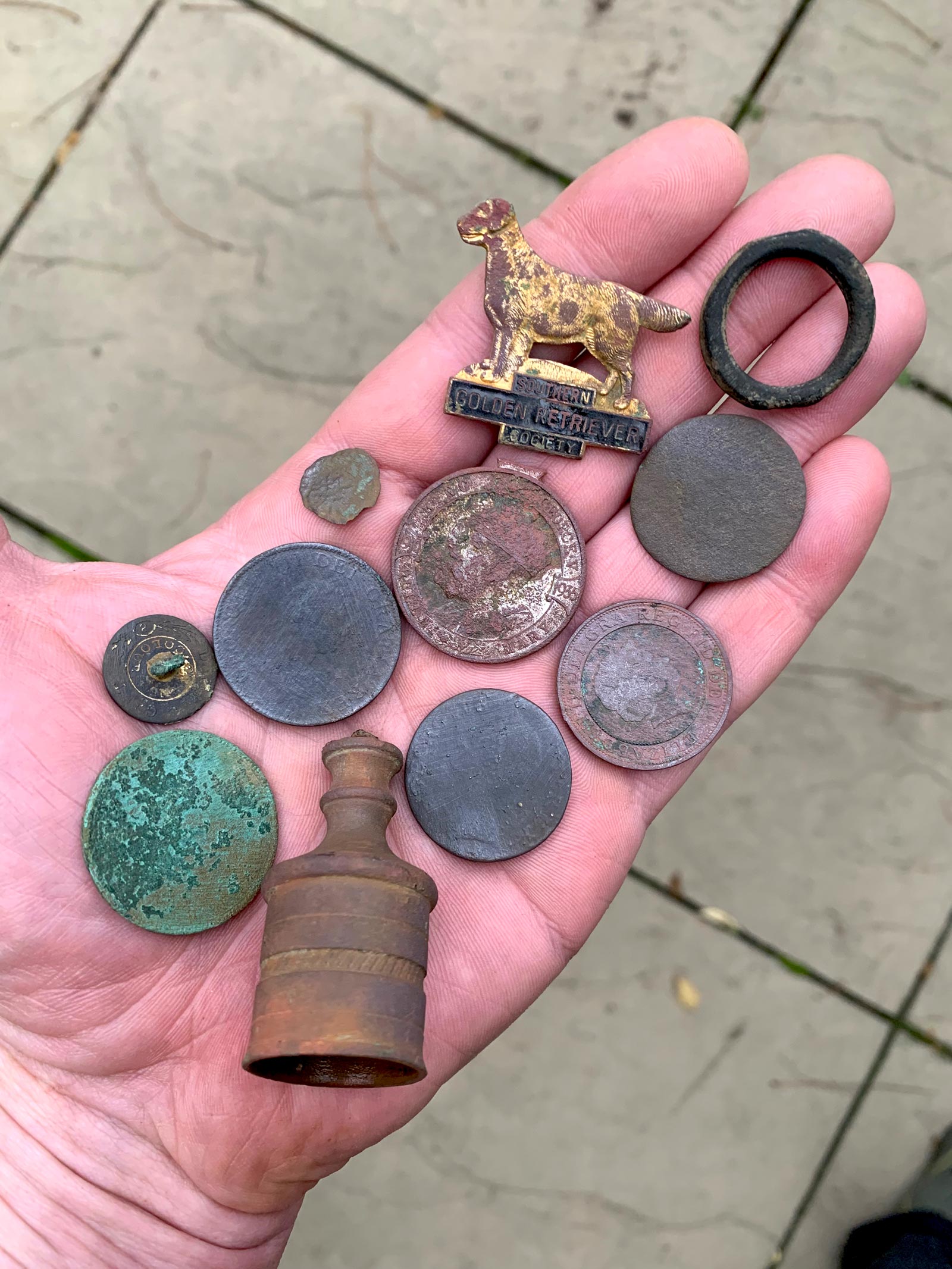
In these wintery months there was also some incredible scenery to take in on the frosty early mornings. It’s another of the great aspects of this hobby, being in the middle of the gorgeous countryside that North Hertfordshire has to offer. It’s these moments when I take the time to stand back and take it all in that I feel incredibly lucky to live in this beautiful part of the county. But beautiful frosty mornings aside, there was no evidence of Romans’ on this part of the permission, so where were they?
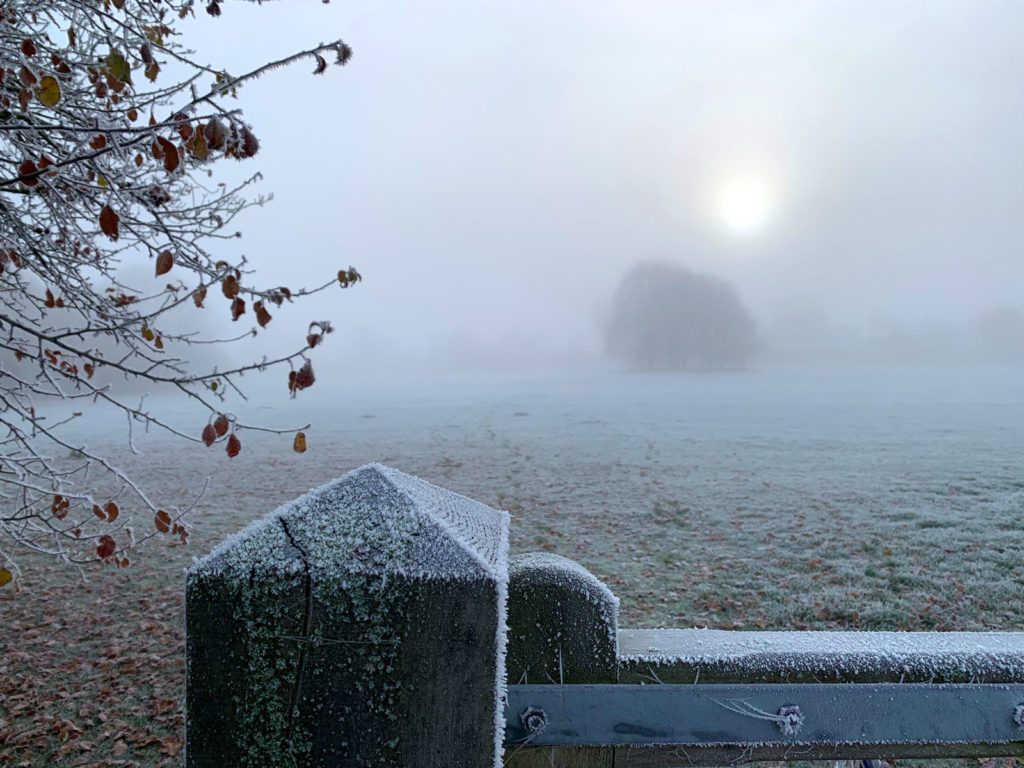
You might well be thinking that it’s pretty obvious, they were at the villa which is just outside of our permission and you’d be right, they were there. But I had a feeling that there had also been habitation elsewhere on the permission. Part of the reason for this was the research I did on the PAS database. In my previous article I wrote about the help that my Finds Liaison Officer, Matt Fittock gave in using the database to search for finds by grid reference. The results of this were interesting because quite a few Roman finds had been made in the square kilometer that included the Roman villa and some of the land from our permission, but outside of that square kilometer there was pretty much nothing. What interested me is that the earliest Roman finds recorded on the PAS database were from 260AD onwards, nothing before that. The coins I have been unearthing are much earlier than this, the denarius of Hadrian for example dates from 117 to 138AD, so it got me thinking that there might be dwellings in addition to where the villa site is now as my finds were all coming up outside of that square kilometer. This feeling was further enhanced with the occasional small lead pot mend I was finding as these are usually good indicators of habitation.
Between Christmas and new year me and my mate decided to give another field some attention. It’s one we had constant sight of because it was on the opposite side to the main south facing slope we had spent so much time on, but for some reason we didn’t think much of it. This was partly due to the big badgers den that was slap bang in the middle of it, but we managed to overcome that fear as curiosity got the better of us and boy did it pay off!
This field has it’s own entrance and we had permission to park on it which was great, it made things a lot easier should the need to escape angry badgers arise! The finds started coming up pretty quick with a few modern coins including a nice silver George III shilling, and then a little later a toasted Roman coin, possibly a dupondius but I wasn’t able to identify the Emperor. Then came a bucket lister for me, my first Roman fibula brooch, it was a real punch the air moment. Neither of us had ever found a fibula brooch and my mate has been detecting a lot longer than me, it even led to us dancing a little jig. The brooch was broken as they usually are but it still had a good portion of the spring mechanism which was good for dating purposes. As with a lot of my finds I ran this one past Keith Fitzpatrick-Mathews, the Curator and Heritage Access Officer at North Herts Museums and he dated it 40-60AD. So the dates of our Roman finds are now being placed at the beginning of the occupation which probably meant there was habitation here before that. There is one Iron Age brooch on the PAS database recorded from this area so maybe in future outings we will find our own evidence of Iron Age habitation.
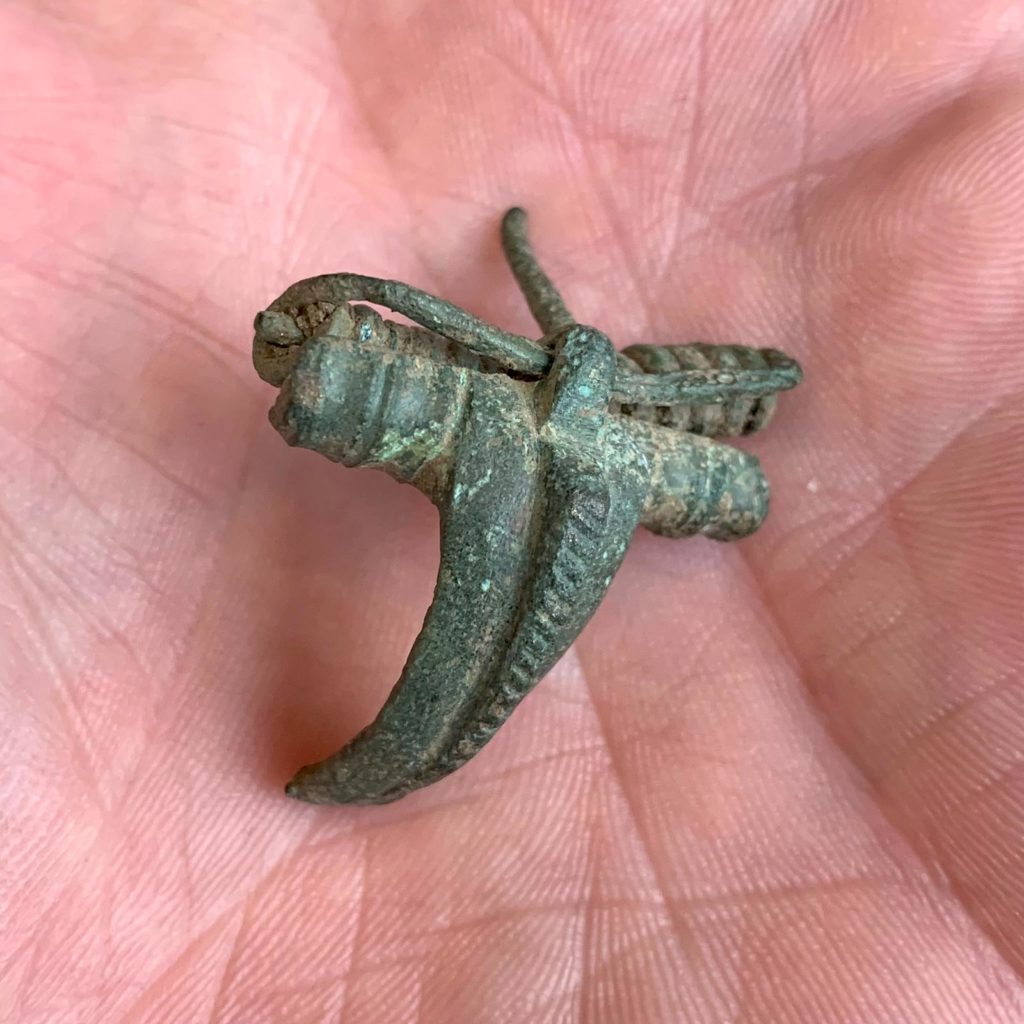
My next time out on this field was New Years Day, but my mate was unable to join me so I was on my own for this one and he kinda regrets not coming out to play now. This was when the Roman coins started popping up in abundance, I think I had 9 come up in total on that day and all in close proximity to each other. I came back the next day, as you would, and again my mate couldn’t make it and I had another 10 coins out. It’s at his point I started to wonder if we had the beginnings of a hoard clipped by the plough, but in the next few outings when my mate could make it the coins started to become a lot more scarce. We had 39 coins in total between us, not a hoard but still a bloody good start to the year! The majority of these were toasted but there were quite a few that could be identified and dated.
On handing the coins in to Matt Fittock (FLO) I asked if he would be able to identify some of them there and then, but he was unable to because of the massive backlog of work he has to contend with due to our hobby becoming more popular during the lockdowns. I decided to try and identify them myself using the book ‘A History of Roman Coinage in Britain’ by Sam Moorhead the National Finds Adviser for Iron Age and Roman Coins at the Portable Antiquities Scheme (British Museum). I think I did ok but I wanted someone to check my homework to be sure of my efforts. I decided to be a bit brazen and I emailed Sam Moorhead directly and he very graciously replied having marked my homework. I had sent him a pdf with photos of both sides of each coin with my identifications and I didn’t fare too bad. There were a few I got wrong which he corrected and he also left a note next to one of them saying ‘nice coin’. I asked why he had singled out this particular coin (Constantine II) to which he replied “The bust with the emperor holding Victory on globe is scarce; it’s also a nice coin to look at!” It’s a pretty good feeling to be told that at least one of these coins a little on the rare side.
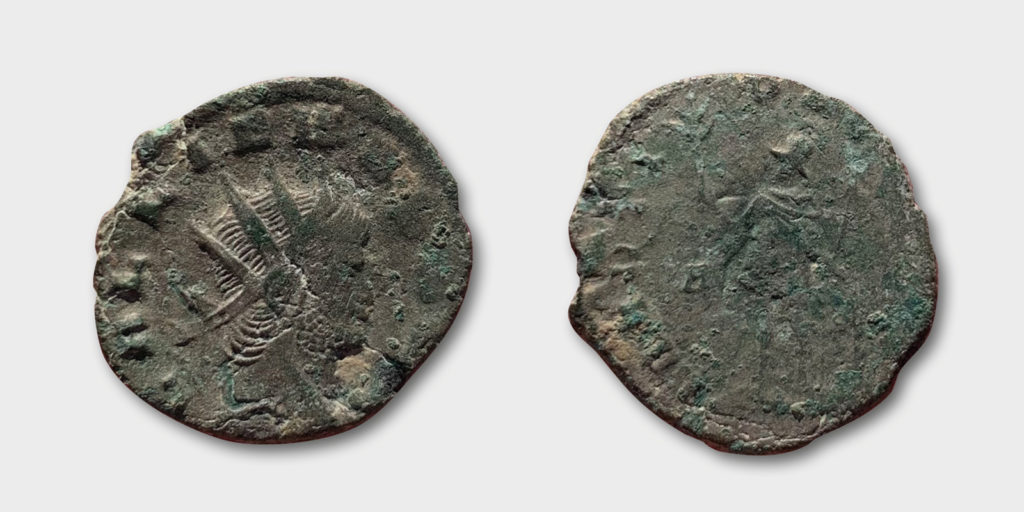
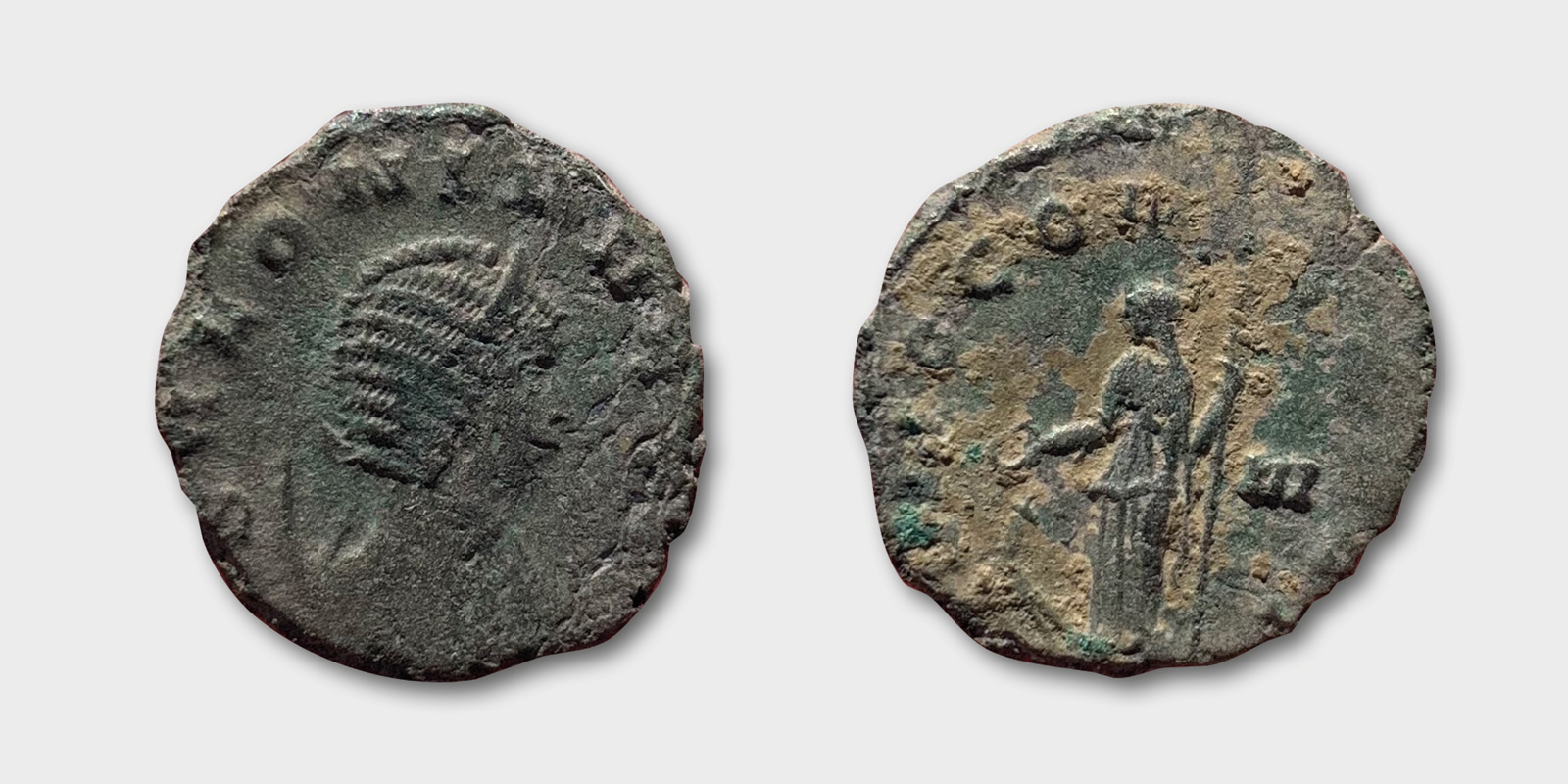
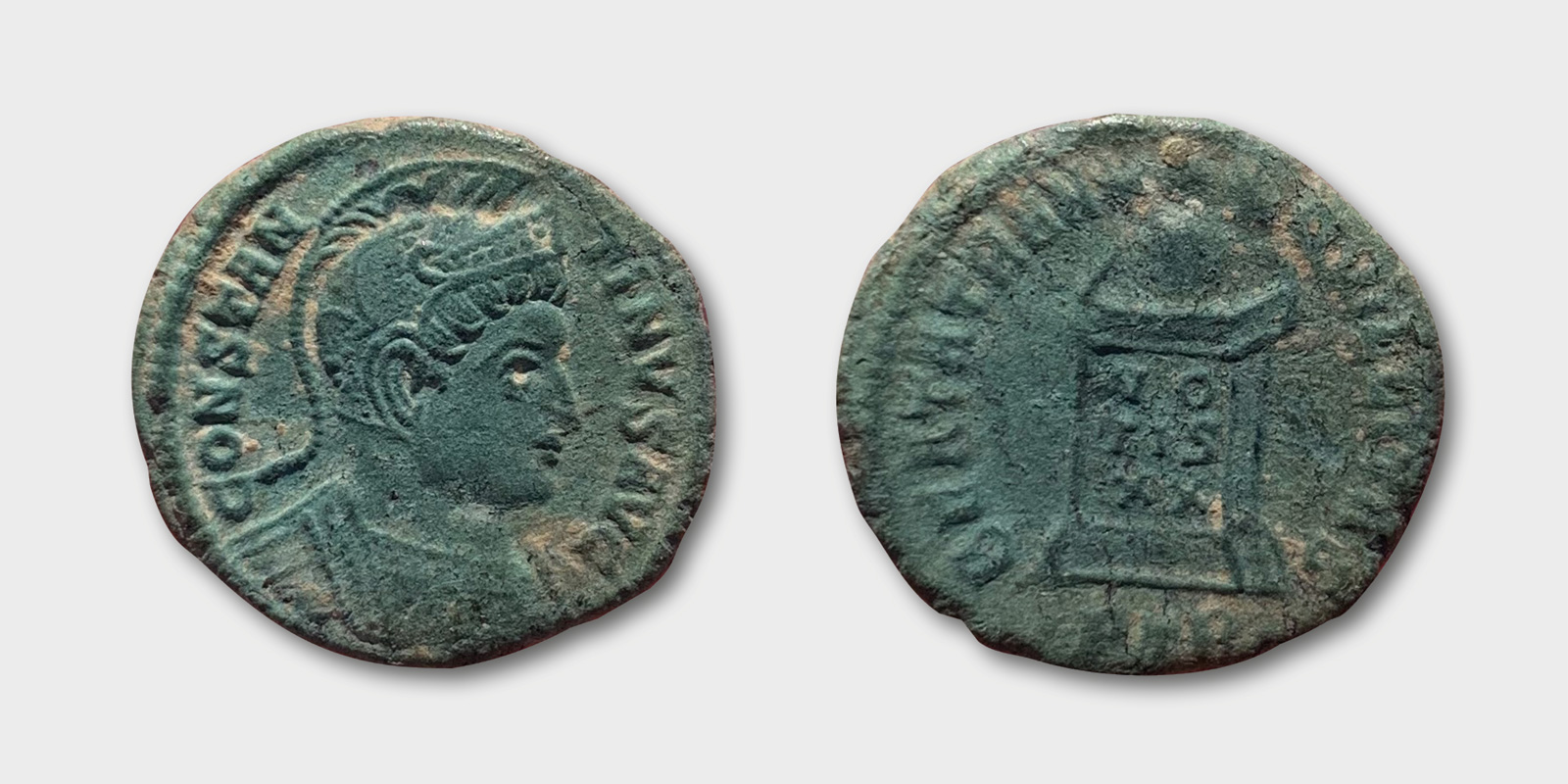
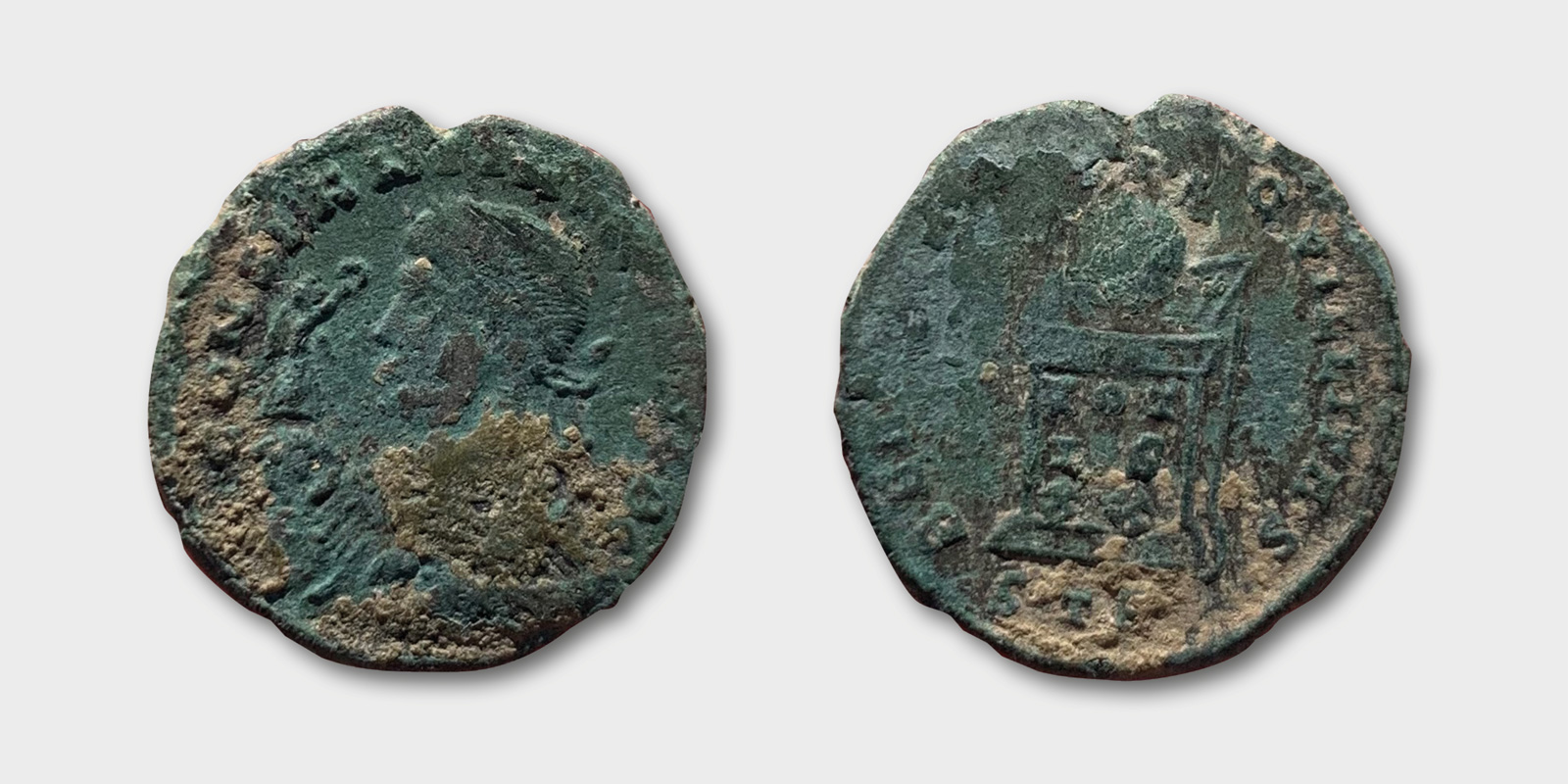
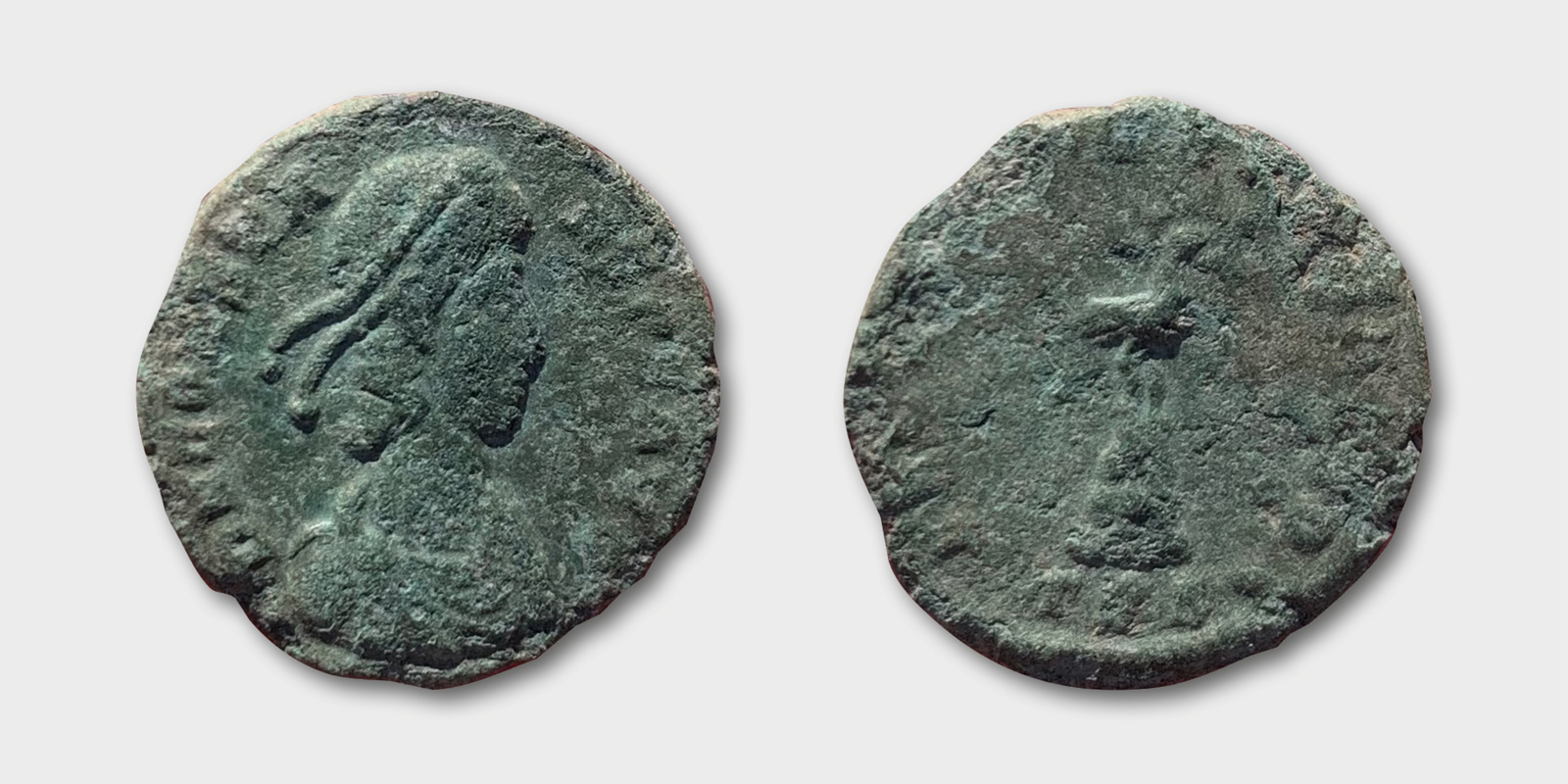
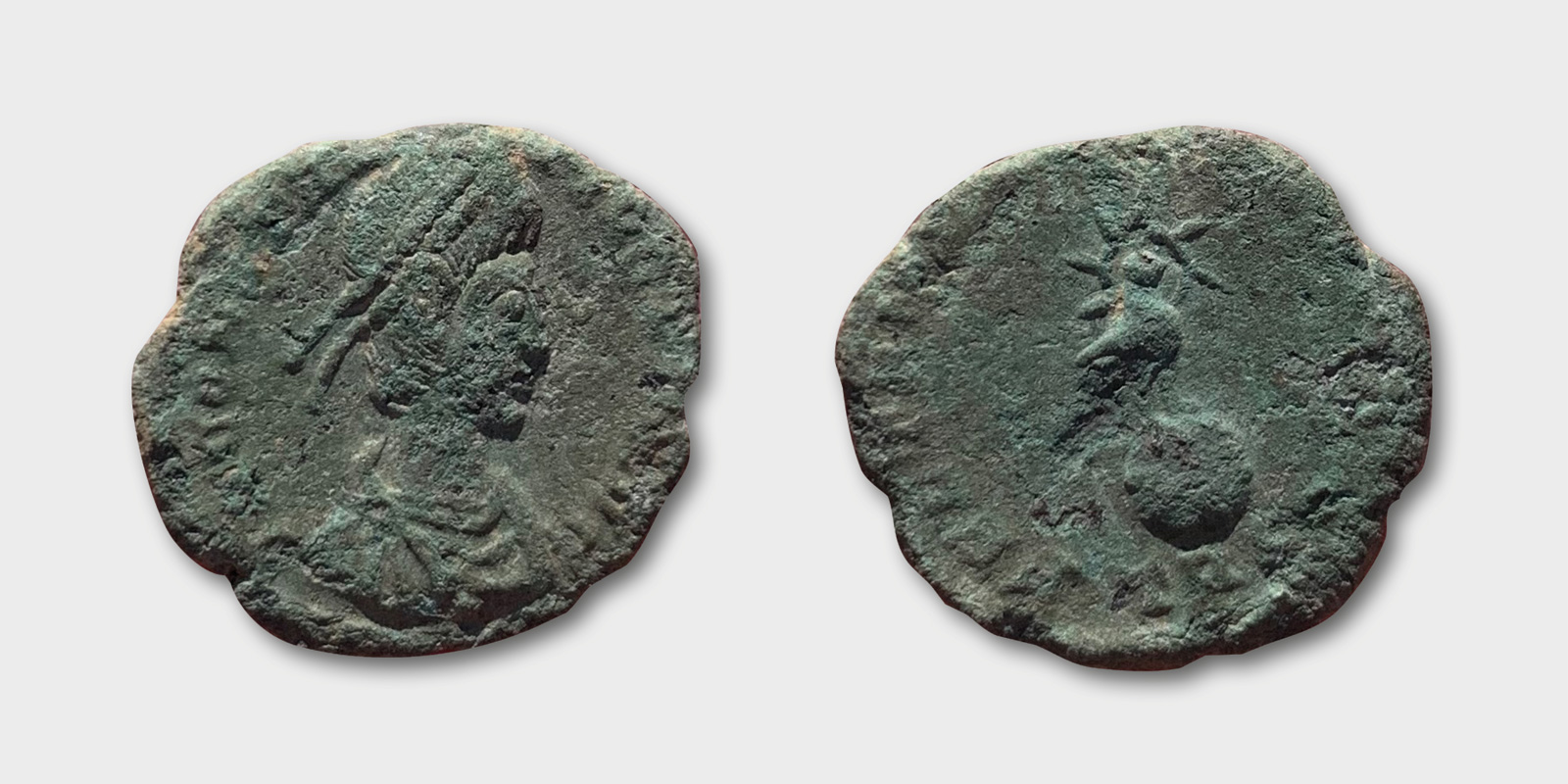
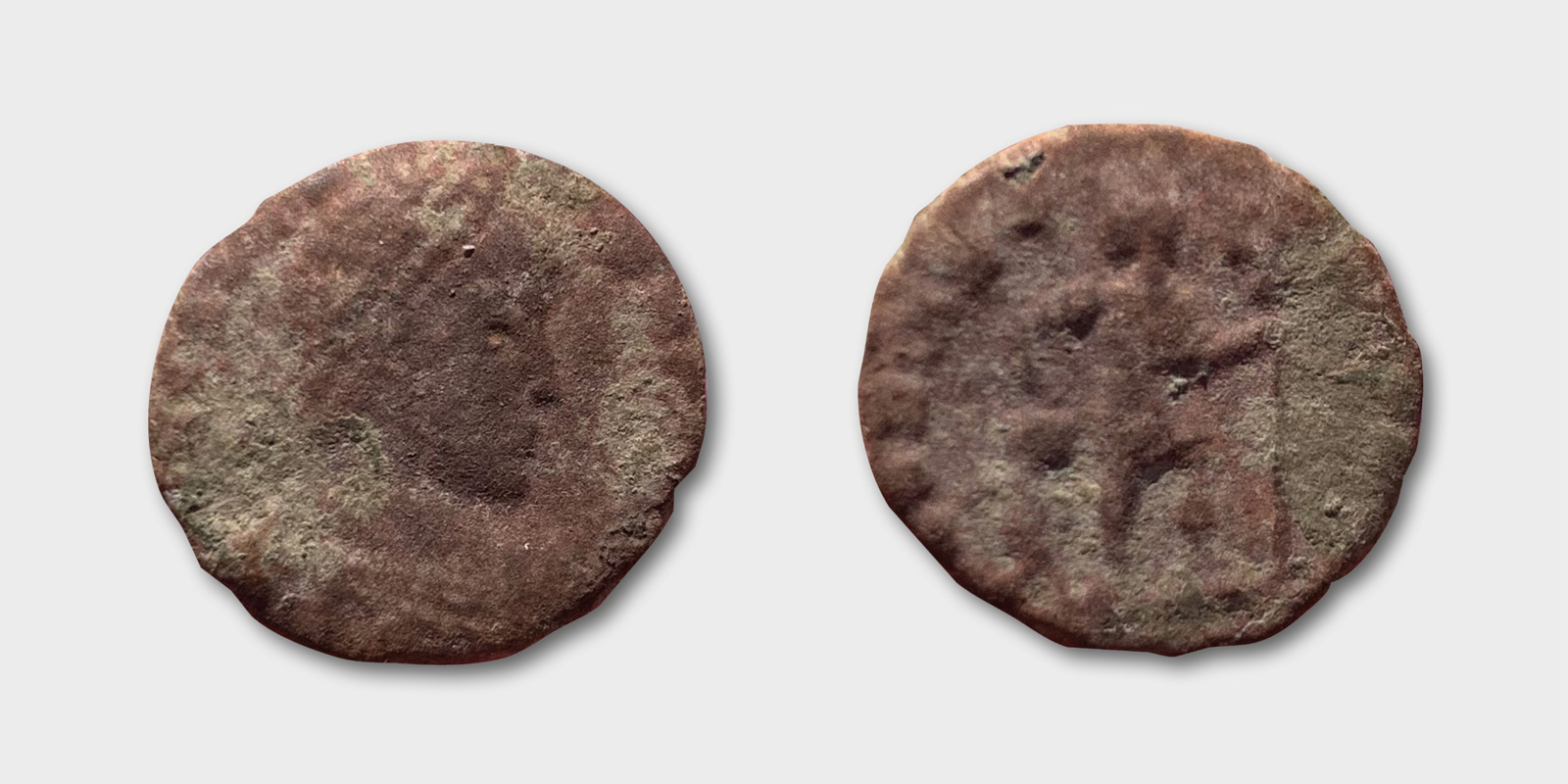
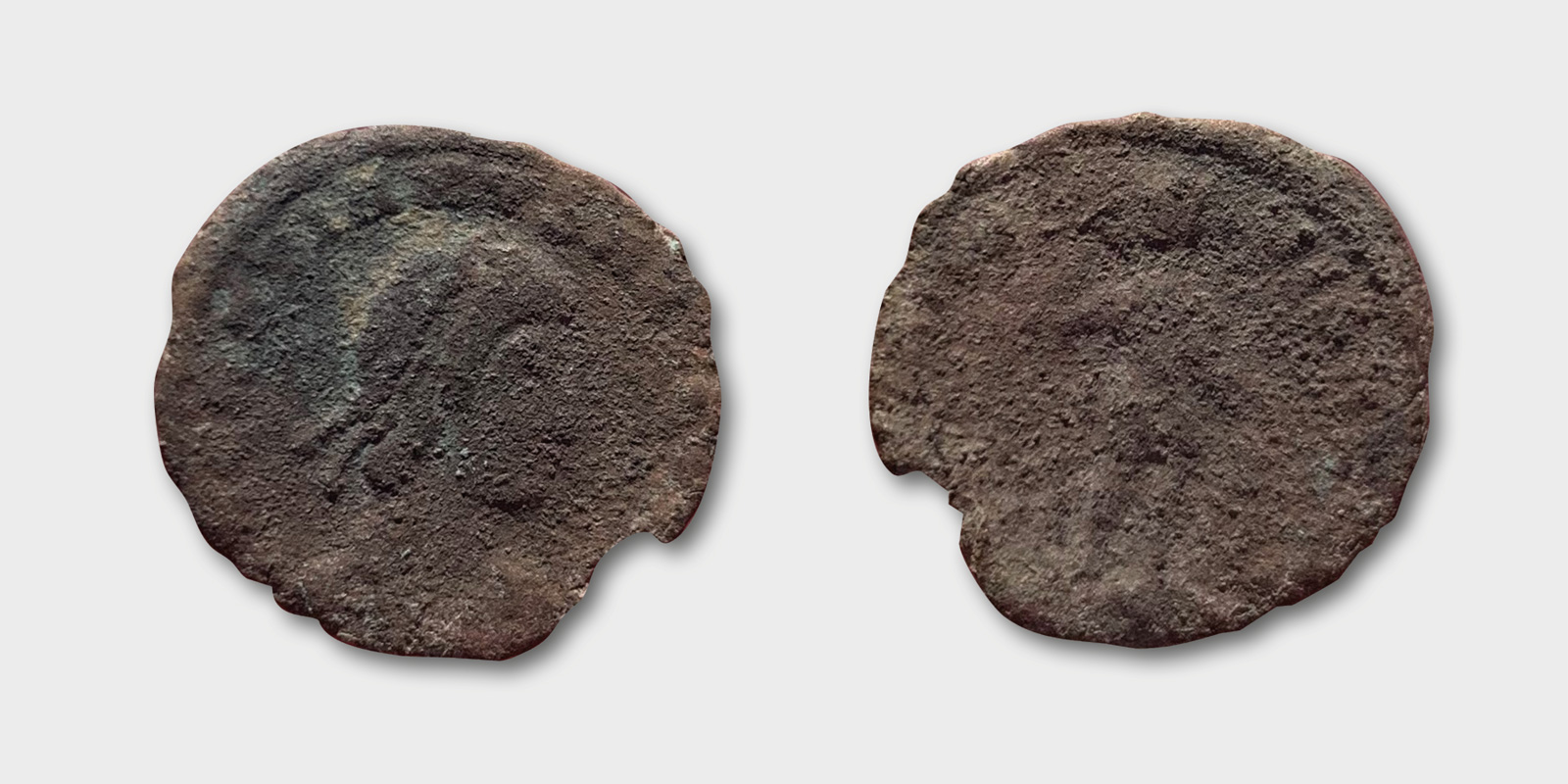
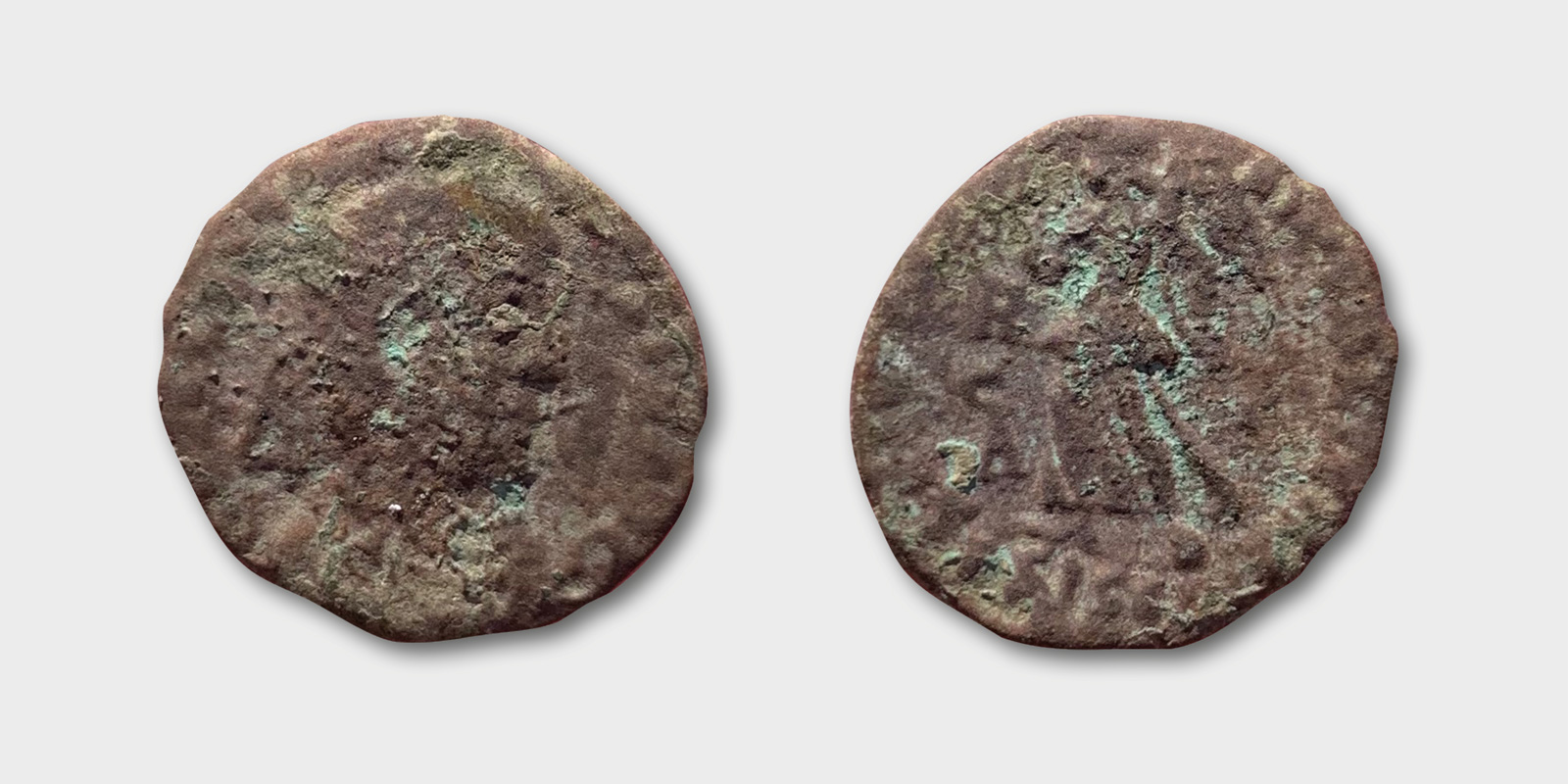
So now I was able to identify the dates of the coins which range from 260-383AD, a good spread spanning well over 100 years of the middle to later end of the Roman occupation. It’s interesting to note that these coins don’t date below 260AD and they were found bang on the border of the square kilometer that I talked about. But there was one coin I was unable to identify using Sam’s book and it turns out there was a very good reason for that, it wasn’t bloody Roman! The coin in question was actually Iron Age, a bronze unit of Cunobelinus (ABC 2969) to be exact, which is great as it means we have our first piece of evidence of habitation before the Roman occupation. It’s quite probable that this site had Iron Age inhabitants that later transitioned to a more Roman way of life and hopefully future finds will further support this.
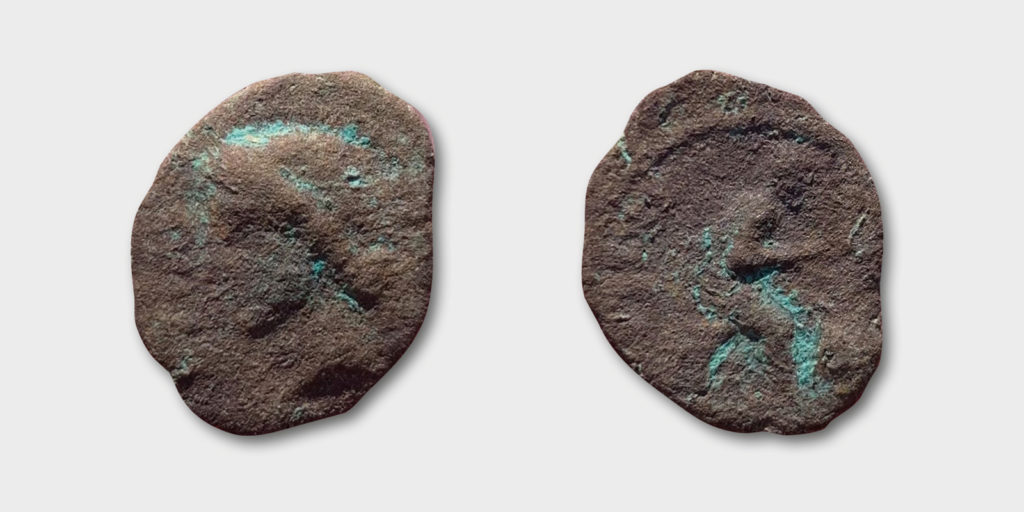
So what are these finds telling us about this particular area? It’s worth noting that the villa in the neighbouring field was thought to be constructed with a low sill of flint and mortar with a timber frame on top with a tiled roof. Previous field waking searches produced evidence of this which led to the site being scheduled. The digging where our finds are coming up is constantly hindered by a lot of flint, tile and iron nails, is it possible there was a Roman building of some sort here as well? Because the field is pasture you can’t see any evidence of this on the surface by doing a field walk. So I decided to ask Keith if he thought it was plausible that a roman building might have been here and if not what other reason might there be for these finds coming up in the same place?
“Roman villa estates were dominated by the big house where the landowner (or his bailiff) and their family lived. But they were not the only buildings. Sometimes the villa would have a detached bath-house or a shrine to a local god and even small structures in their gardens that could have been the equivalent of summerhouses or gazebos. Sometimes, villa buildings come in pairs, often at right angles to each other. But the owners were too grand to farm their estates themselves. Instead, they had slaves or tenant farmers to do the hard work. Their homes would be away from the main villa, perhaps even hidden from view by tall hedges or plantations.”
Keith carried on to say, “What you’ve discovered could be any of these, if it is part of the villa estate. It’s also possible that you’re looking at a neighbouring property, a separate settlement that wasn’t part of a villa estate or maybe a religious site. I think that this is less likely, though, and that what you’ve found is another substantial building on the estate of the known villa.”
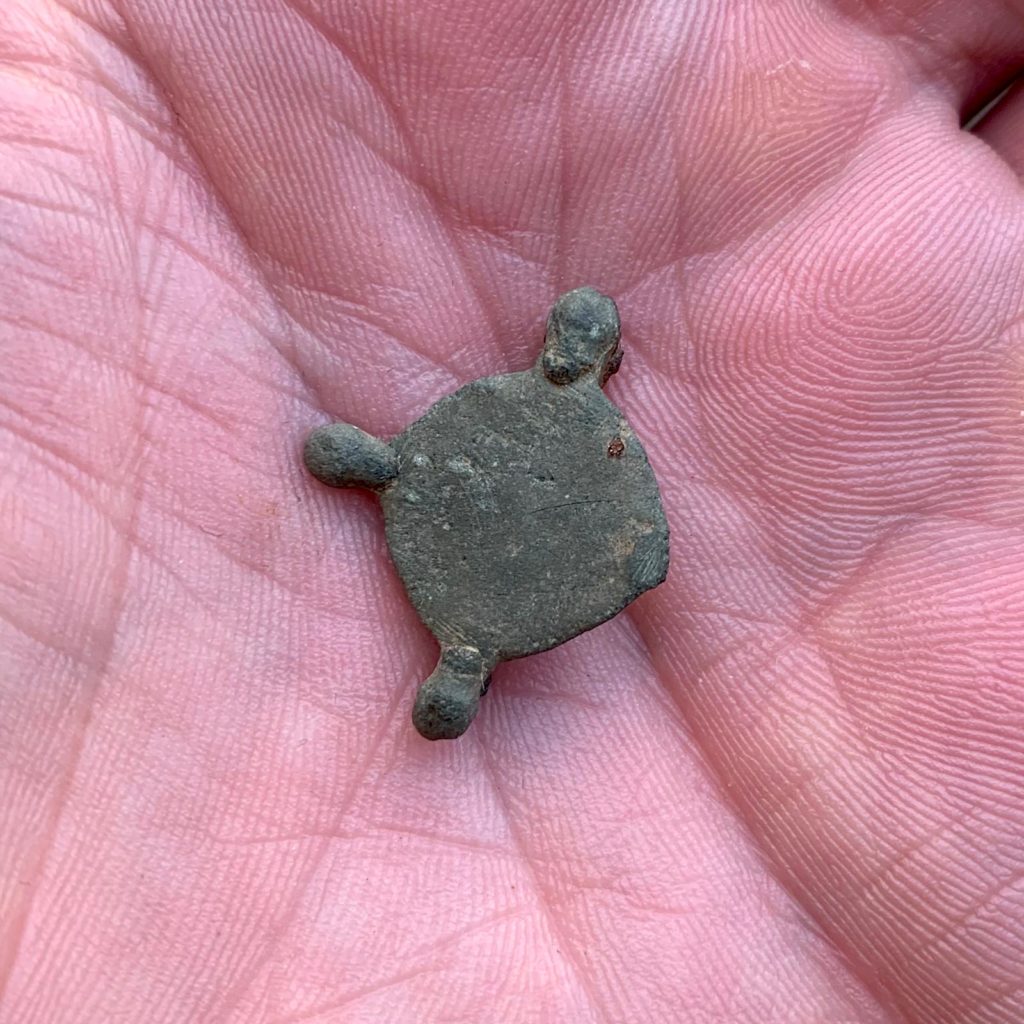
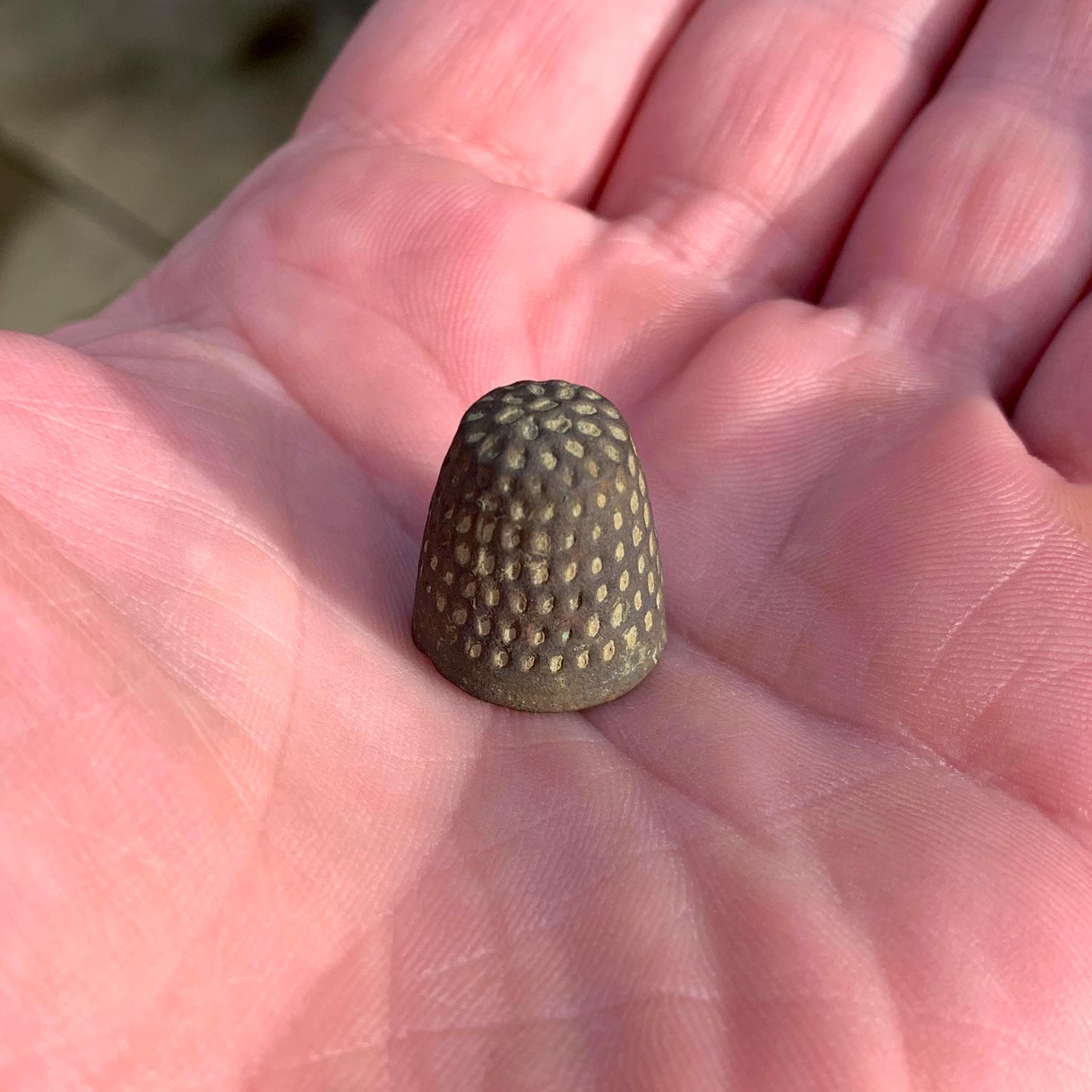
So it appears we may have stumbled on another potential Roman building, very exciting stuff and hopefully we will find more evidence of this as the detecting journey here continues. A few other bits and bobs have come up on this field including my first hammered coin from this permission, a lovely 16th century thimble and the remains of a Roman plate brooch. I also had another bucket lister, my first matchbox car! It’s nothing as grand as a Ford Mustang or Pontiac Firebird but a Kenworth Racing Rig will do very nicely.
My time on this permission is on going so if you want to keep up to date with the things that I find then you can follow my Instagram account where I post the majority of the stuff found from here, so just click on the link below. 🙂
A detectorists best friend
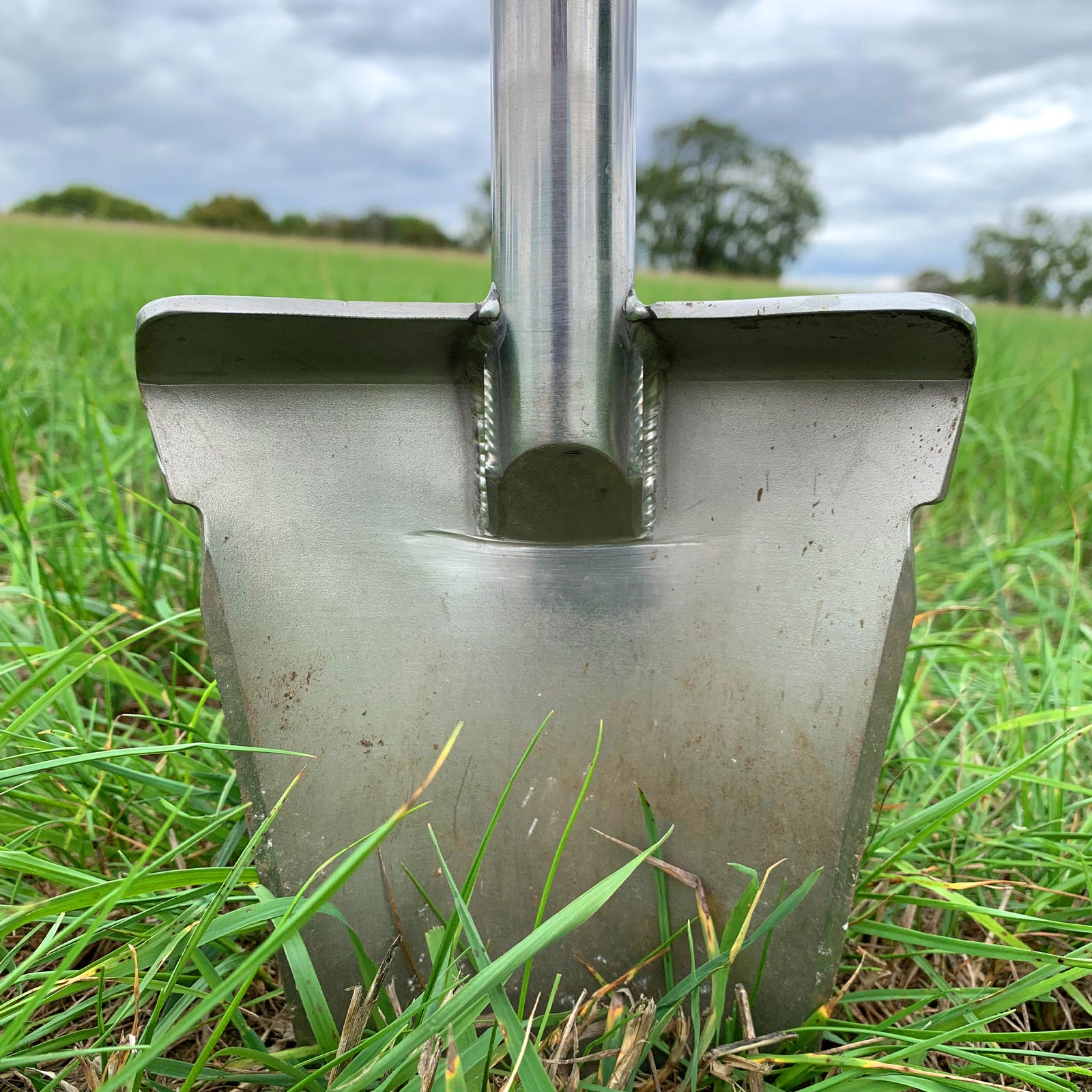
2022 shall be remembered as the year that saw the death of many a detectorists best and trusted friend, the humble spade. Ground conditions in the middle of this year became incredibly hard due to the long hot summer and it got the better of two of my spades in quick succession.
This lead me to doing a lot of research to try and find a new spade that would be up to the job in the toughest of soil conditions come rain or shine. I now find myself writing this blog because I think I may have found just such a spade, so I thought I would give it a little Hertfordshire History Hunter review. It’s funny, if you’d have said to me a few years ago that in the not to distant future I would be writing a review about a metal detecting spade then I would have laughed in your face, stranger things, eh!
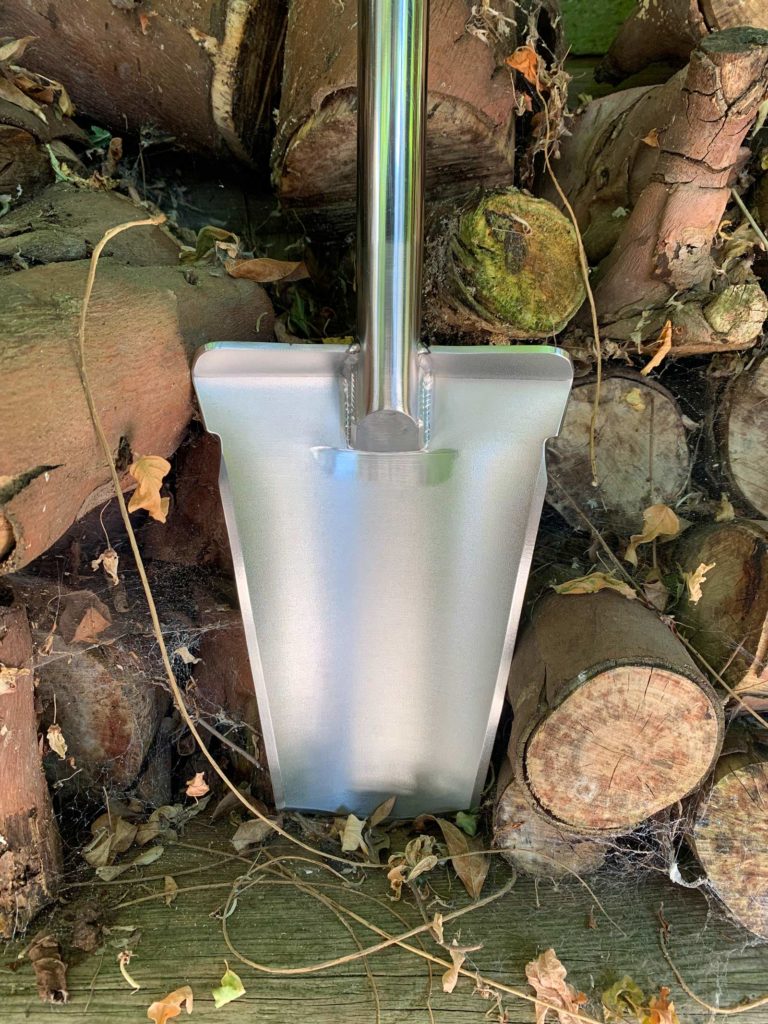
Still, here we are and the spade in question is a hand made product by NobleMDT. After spending many hours trawling the internet for a new spade I finally came across this one on a fellow detectorists instagram account. The owner of this instagram account had just bought the spade after suffering the same issues that I had and he spoke very highly of it so I decided to check it out for myself.
NobleMDT has a dedicated Facebook page and an eBay shop where you can purchase their spades. Produced by Carl Griffin they are all hand made using high quality 316/304 stainless steel, which as I am finding out makes these spades incredibly strong. They come in a few variations where you can choose between a D or T type handle and the blade can be straight edged or with a serrated root cutter.
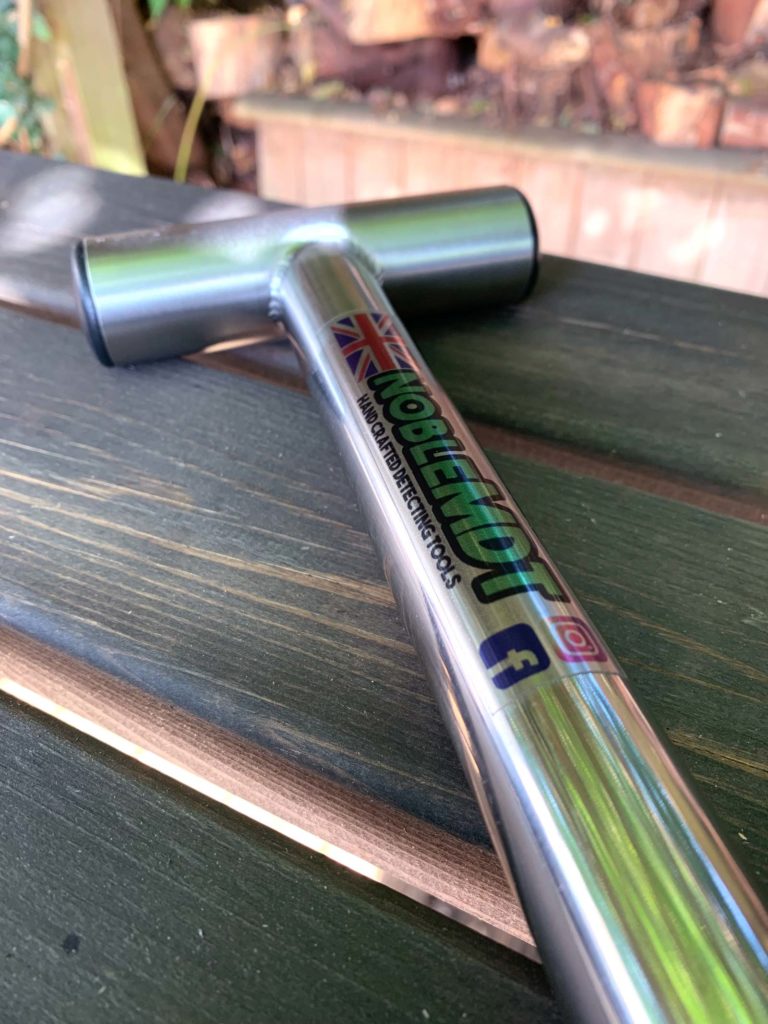
I chose the T type handle with the straight edged blade as this was similar in style to the previous spade I had which I had grown to love, even though it failed when the ground got tough (twice!). On first inspection when the spade arrived it looked and felt like a quality product, I loved the simplicity of the design and the welding is second to none, it’s obvious that a lot of love and care goes into making these spades. The fact that Carl is a detectorist shows as well, as these spades have been made specifically for the hobby which does make a big difference. Carl’s customer service is also worth mentioning as he was more than happy to answer my questions before I purchased the spade which was great.
On it’s first outing I threw it in at the deep end on the same hard ground that saw the demise of my last two spades. I was a little apprehensive at first but it didn’t take long for me to realise that this spade was well up to the task. That’s not to say that this spade won’t have it’s limits, of course it will, but those limits seem to be much higher.
With the conditions as hard as they have been this summer the slightly pointed end of the blade is great for initially peircing the ground. After that it always takes a heavy foot to move the blade back and forth to cut deeper into the ground which this spade does really well. This is in part due to the boot savers seamlessly forming the top part of the blade so you are able to put your weight and pressure right where it needs it to be able to cut through the tough ground. The boot savers on the spades I had before were located higher up the shaft which I believe was partly to blame for those blades buckling because the weight and pressure was being applied in the wrong place.
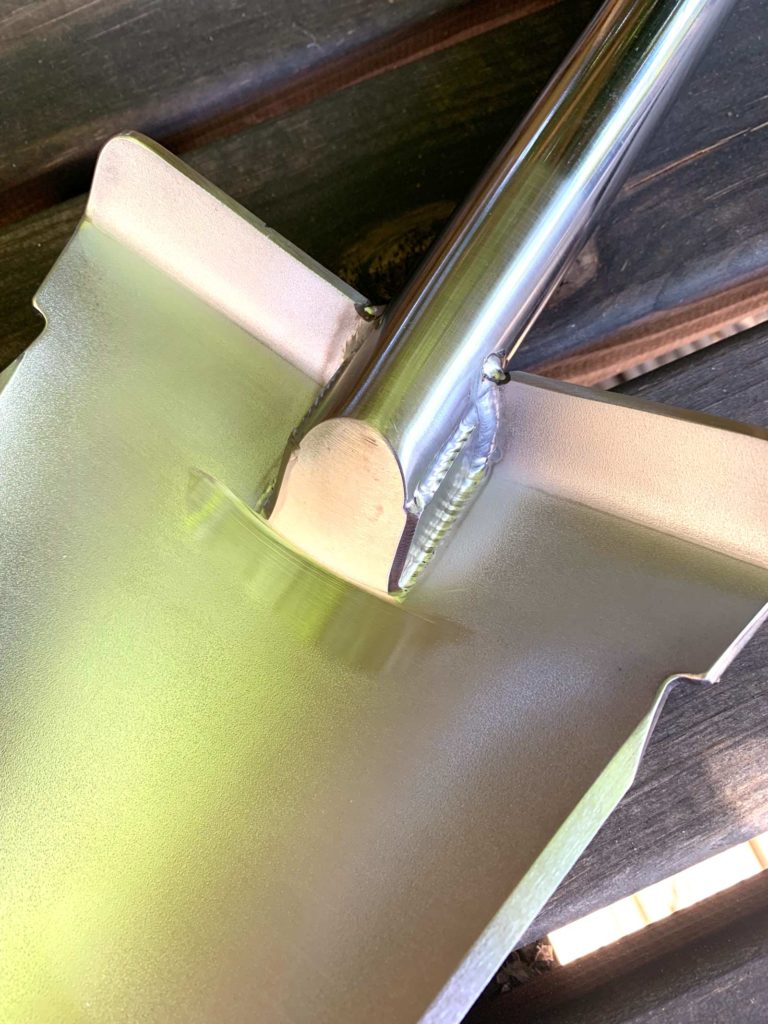
I always thought that the blades on my previous spades at 2mm thick seemed a little on the flimsy side which I think was done to compensate for the added weight of the boot saver. The blade on the Noble is 3mm thick and together with a generous concave and the clever design which sees the seamless boot saver form part of the main shaft weld makes for an incredibly strong spade.
The overall length of the spade at 35 inches is a little shorter than my previous one bit it’s still comfortable to use, my only niggle is that the T handle could be a bit wider so I can grab it with both hands when digging. At 1.4kg it’s lighter than my previous spades and I have no trouble carrying it around for hours on end whilst listening out for those perfectly toned beeps that get the heart racing.
Overall this is a great quality product, designed and hand made by a detectorist for detecorists, which lets be honest makes it feel that little bit more special! I’ve only had the spade for a few months but those months have been the hardest ground conditions I have experienced as a detectors yet and it’s sailed through with no bends or buckles. I have a feeling that this spade will be with me for many years to come, a trusted friend that I can rely on to dig treasures out of many a hole, along with tractor parts, canslaw, ring pulls, nails, shot gun caps, mint viscount wrappers… you all know the score!
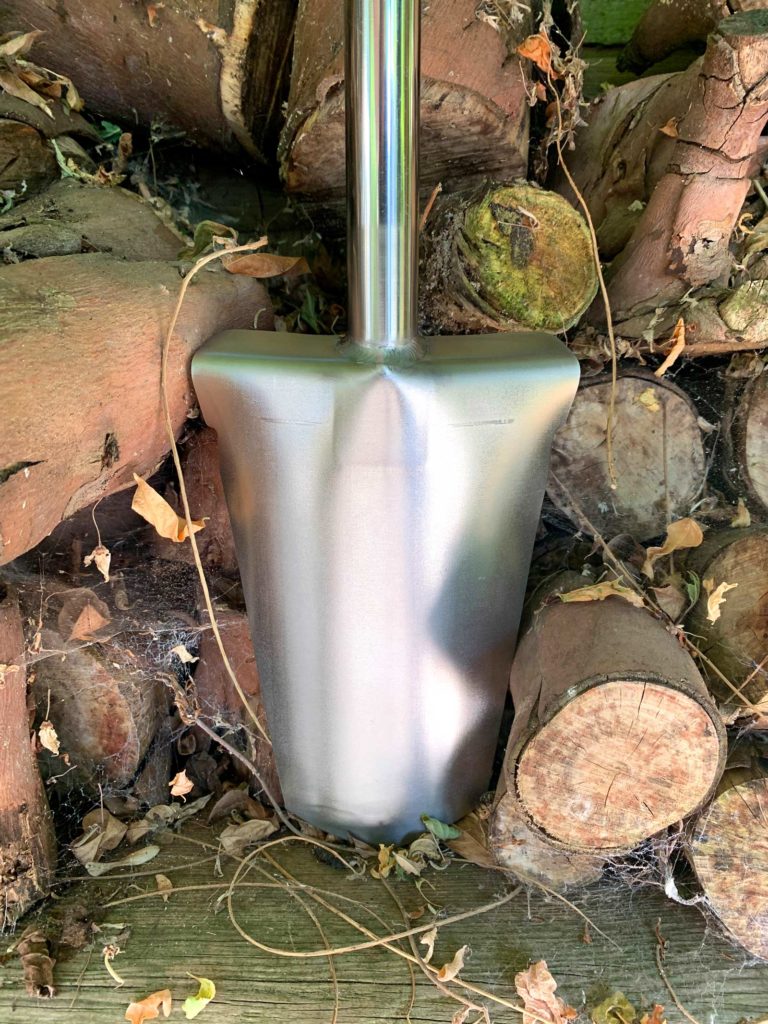
Priced at £66.50 for the T handle and £68.50 for the D handle (with no extra cost for the optional root cutters) these spades are at the higher end of the market, but in my opinion they are well worth the money. If you want to take a look at NobleMDT spades then head over to their Facebook page on the link below, it’s always a good thing when we can support a small British business making a quality product, especially in these tough times!
Writing is now a hobby!
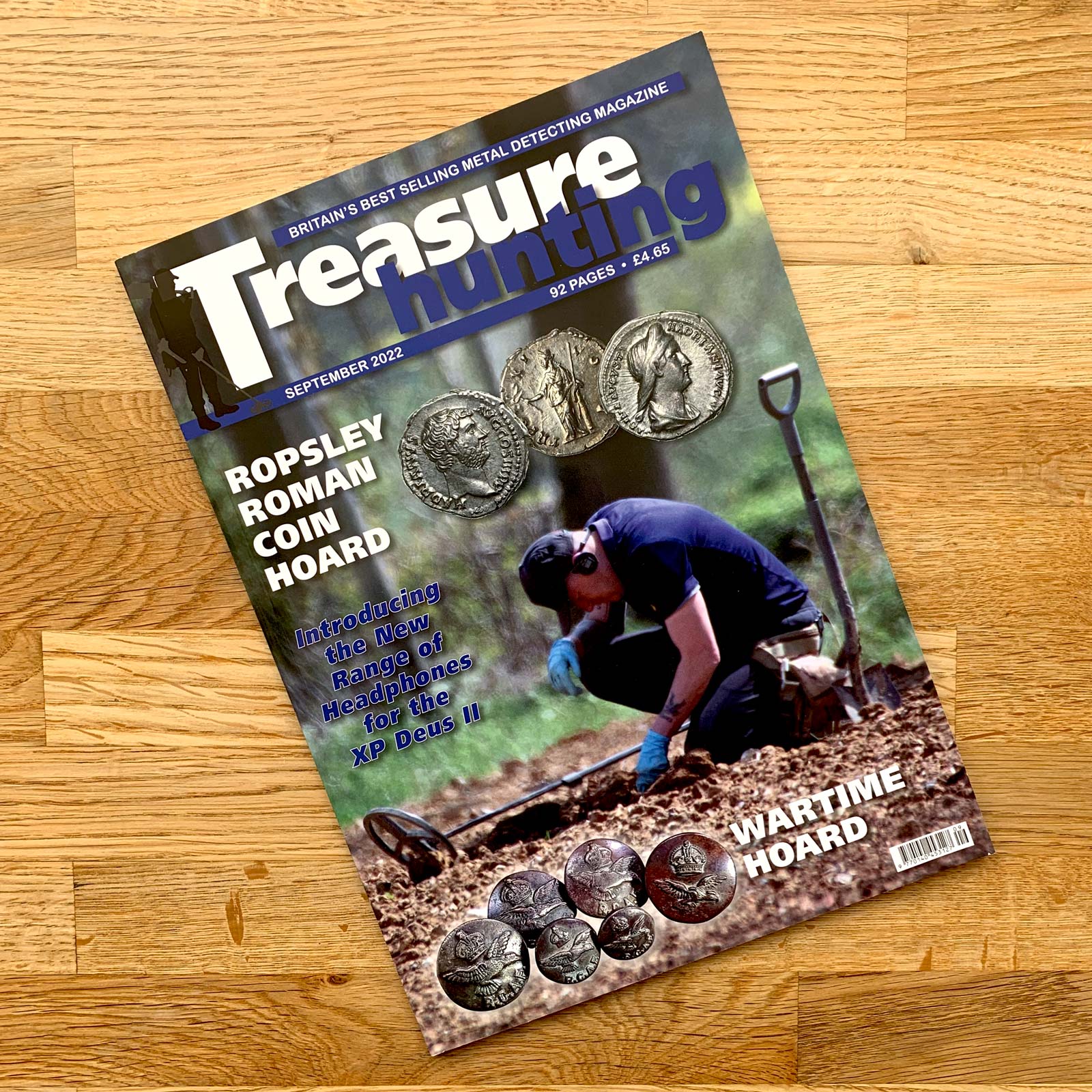
Since I started metal detecting again back in September 2021, I have become so passionate about it that I felt compelled to write about it. This gave birth to the Hertfordshire History Hunter blog in which I write about the things I find and the experiences I encounter. Writing the blog has also been a stepping stone into the publishing world, as I now write regularly for Treasure Hunting Magazine as you can see here with my fourth outing in it’s hallowed pages.
Never in a million years did I ever have think that I would enjoy writing as much as I do, let alone have any of my ramblings actually published. It just goes to show that creativity can be found lurking in places you would never have thought to look.

Having a passion for writing about metal detecting is a great way for me to stay involved in the hobby when I’m unable to actually go out and detect. Take this summer for instance, the hot dry weather has made it almost impossible to dig so writing has been the next best thing and for me it is almost as enjoyable as being out in the fields.
Almost as enjoyable? I say almost, because although I do enjoy writing I don’t get the same buzz from it that I do from being out in the fields unearthing a good find. But actually I need to correct myself here because there is quite a big buzz to be had from seeing my articles published, and there is an extra buzz when I make it onto the contents page as I have in this issue!
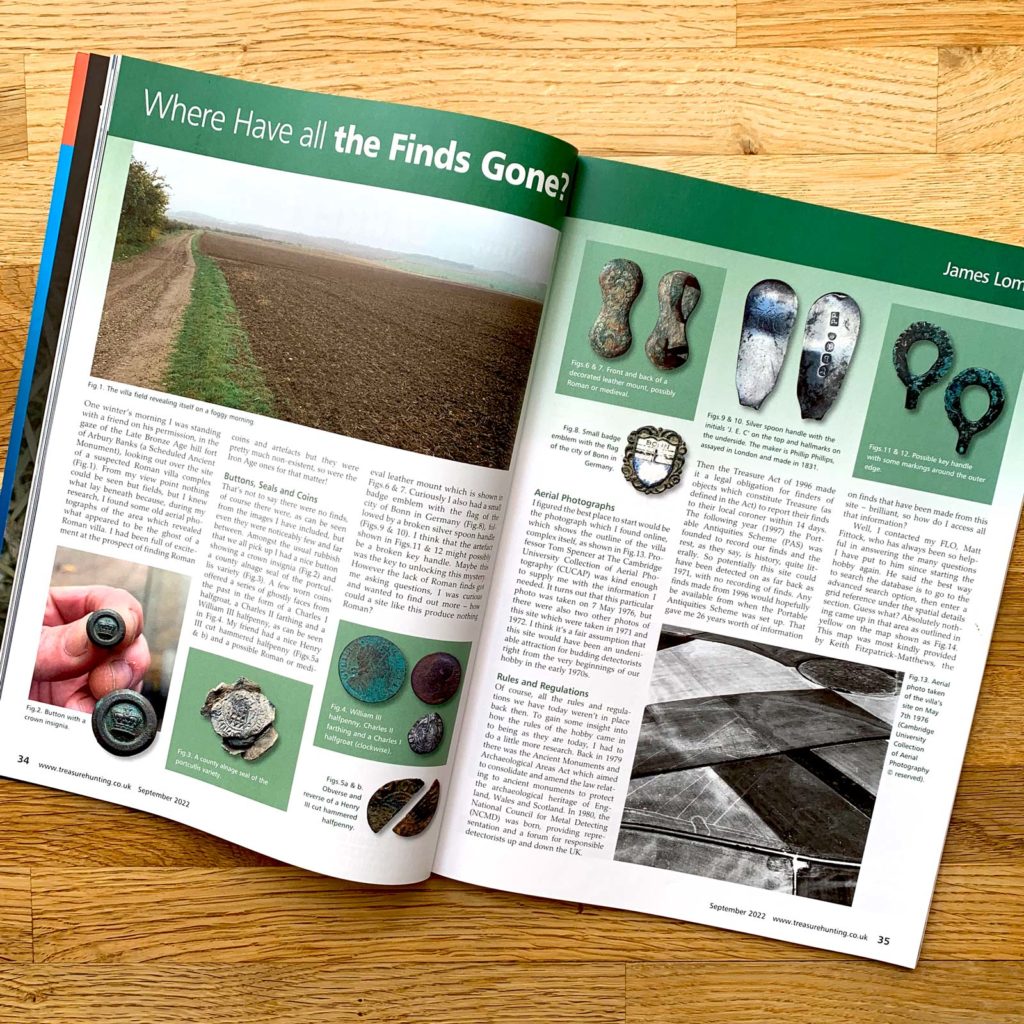
I’m grateful to this hobby for so many reasons, but mostly because it makes me happy. Having a pastime that I think about and take part in, in such a positive way has been a revelation for my mental wellbeing which I see filtering into and enhancing other parts of my life.
My Hertfordshire History Hunter persona has now expanded into a branded Instagram account which currently has well over 2000 followers. This has lead to even more opportunities opening up which is hopefully taking me into the incredible world of archaeology (follow the Hertfordshire History Hunter blog or Instagram account for more on this later in the year).
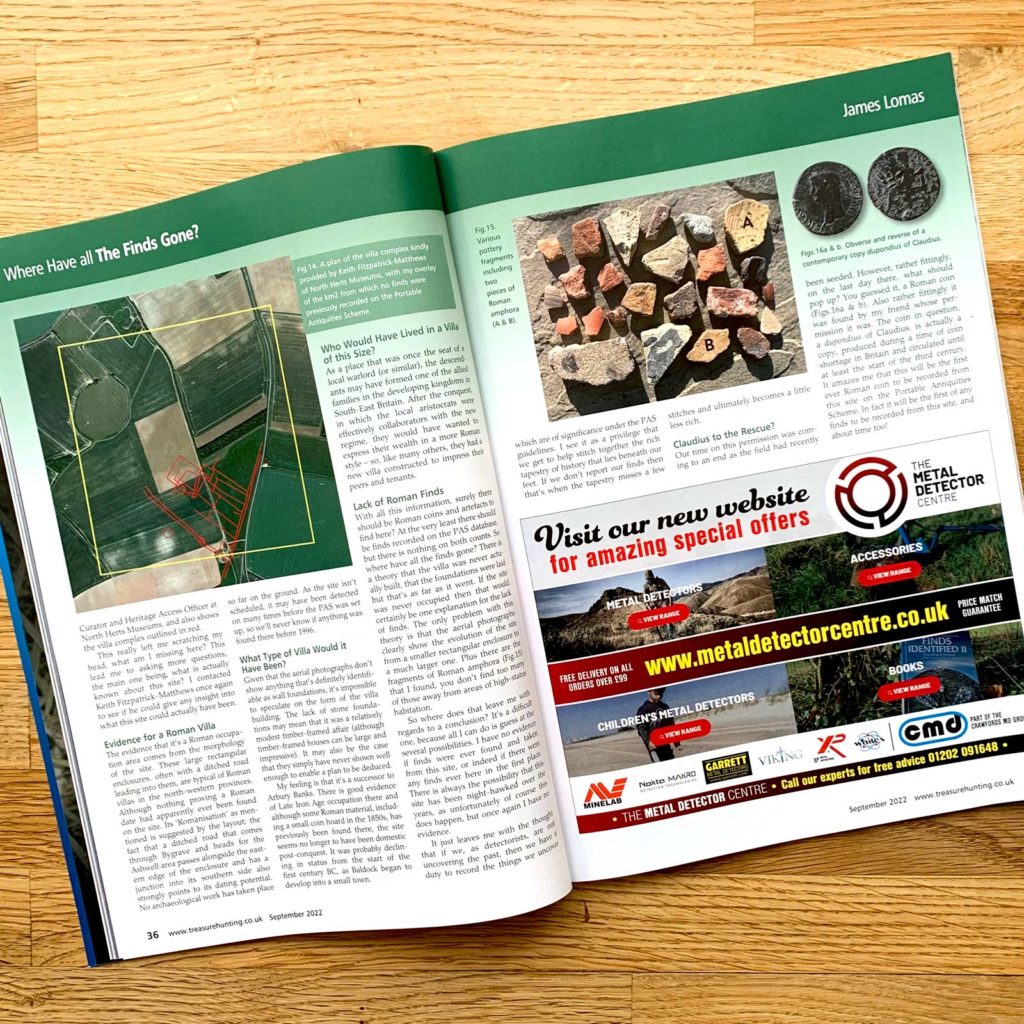
For now though I’m just happy to think of myself a dedicated detectorist, and hopefully anyone who follows the Hertfordshire History Hunter enjoys the content as much as I enjoy creating it.
Where are all the finds?
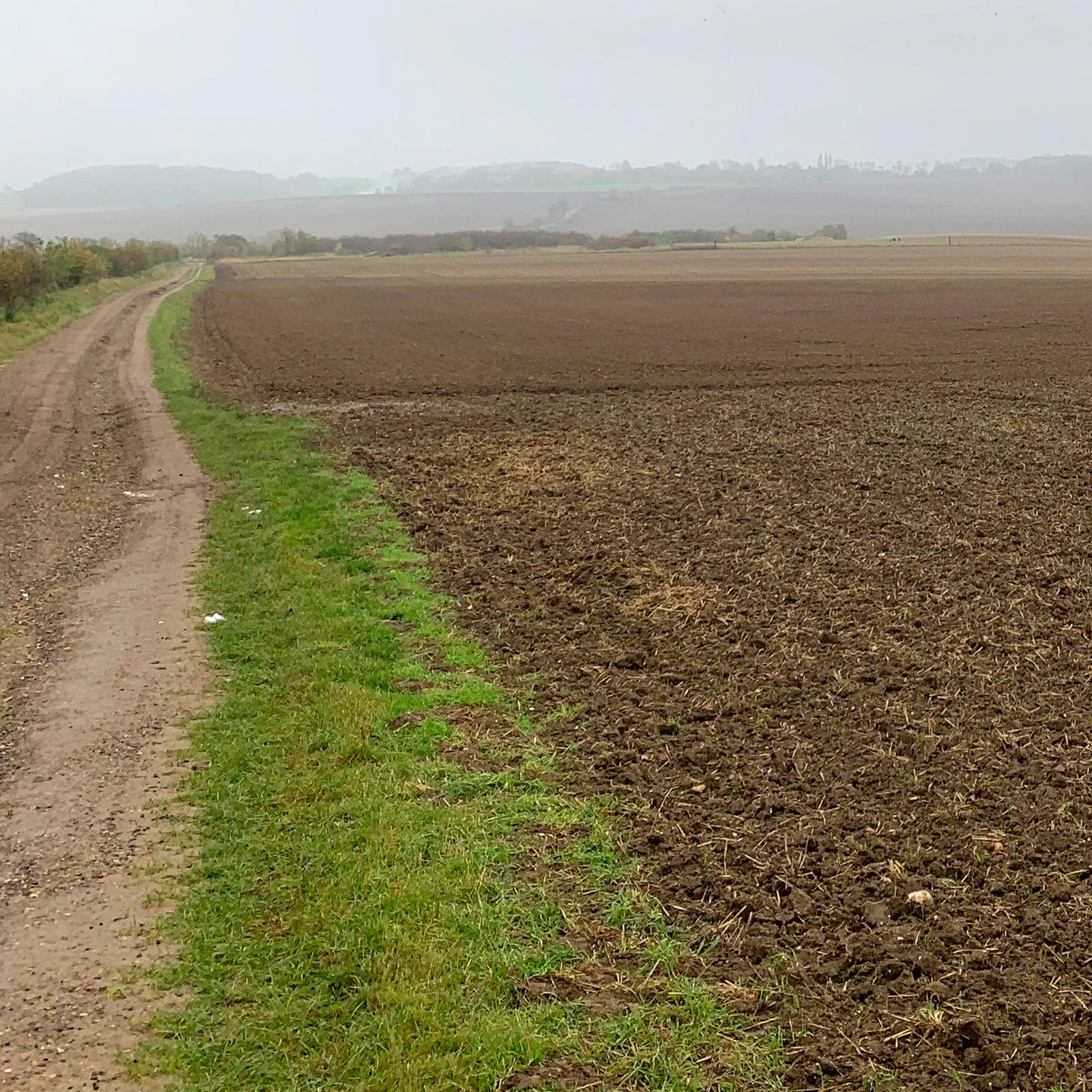
One sunny winter’s morning, I was standing with a friend on his permission, in the gaze of the late bronze age hill fort of Arbury Banks, (a Scheduled Ancient Monument) looking out over the site of a suspected Roman villa complex. From my view point nothing could be seen but fields, but I knew what lay beneath because during my research I found some old aerial photograph’s of the area which revealed what appeared to be the ghost of a Roman villa.
My friend made a comment about this permission before we went, he said “it’s a great place but it has been detected to death”. Alarm bells always ring when you hear a comment like that but it’s because of this and the subsequent outings on this permission that I feel compelled to write about it, as it left me with a certain amount of dissatisfaction. I know all too well the feeling of researching a site and then having expectations which are then ultimately let down, maybe I should learn to curb my enthusiasm in the future.
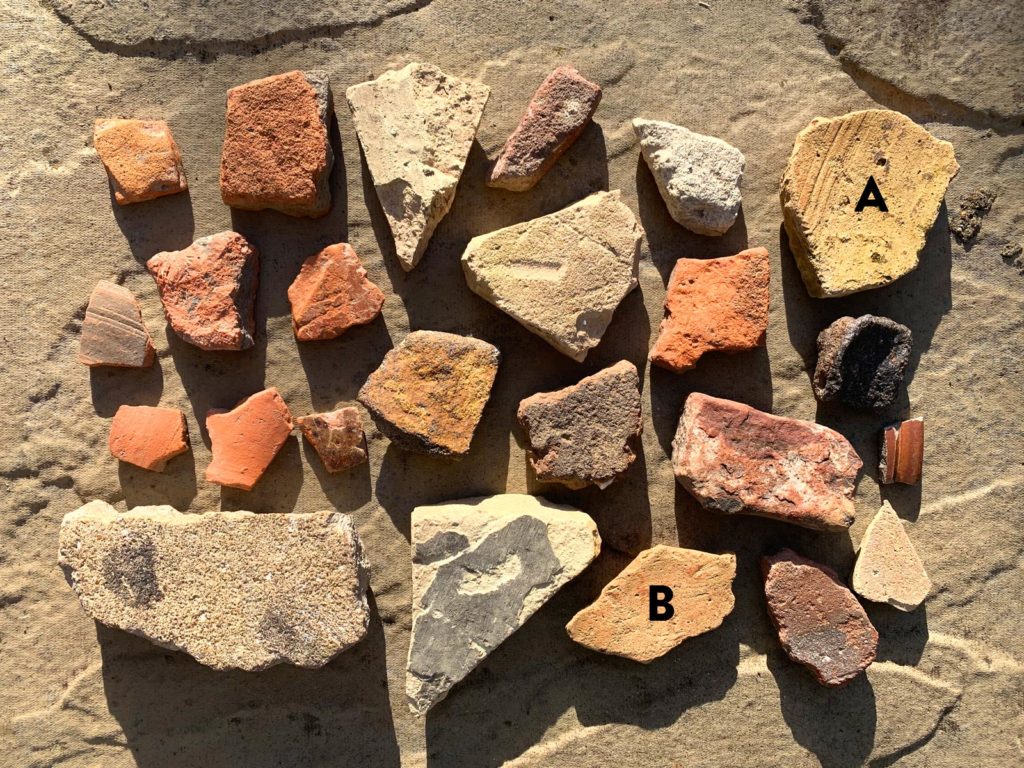
Much like the surveys I did for Keith at North Herts Museums I was full of excitement at the prospect of finding roman coins and artefacts but also like those surveys the roman finds were pretty much non existent, so were the Iron Age ones for that matter! That’s not to say there were no finds, of course there was as you can see from the pics I have included, but even those were few and far between. The clues were there because as well as the aerial photo’s, I also found some Roman pottery, specifically broken parts of Amphora (Fig.1), the containers Roman’s used for transporting goods such as wine and oil.
This got me asking questions and I wanted to find out more, how could a site like this produce nothing Roman, unless like the Purwell Roman site it had been hawked and cleaned out over the years. So where to start? I figured the best place would be the photo which I found online that shows the outline of the villa complex itself. If I could find out the date the photo was taken then I could use that as the base of a possible timeline from when this site was publicly known about and subsequently detected on.
The photo was attributed to The Cambridge University Collection of Aerial Photography (CUCAP), so I contacted them to see if I could find out anymore information. Professor Tom Spencer was kind enough to reply and supply me with the information I needed. It turns out that this particular photo was taken on 7th May 1976 (click the link above to view), but there were two other photos of this site which I enquired about and they had been taken in 1971 and 1972 respectively also showing the villa outline.
Another interesting feature to note is the shoe-shaped anomaly at the bottom of the photograph that isn’t marked up on the map shown in Fig.2, as it’s not part of the villa complex. It’s most likely the ditch of a completely ploughed-out Neolithic long barrow.
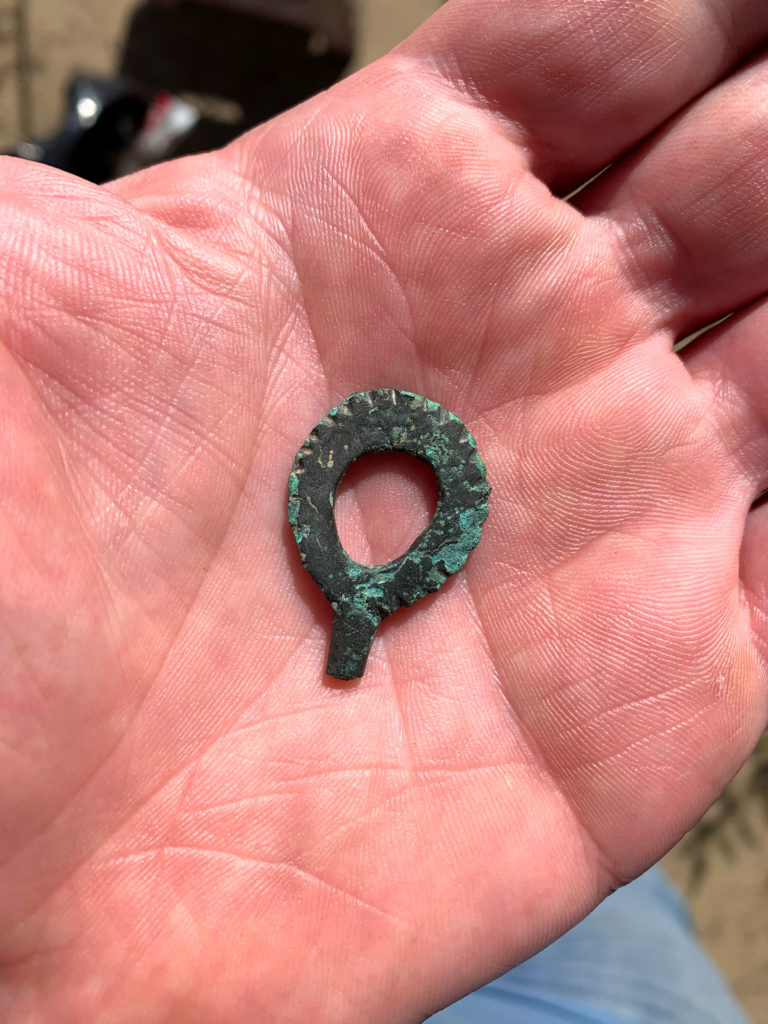
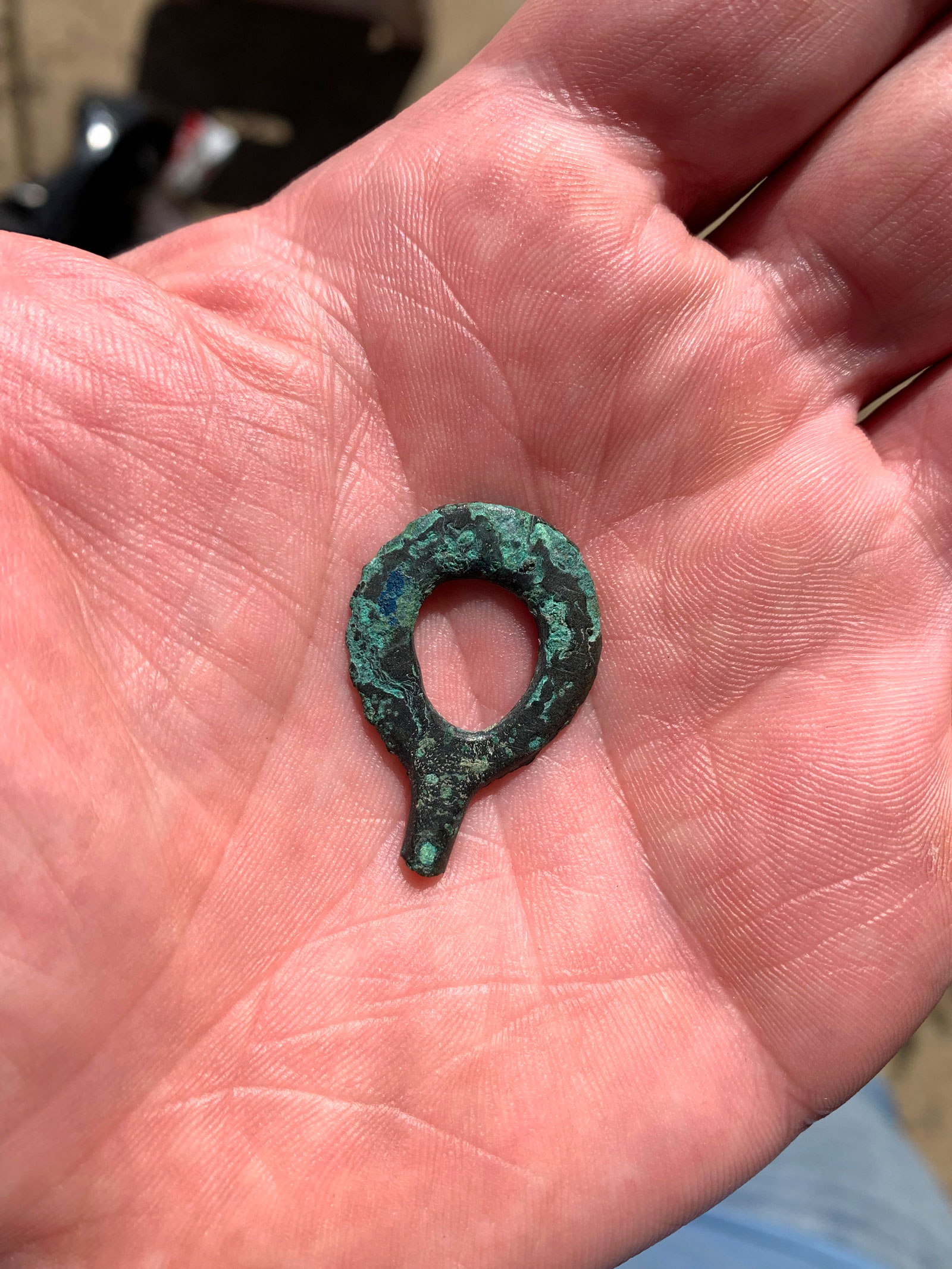
I think it’s a fair assumption that this site would have been an undeniable attraction for budding detecorists right from the very beginning’s of our hobby in the early 1970’s. Such was the growing popularity of detecting back then that towards the end of the decade the ’STOP’ (Stop Taking Our Past) campaign was launched, because there were some in the archaeological community that had their concerns about metal detecting and how historical items were being removed from sites and not being properly recorded.
This is partly because the rules and regulations we have in place today weren’t in place back then. To gain some insight into how the rules of the hobby came in to being as they are today, I had to do a little more research.
Back in 1979 there was the Ancient Monuments and Archaeological Areas Act which was to consolidate and amend the law relating to ancient monuments to protect the archaeological heritage of England & Wales and Scotland. In 1980 the National Council for Metal Detecting (NCMD) was born providing representation and a forum for responsible detectorists up and down the UK. Then the Treasure Act of 1996 made it a legal obligation for finders of objects which constitute as treasure (as defined in the Act) to report their finds to their local coroner within 14 days. The following year (1997) the Portable Antiquities Scheme (PAS) was founded to record our finds and the rest as they say is history, quite literally!
So potentially this site has been detected on with no recording of finds from at least 1971. Any finds made from 1996 would hopefully be available from when the Portable Antiquities Scheme was set up. Potentially that gave me 26 years’ worth of info on finds that have been made from this site, brilliant, so how do I access all that info?
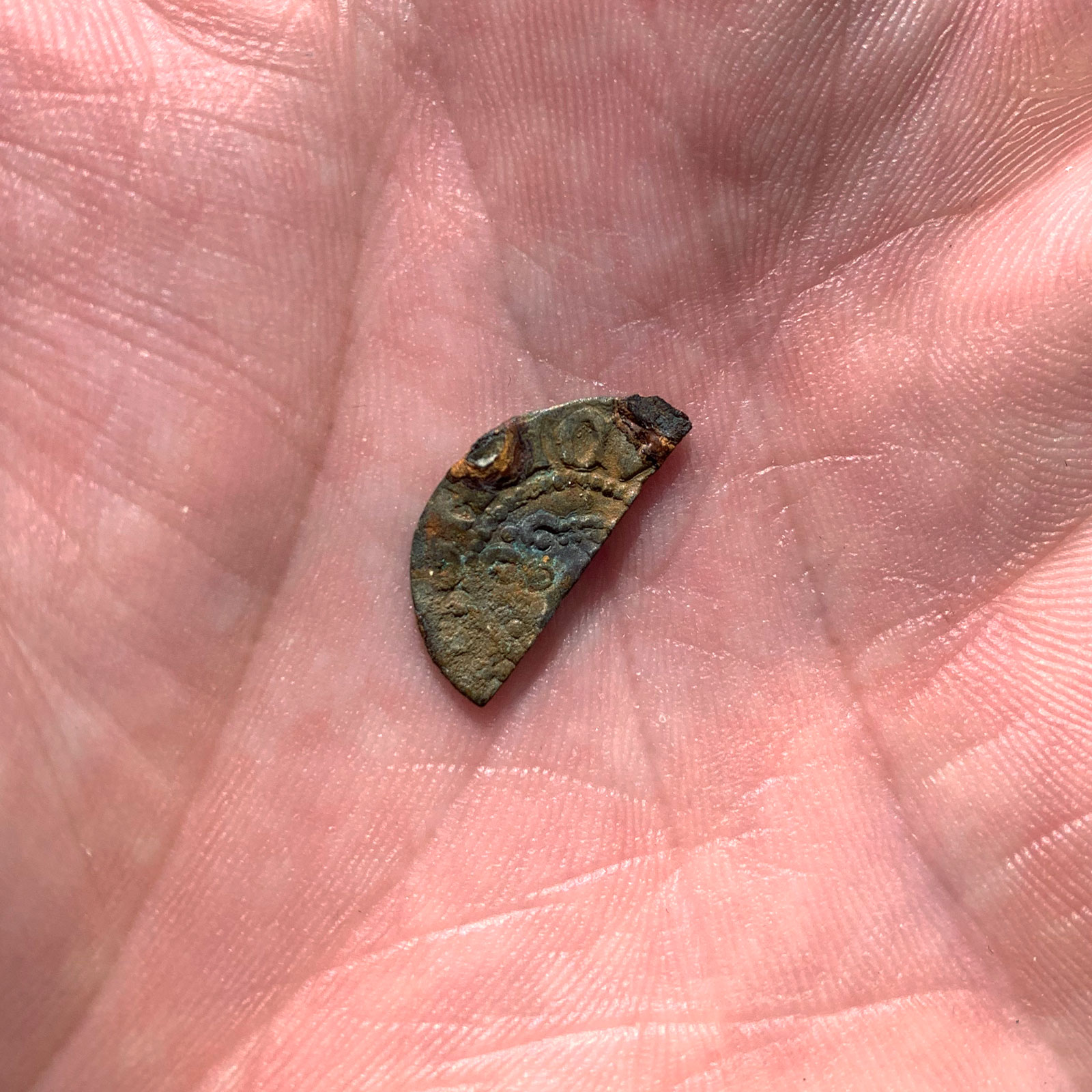
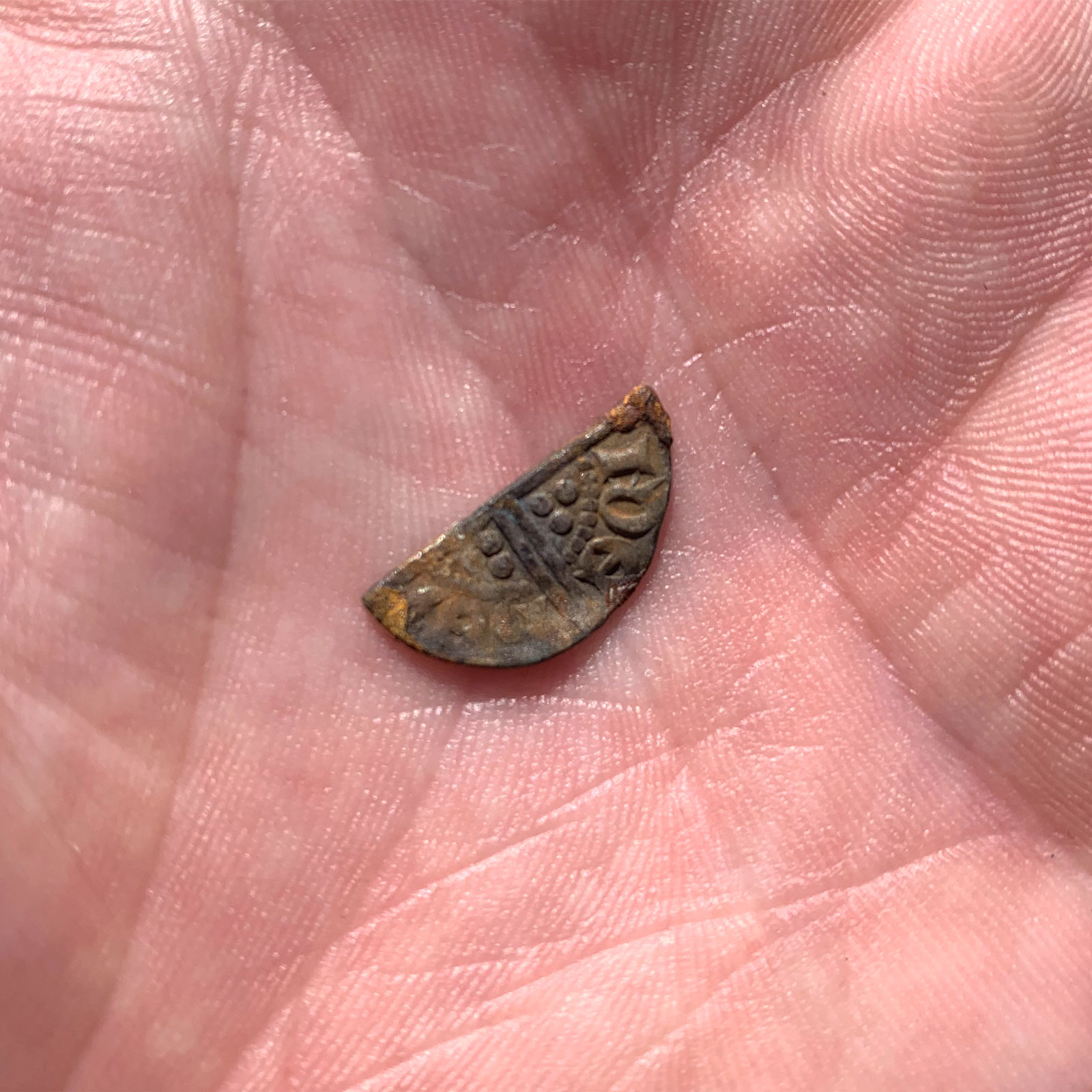
It’s at this point I contacted my FLO Matt Fittock who has always been so helpful in answering the many questions I have put to him since starting the hobby again. I asked if there was a way to use the PAS data base to find out what finds had been recorded in a specific area. He said the best way to search the database is to go to the advanced search option, then enter a grid reference under the spatial details section. Because this way of searching is based on a specific grid reference, if anything has been found and recorded within that reference then it will show up. Guess what… nothing came up!
I was dumbfounded, not one single record, Roman or otherwise is listed on the PAS data base as coming from this site. To give you an idea of the scale of this, I overlayed the km2 reference in yellow on the map of the villa site as shown in Fig.2 which was kindly provided by Keith Fitzpatrick-Matthews at North Herts Museums. How is it possible that no finds have been recorded if this site has been “detected to death”?
This really left me scratching my head, what am I missing? Perhaps this site isn’t a Roman villa after all? This lead me to asking more questions, the main one being what is actually known about this site? Once again this meant contacting Keith at North Herts Museums to see if he could give any insight into what this site could actually have been.

Keith was yet again very kind and generous with his replies to my questions, the first one being…
What evidence is there that this is a Roman Villa?
The evidence that it’s Roman comes from the morphology of the site. These large rectangular enclosures, often with a ditched road leading into them, are typical of Roman villas in the northwestern provinces. Although nothing proving a Roman date has been found on the site, the layout, and the fact that a ditched road that comes through Bygrave and heads for the Ashwell area passes alongside the eastern edge of the enclosure and has a junction into its southern side strongly point to its date.
What archaeological surveys have so far taken place on this site?
No archaeological work has taken place on the ground. As the site isn’t Scheduled, it may have been detected on quite legally many times before the PAS was set up, so we’ll never know if anything was found there before 1996.
What type of villa would it have been?
Given that the aerial photographs don’t show anything that’s definitely identifiable as wall foundations, it’s impossible to speculate on the form of the villa building. The lack of stone foundations may mean that it was a relatively modest timber-framed affair (although timber-framed houses can be large and impressive). It may also be the case that they simply have never shown well enough to enable a plan to be deduced.
My feeling is that it’s a successor to Arbury Banks. There is good evidence of Late Iron Age occupation there and although some Roman material has been found there, the site seems no longer to have been domestic after the conquest (indeed, it had been going into decline from the start of the first century BC, as Baldock developed as a town).
Who would have lived in a villa of this size?
As a place that was once the seat of a local warlord (or similar), the descendants will have formed one of the allied families in the developing kingdoms in southeast Britain. After the conquest, in which the local aristocrats were effectively collaborators with the new regime, they would have wanted to express their wealth in a more Roman way, so like lots of others, they had a new villa built to impress their peers and tenants.
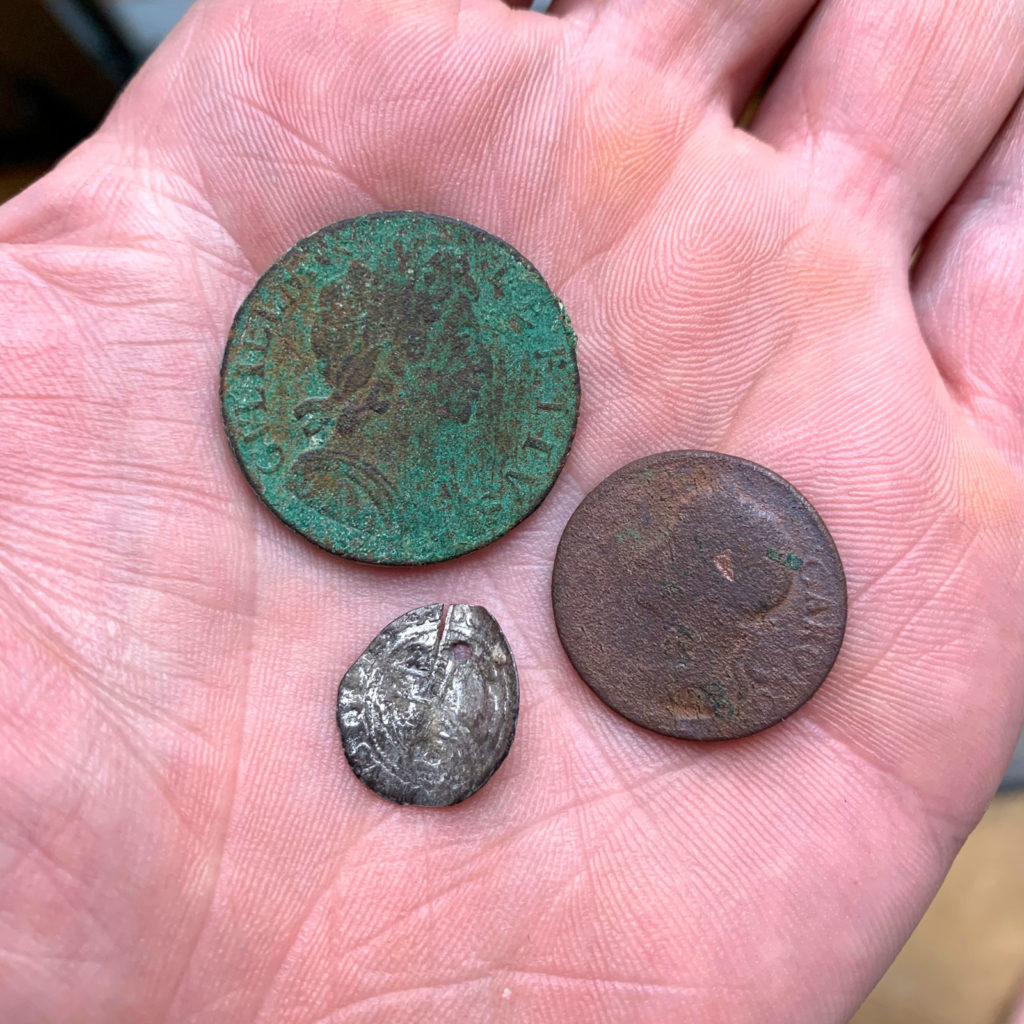
So with all this information, surely there should be Roman coins and artefacts to find here and at the very least there should be finds recorded on the PAS database, but there is nothing on both counts. So where have all the finds gone?
There is a theory that the villa was never actually built, that the foundations were laid but that’s as far as it went. If the site was never occupied then that would certainly explain the lack of finds. The only problem with this theory is that the aerial photographs clearly show the evolution of the site from a smaller rectangular enclosure to the much larger one. Plus there are the fragments of Roman amphora that I found, you don’t find too many of those away from high status habitation.
As a side note, there is also another theory that Arbury Banks is the site of “The Battle of Watling Street” where Boudica was famously defeated by the Romans. If such a battle had taken place here then surely there would be some scattered military remnants of that fight? Again the lack of finds might suggest the battle took place else where, but it is an interesting theory which you can read about by clicking on the link above.
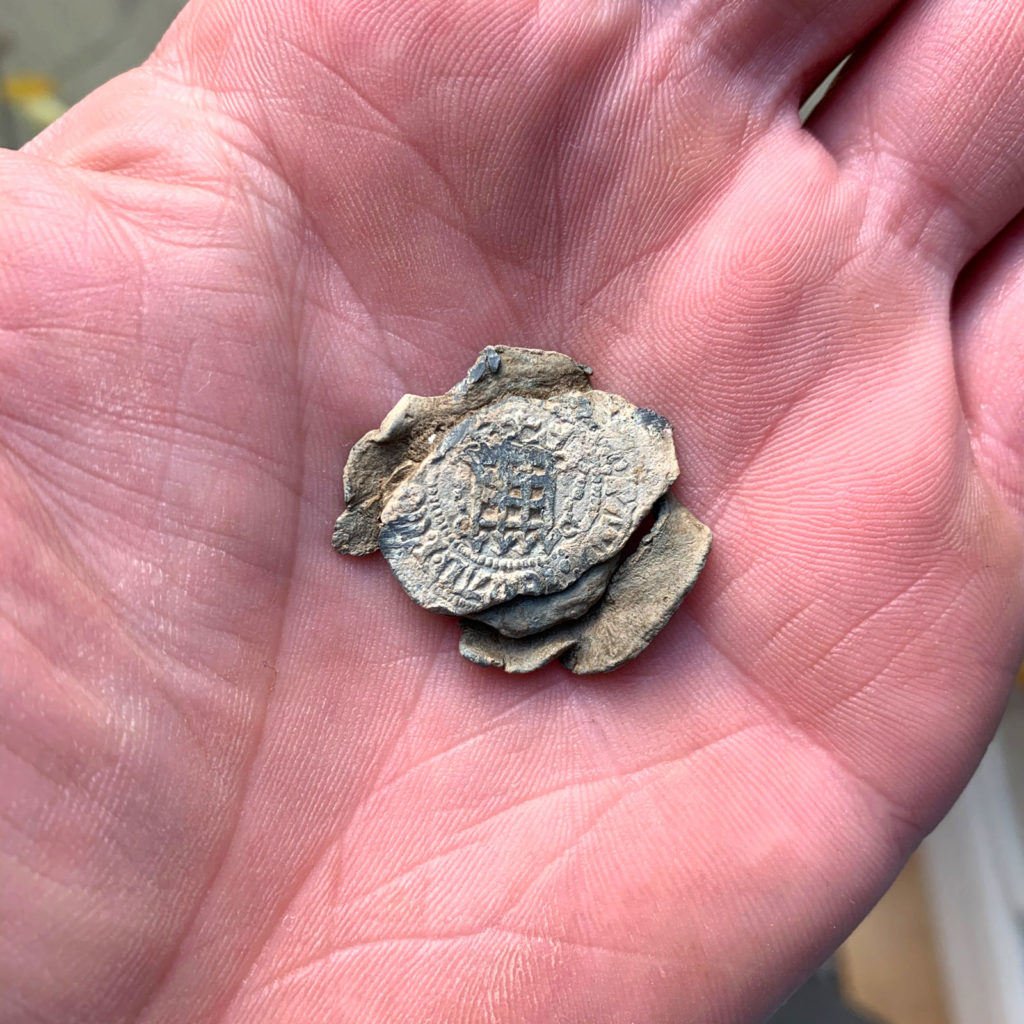
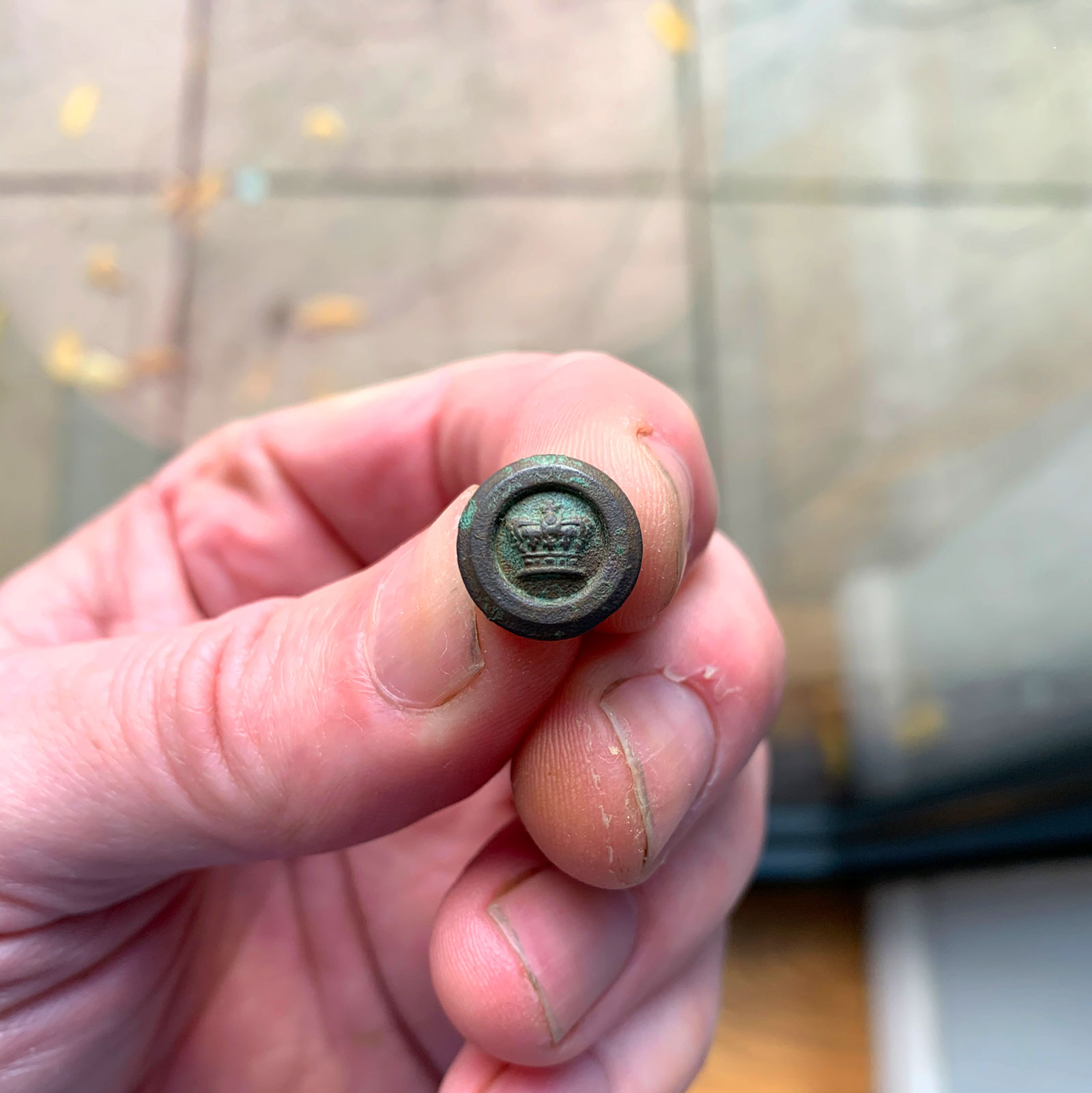
So where does that leave me with regards to a conclusion? It’s a difficult one because all I can do is guess at the several possibilities. I have no evidence if finds were ever found and taken from this site or indeed if there were any finds ever here in the first place. There is always the possibility that this site has been night-hawked over the years, as unfortunately of course this does happen, but once again I have no evidence.
It just leaves me with the thought that if we as detectorists are out uncovering the past then we have a duty to record the things we uncover which are of significance under the PAS guidelines. I see it as a privilege that we get to help stitch together the rich tapestry of history that lies beneath our feet. If we don’t report our finds then that’s when the tapestry misses a few stitches and ultimately becomes a little less rich.
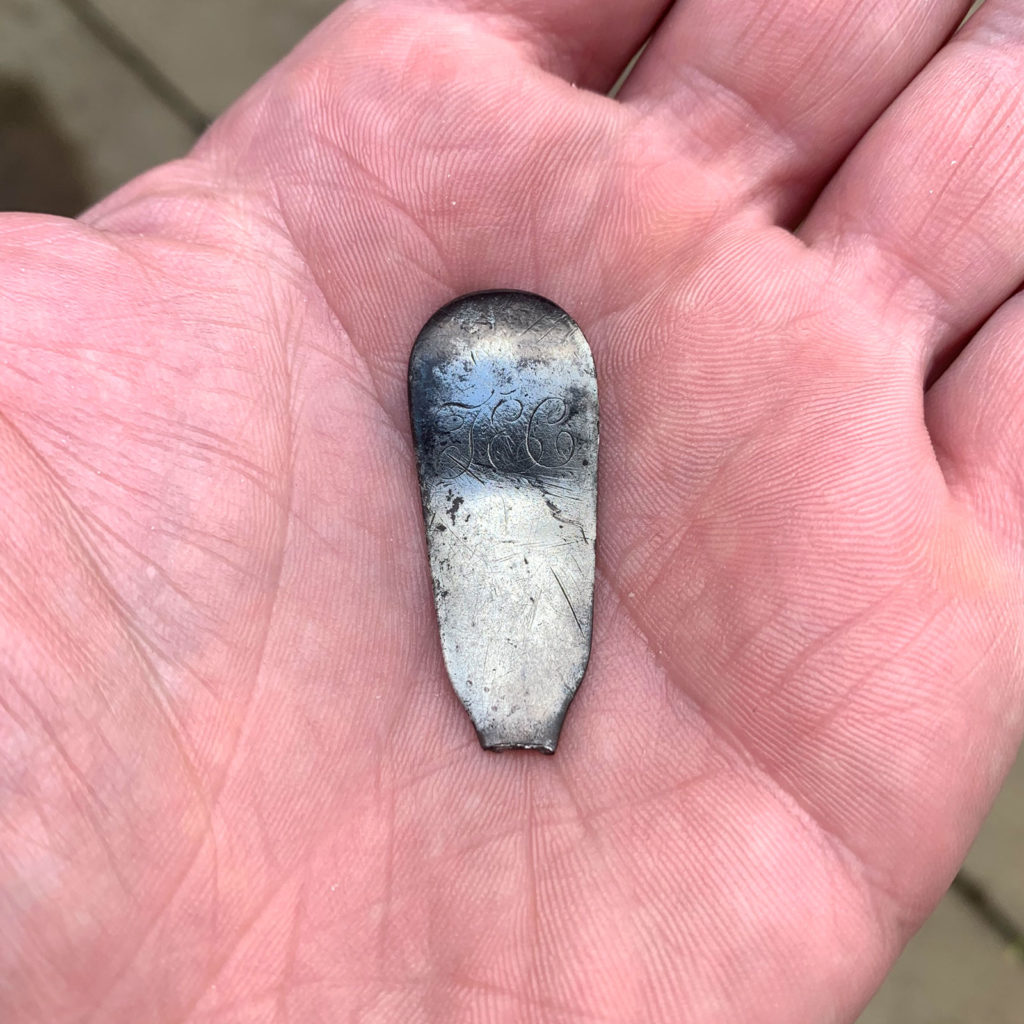
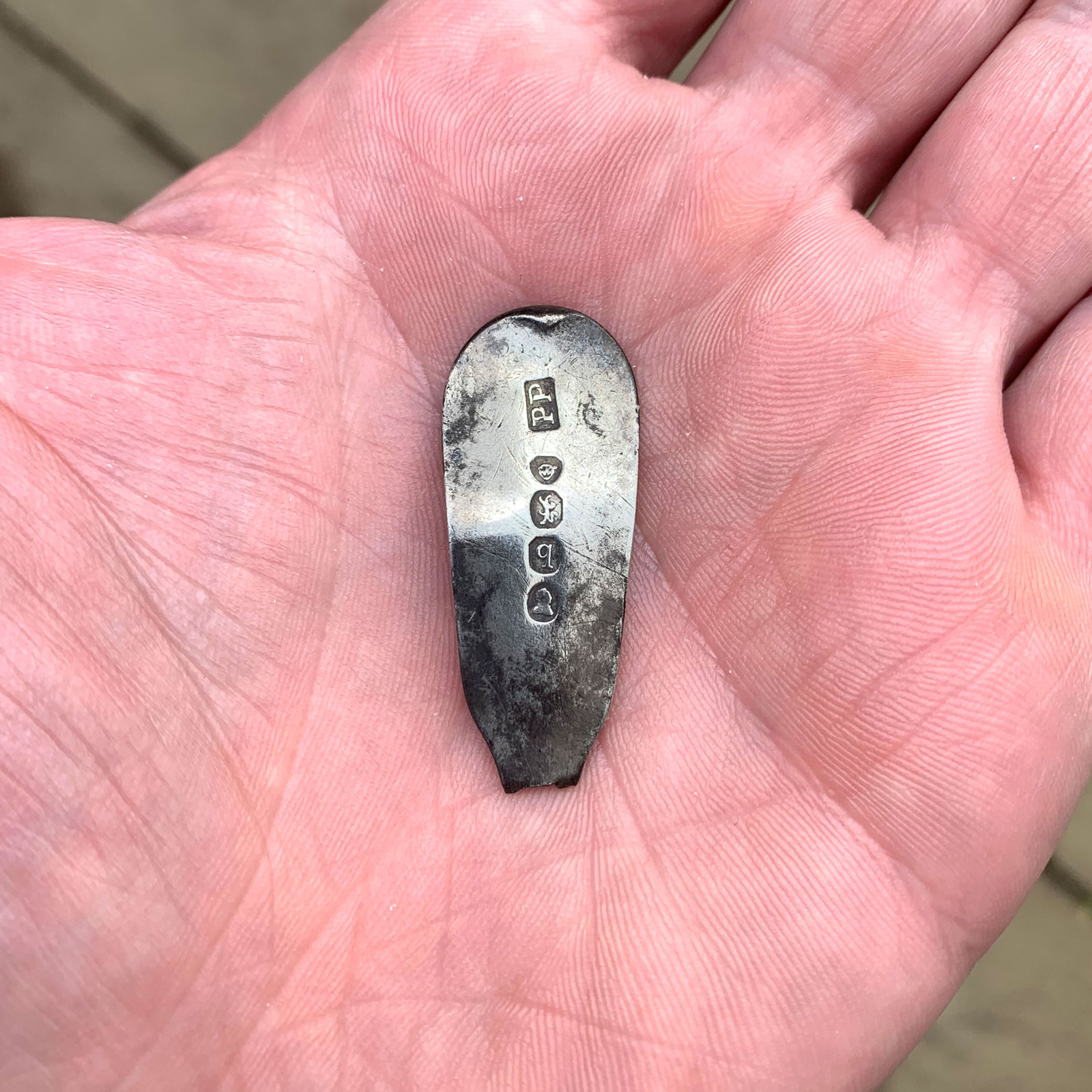
Our time on this permission has come to an end due to the field having now been seeded. However, rather fittingly on the last day there, what should pop up? You guessed it, a Roman coin. Also rather fittingly it was found by my friend whose permission it was. The coin in question, a dupondius of Claudius and is actually a copy, produced during a time of coin shortage in Britain and circulated until at least the start of the third century.
It amazes me that this will be the first ever Roman coin to be recorded from this site on the Portable Antiquities Scheme. In fact it will be the first of any finds to be recorded from this site, and about time too!
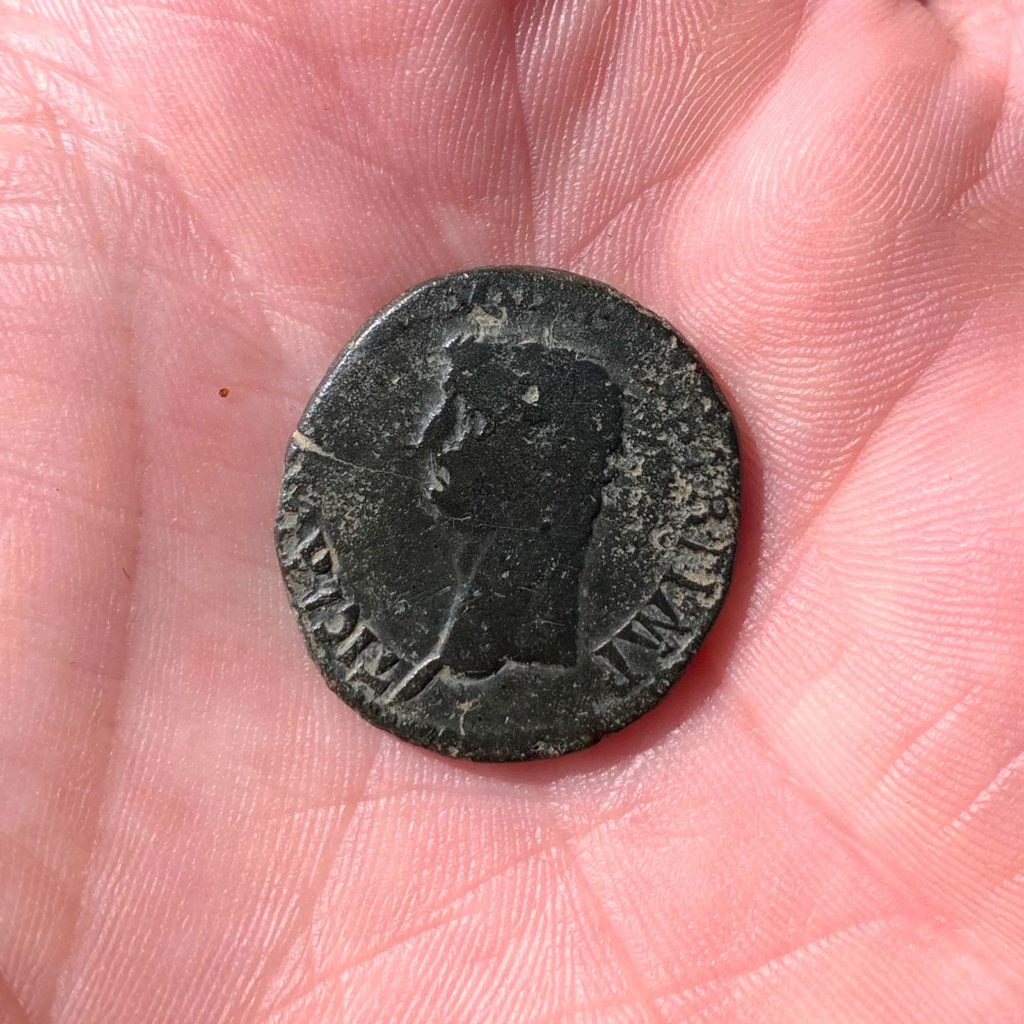
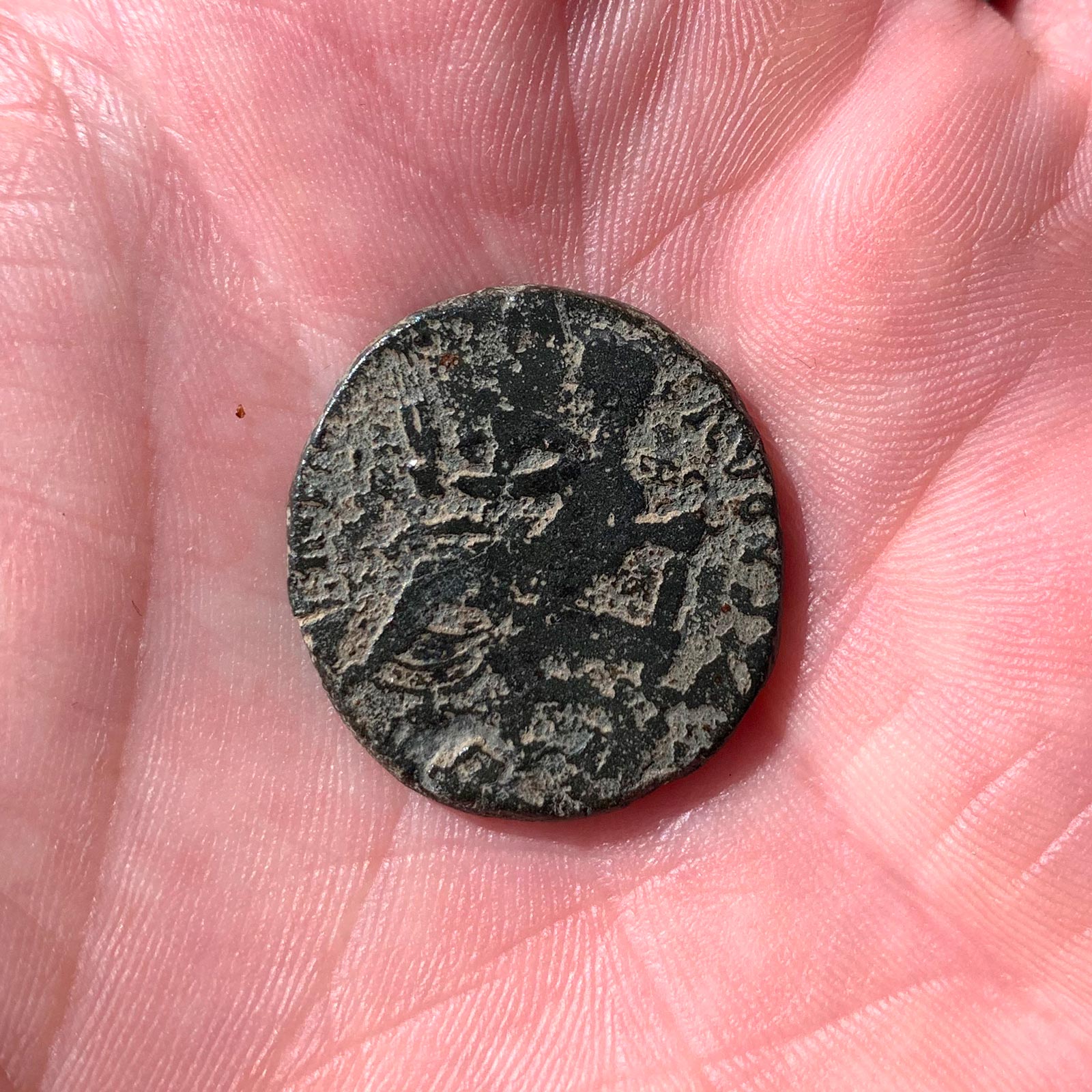
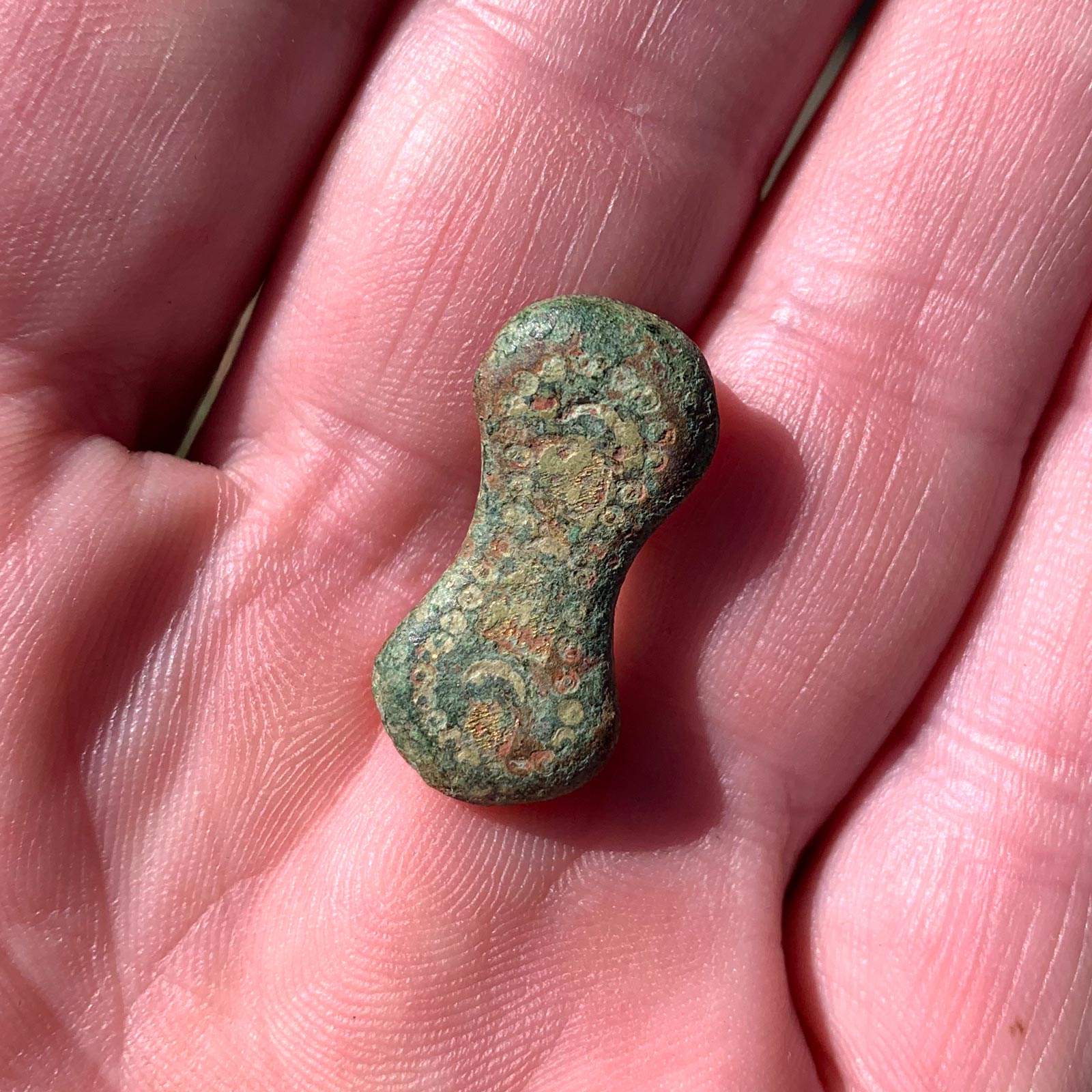
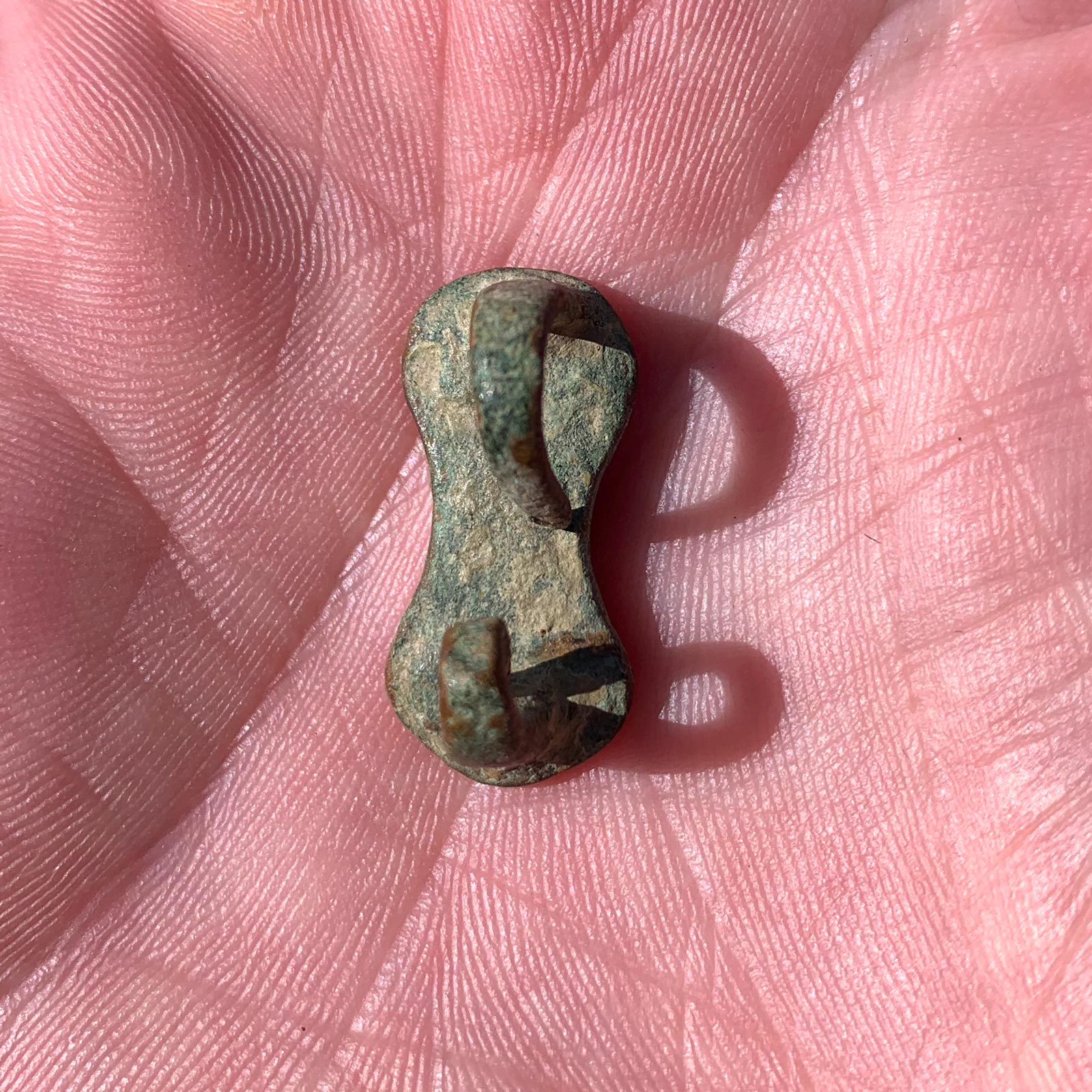
Jeton back to the past
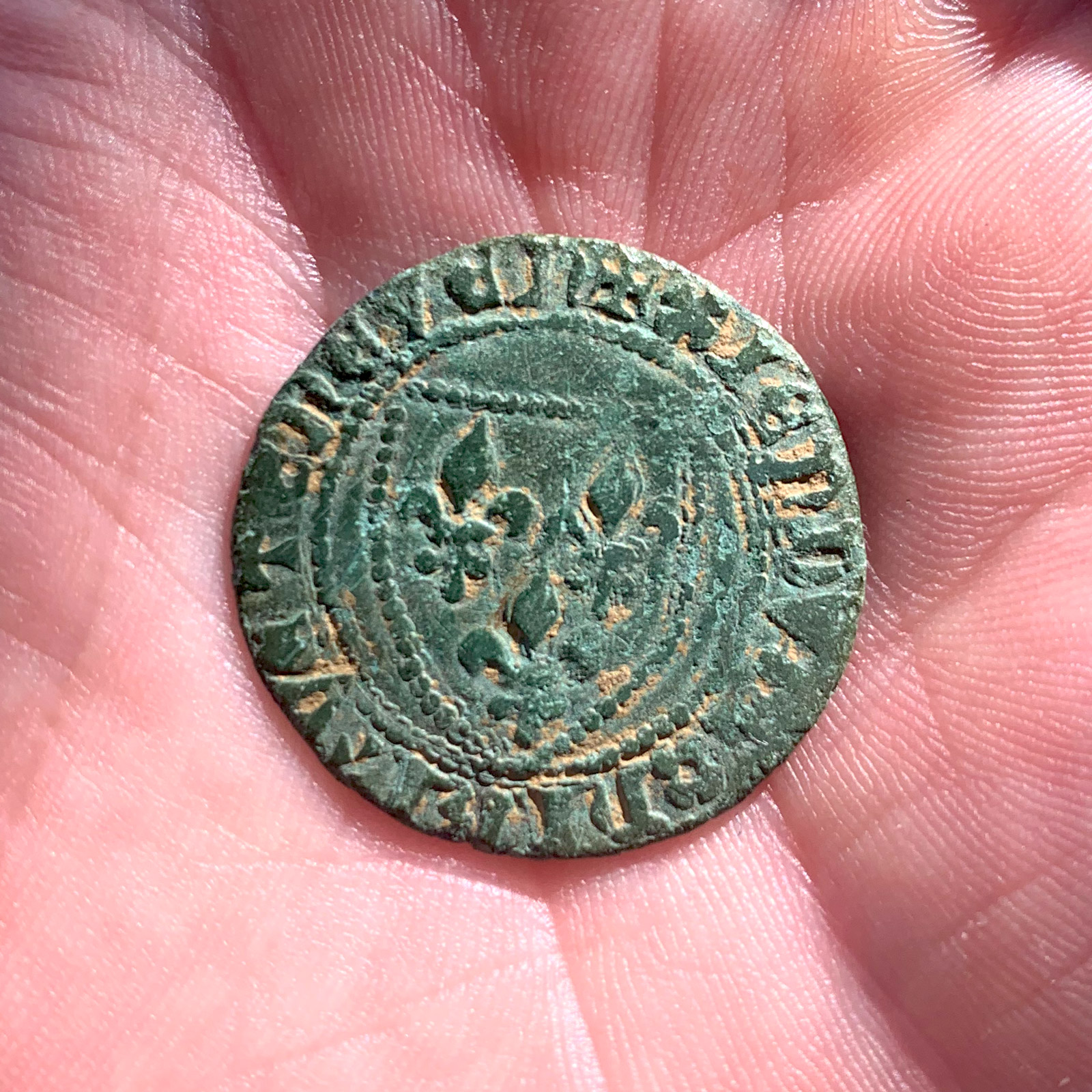
It’s been a long time coming, but I have finally had this Jeton I found way back in June 2021 identified. Well sort of, it turns out that there is ’no parallel for this particular Jetton’ according to my local FLO. But he did say that it probably dated to the period c. AD 1418-1437.
Doing a little research I have found that Jetons were commonly used as an alternative to currency. Their main use was as tokens for accountancy which could be stacked up on a lined board to make calculations which worked in a similar way to the abacus. Jetons were usually made of copper alloy as is the one I found, which is why it has this lovely green patina.
In relation to the early French Jetons, Bert Van Beek wrote “Shortly after the introduction of Jetons at the Royal Court, the French high nobility adopted the use of counters for calculating; a bit later the cities and public institutions did so too. At the end of the 13th century their use even occurred in the Southern Netherlands; accordingly, early French Jetons are quite important because they have been the example for all the Dutch counters”.
So with the comment from FLO that this particular Jeton has ‘no parallel’ and Bert Van Beek’s summation that the early French Jetons are quite important, it does make my first Jeton feel that little bit special. That and the fact that it’s in pretty good condition, not bad for a token that’s nearly 600 years old. And again, what was it doing in the middle of a field in Hertfordshire? To throw a joke at it in a very Lance Stater kind of way “There must have been a French accountancy firm here at some point!”.
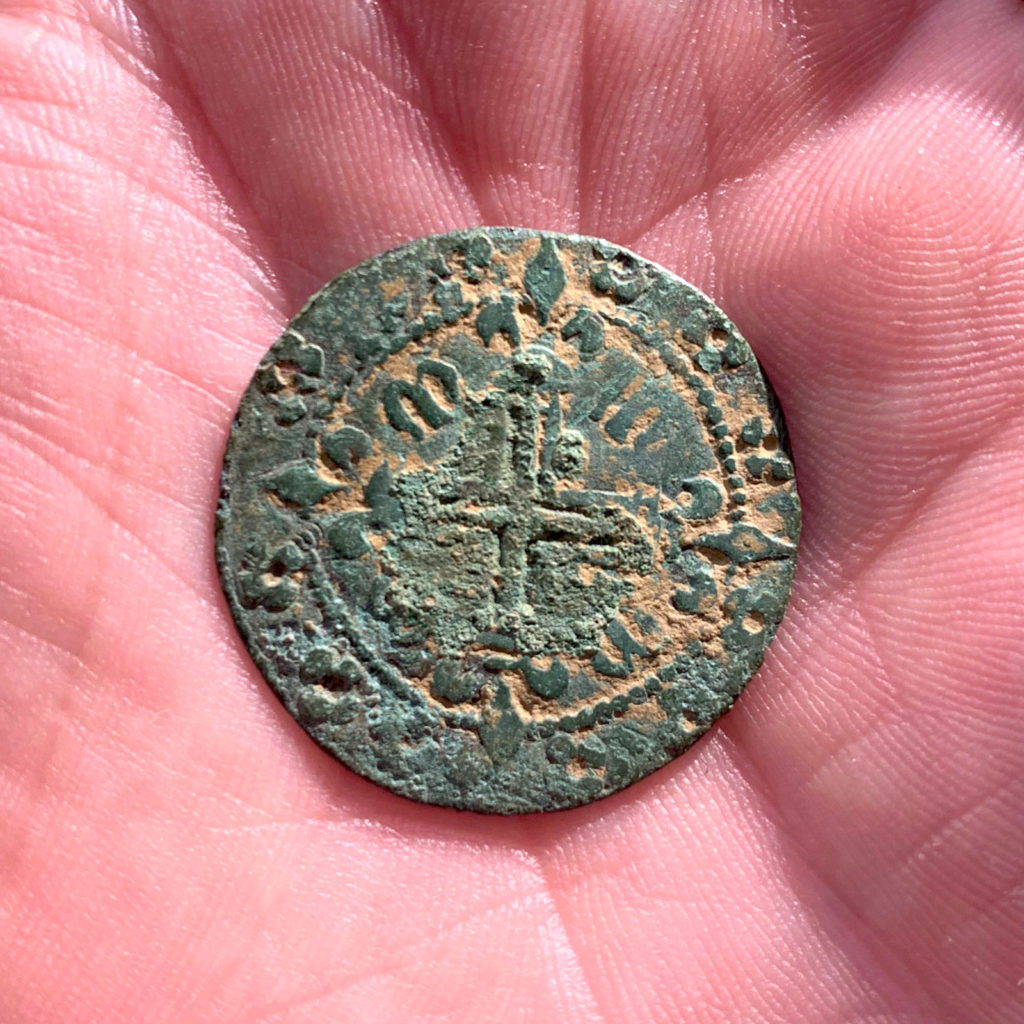
But all jokes aside, there are connections to be made. A while ago I wrote a blog post about lead bag seals, in particular one bag seal that related to the French town of Castres that could be precisely dated to 1667. This I’m sure was proof that Hitchin at that time was trading with France, most likely in textiles as Hitchin famously built it’s wealth on the wool trade and the town of Castres was known for exporting textiles in that period. So I don’t think it’s unreasonable to surmise that this 15th Century French Jeton is evidence that this trade link extended back to the 15th Century and possibly even further. Were French traders crossing the Channel with their accountants in tow to make sure that all transaction’s were being properly calculated and free from the opportunistic dodgy dealings of the English?
Who could ever be sure, but this is what is so great about the hobby I love, I have found some tantalising little bits of evidence that trade must have been taking place with France in this small field on the outskirts of Hitchin. In my opinion metal detecting has an important part to play in uncovering the rich and varied past of this island we call home. It also presents me with the opportunity to play detective and try to find out things about my home town that this hobby is enabling me to do. Now then, where did that Celtic Nobleman loose his purse of gold staters for me to find?!?
Can’t stop treasure hunting
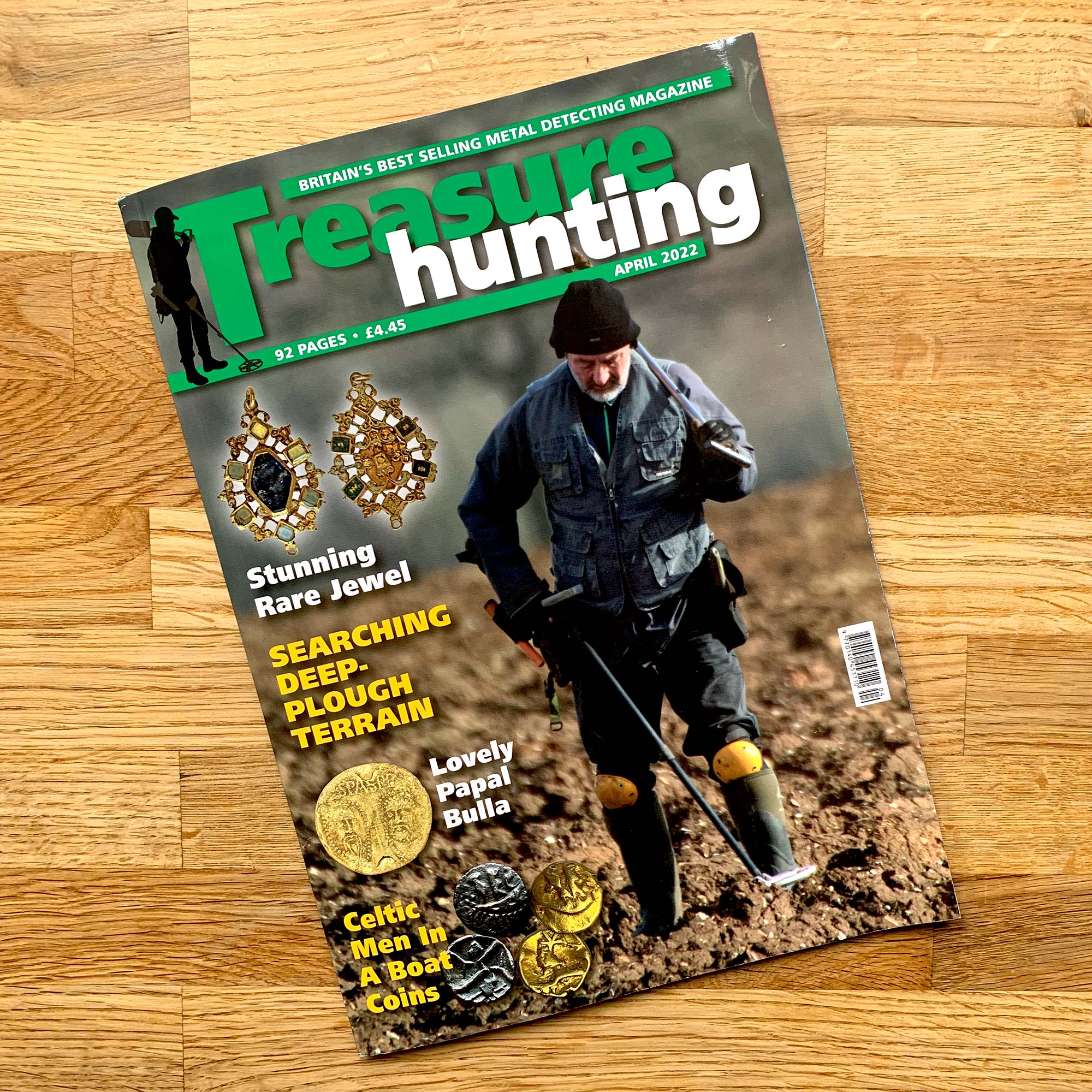
So as my love for this wonderful hobby grows, so does my contributions to Treasure Hunting magazine. This is now my third outing in my favourite mag, but this time it feels that bit more special as I have made it onto the contents page!
To have written an article which the guy’s at Treasure Hunting think would interest their readers just feels bloody brilliant. To share these experiences that I have had whilst detecting for a relatively short time is also a great record for me to keep. This is the main reason behind the Hertfordshire History Hunter blog which I write. It’s a great way for me to map my detecting journey as it continues to unfold and if other people enjoy reading it too then it makes it even more worth while.
As I said in the article there will hopefully be other opportunities to do more surveys for the museum this year and with any luck uncover more of the fabulous history which surrounds my home town. As ever, I will keep updating the blog and the Hertfordshire History Hunter instagram account with all the finds and experiences I encounter along the way. Let’s hope 2022 is a great detecting year for everyone who loves this amazing hobby!
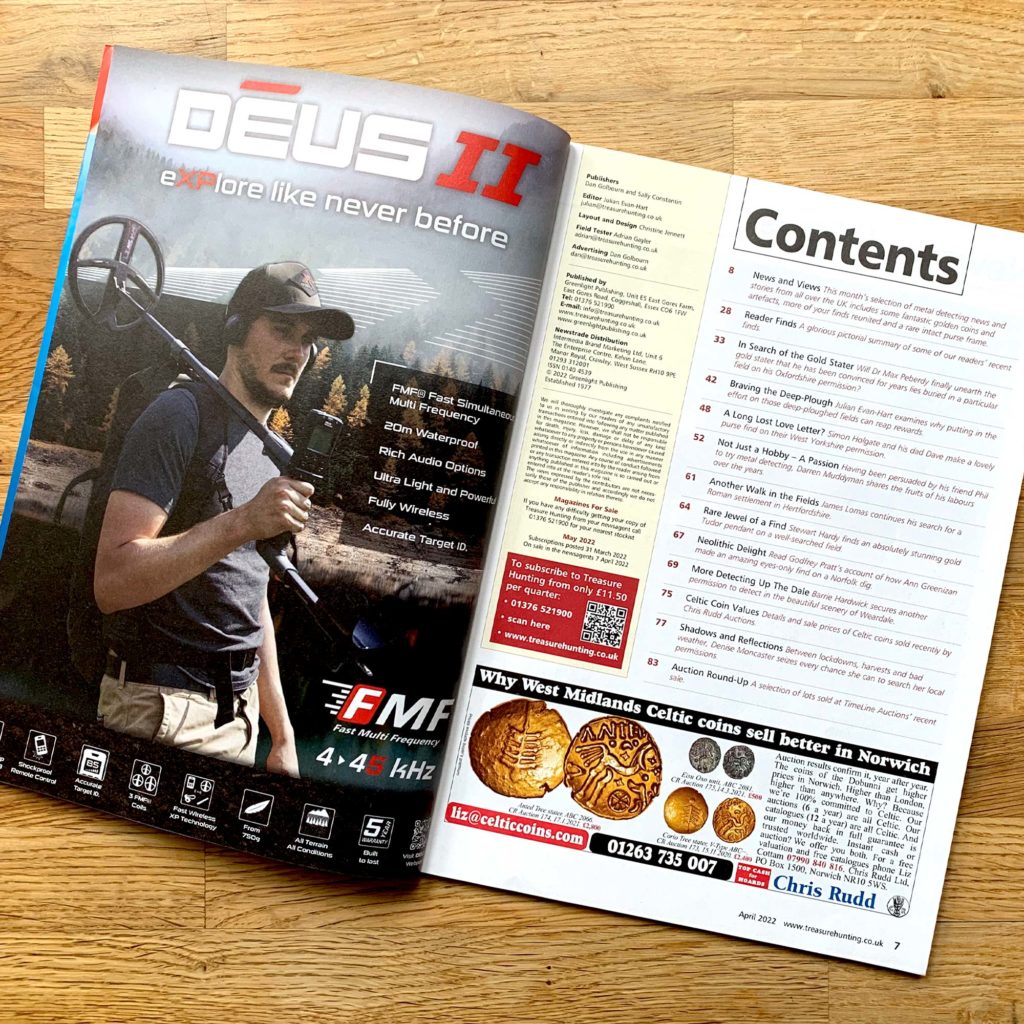

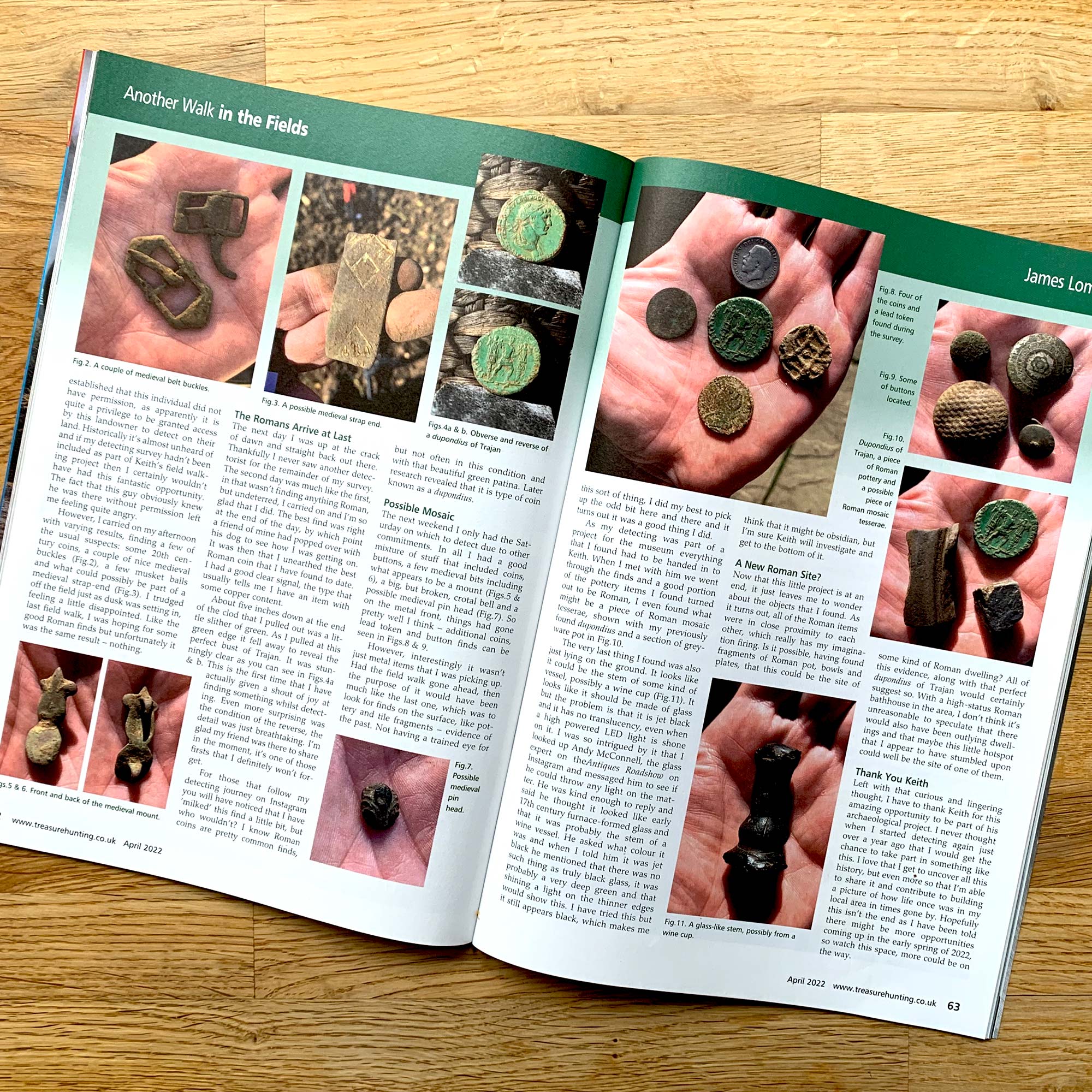
Treasure hunting again…
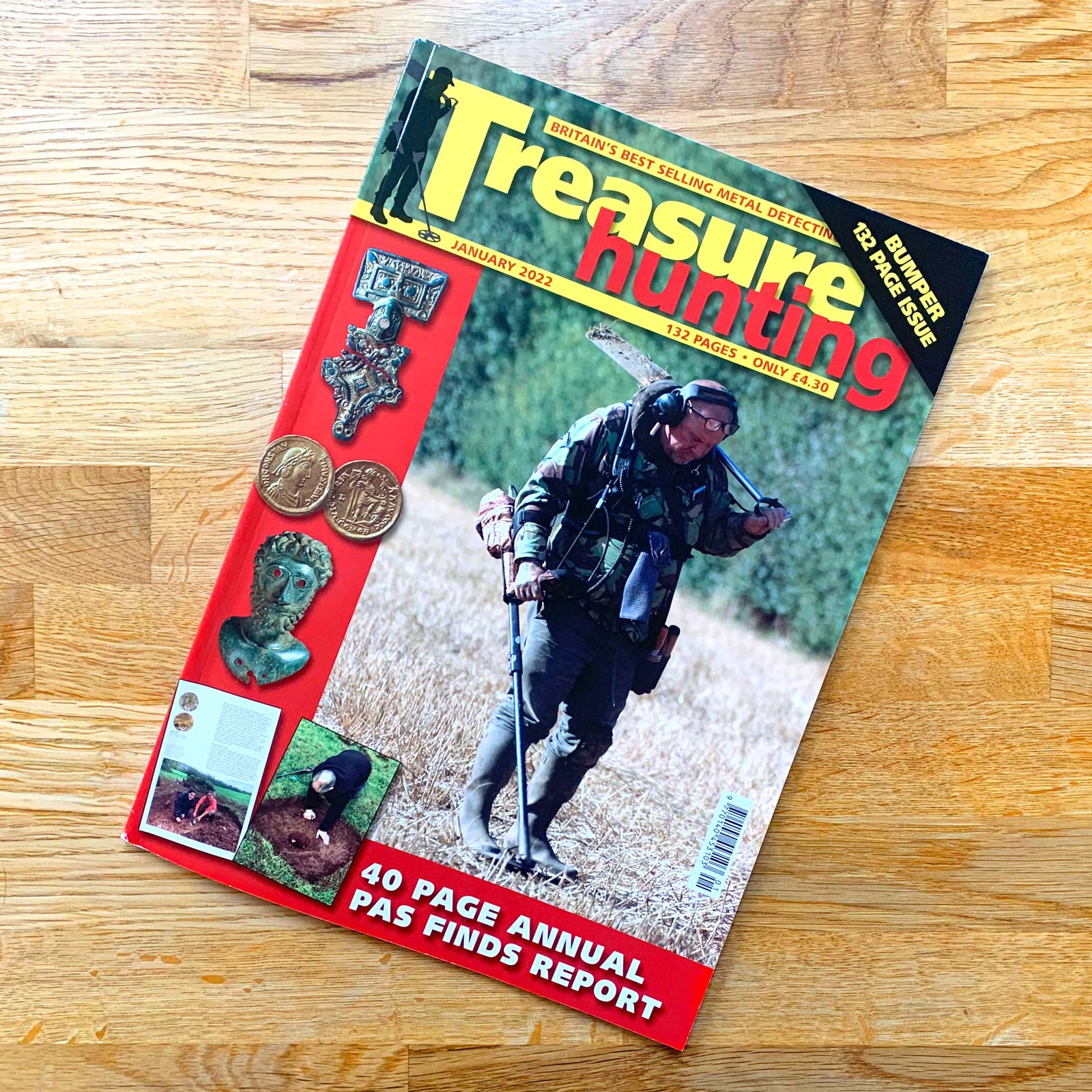
So here I go again, I now have my second article printed in the January 2022 edition of Treasure Hunting Magazine. This time I have two pages dedicated to my ramblings so things are definitely on the up. This time it’s all about my experience of doing a detector survey for my local museum which is titled ‘A walk in the fields’. This is actually an edited version of my blog which has the same title, so if you are unable to obtain a copy of the magazine you can read it HERE.
As it turns out this will be the first of two articles dedicated to my experience’s of doing detector survey’s for my local museum. The second article is also an edited version of one of my blogs, this time it’s ‘Another walk in the fields’, which will appear in a future edition of Treasure hunting Magazine. Again, like the first article, if you can’t obtain a copy of the magazine when it comes out you can read it HERE.
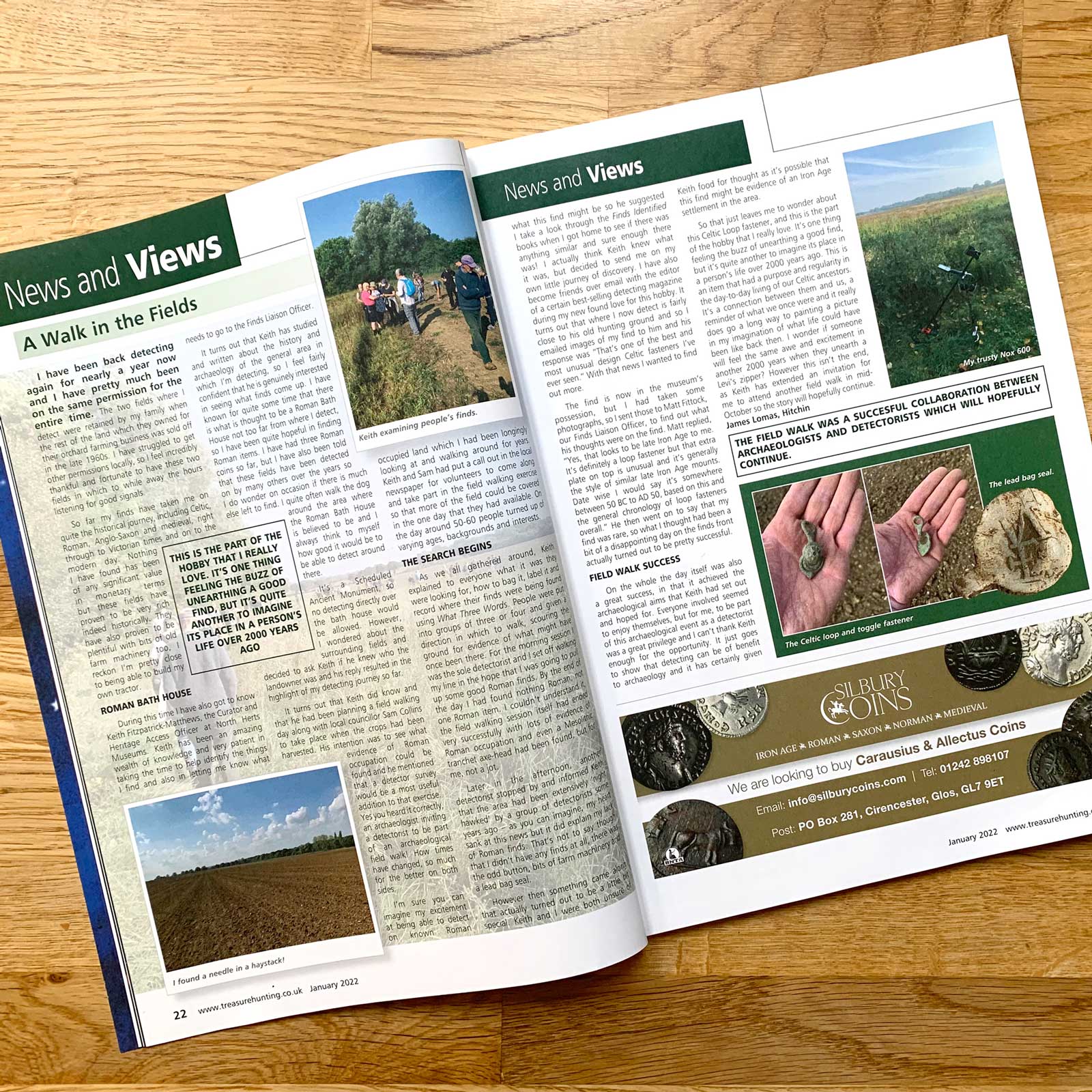
It is, as most detectorists would agree, an amazing feeling to have a hobby or interest that really grabs every inch of your love and enthusiasm. I often wonder where I would be without being able to detect now, as it really has captured my imagination in a big way. This is why on the weekends when I am unable to get out in the fields, that I find myself writing about it. I have never had any inclination to write before I took up this hobby, but for some reason I just can’t seem to help myself.
Finding all this history beneath the land that surrounds us makes me feel that it should be shown and shared. Most of the stuff we find won’t be museum worthy, but it does all have a history. It’s all part of the story that our ancestors left behind and if we don’t show and share then we stop adding to the richness and detail of that story. I for one will carry on showing, sharing and writing about the things that I find and I will do it for a whole host of reasons, but the main one is that I just love doing it!
So for everyone that enjoys this wonderful hobby, keep up the good work. This history of ours grows bigger by the day as we all uncover what is there to be found, long may this story of ours continue!
Another walk in the fields
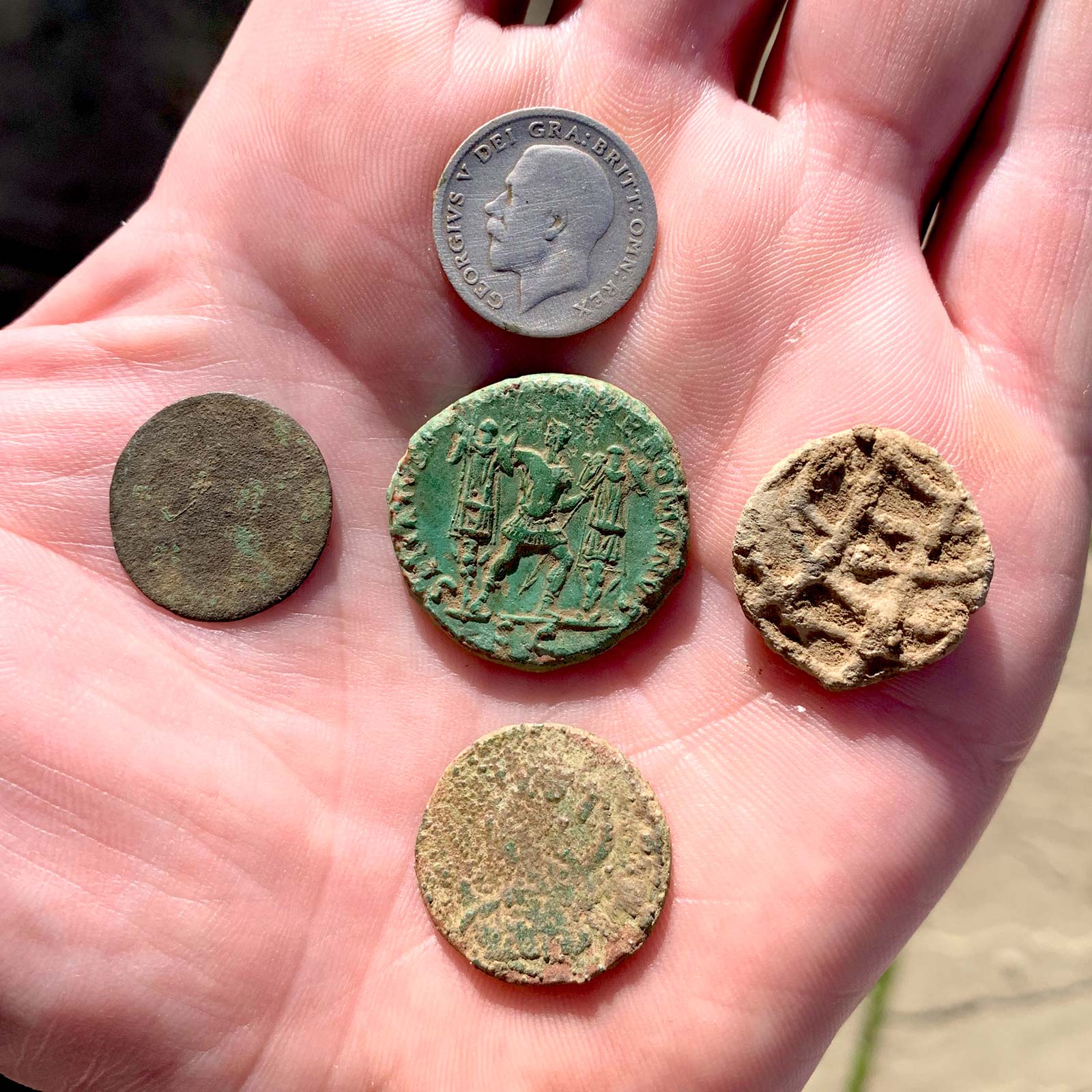
So in my last blog I said there might be another field walk taking place in mid October, which I had been invited to attend again with my detector. Keith Fitzpatrick Matthews the Curator and Heritage Access Officer at North Herts Museums and Councillor Sam Collins scouted out the new field one October morning to see if the conditions would be conducive to inviting volunteers on another field walk. After the success of the last field walk I was hoping for another sunny day full of enthusiastic volunteers looking for evidence of the past. But alas, it was not to be.
The field in question would only be available between crops coming out and going in, so there was a very short window of opportunity. The weather hadn’t been favourable so conditions weren’t great for conducting a volunteer based field walking exercise. Keith contacted me to let me know the decision, but he also had some good news. He informed me that I had been granted special permission by the land owner to continue the detector survey that the museum wanted to include as part of the field walk.
I had two weekends in which to search a field that was incredibly muddy and which was so big I couldn’t fully see it from end to end! I was told I had the permission a day before the first weekend and luckily I had no plans. I was out bright and early the next morning, full of excitement and expectation. I decided that I would detect around the perimeter first and then work my way inwards and try and tackle the field in sections.
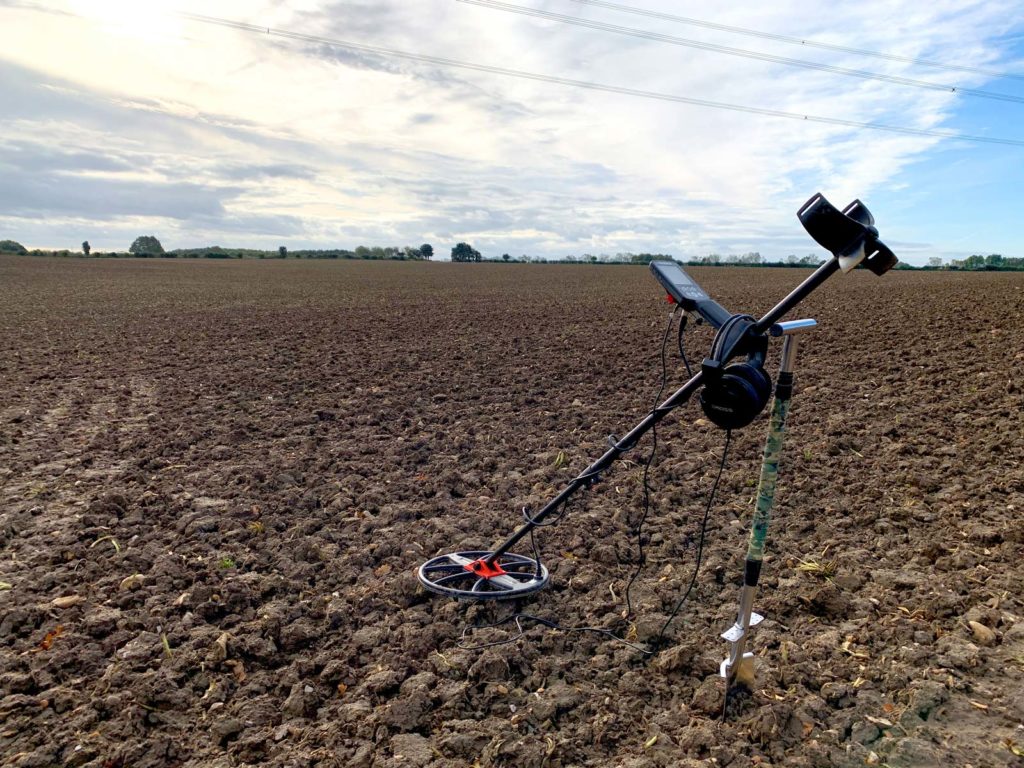
My first find of the day was a medieval lead token which was in pretty good nick, it certainly gave me hope that there would be some good finds to come. After that though things were pretty quiet right up until lunch. I had parked in a lay-by near the field so I went back to the car for half an hour before starting my afternoon session.
When I got back into the field I was quite surprised to see another detectorist out there getting his swing on. He approached me and was quite friendly and chatty. It turns out he had spent the morning searching the surrounding fields, he asked if I had found anything to which I replied “not much really, I only have permission for this one field!”. Having made the point that I had permission, things then became a little uncomfortable and he went on his way.
I contacted Keith to see if anyone else had permission to be there and his reply was quite telling, “That’s very concerning: the land owner has a blanket ban on detecting, which they have waived for this specific project. The other detectorist is there without permission!”. It’s worth noting at this point that it appears to be quite a privilege to be granted access by this land owner to detect on their land. Historically it’s unheard of that they grant permission and if my detecting survey hadn’t been included as part of Keith’s field walking project then I certainly wouldn’t have had this fantastic opportunity!
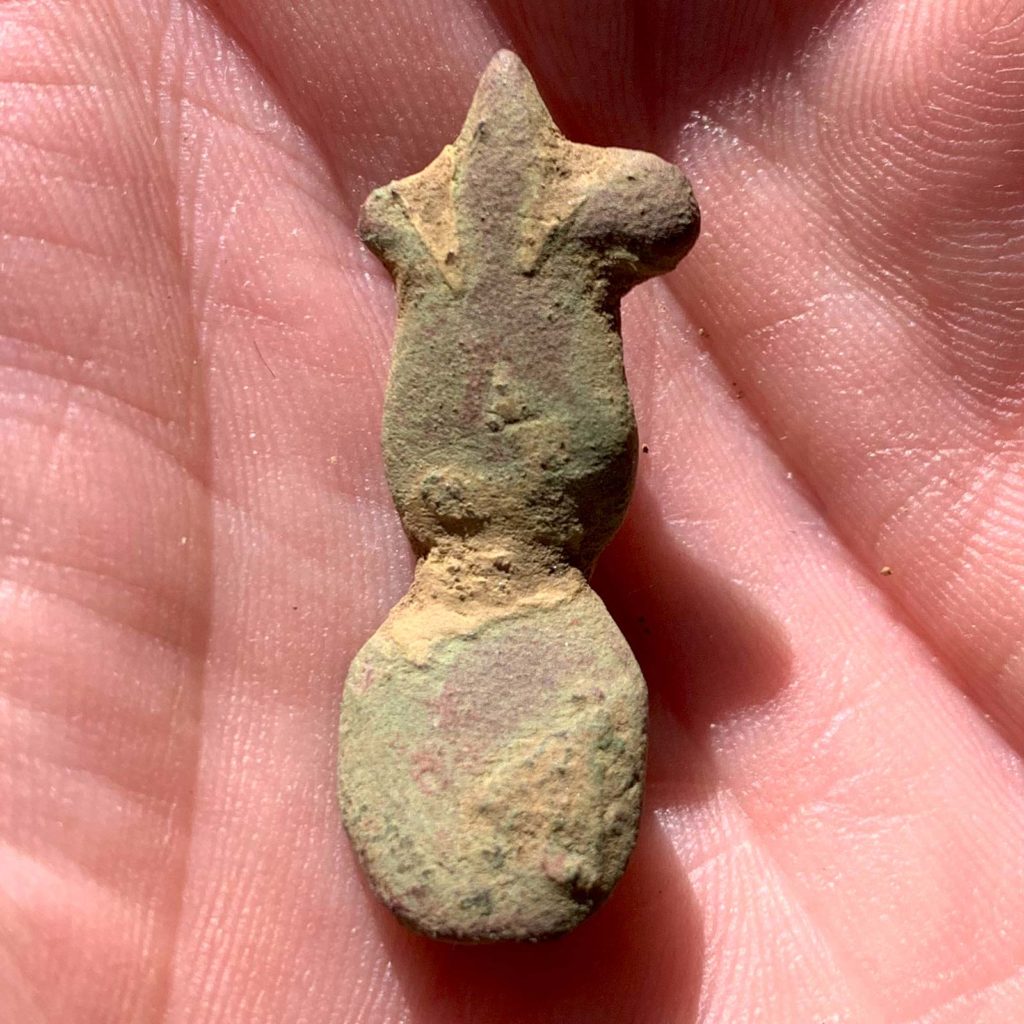
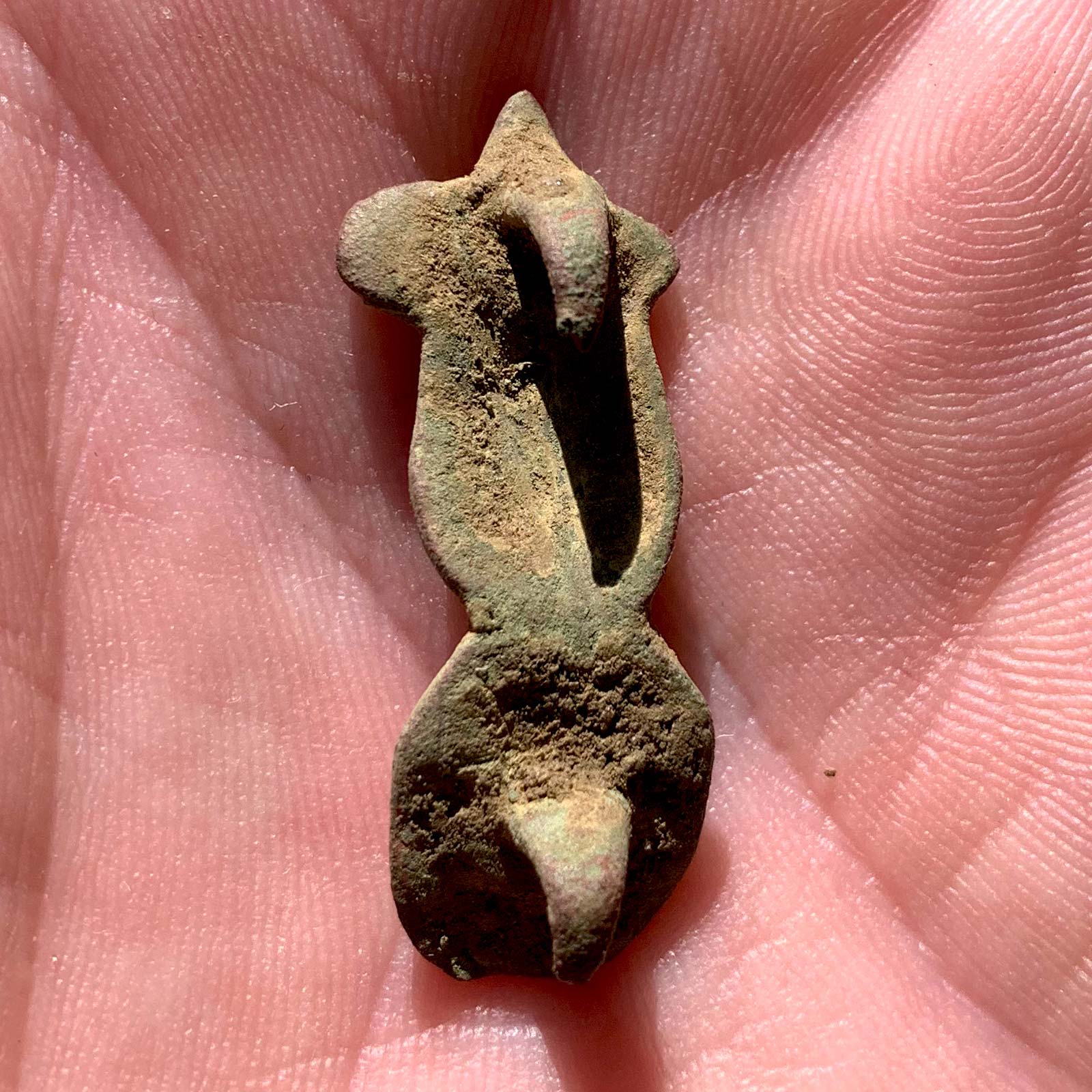
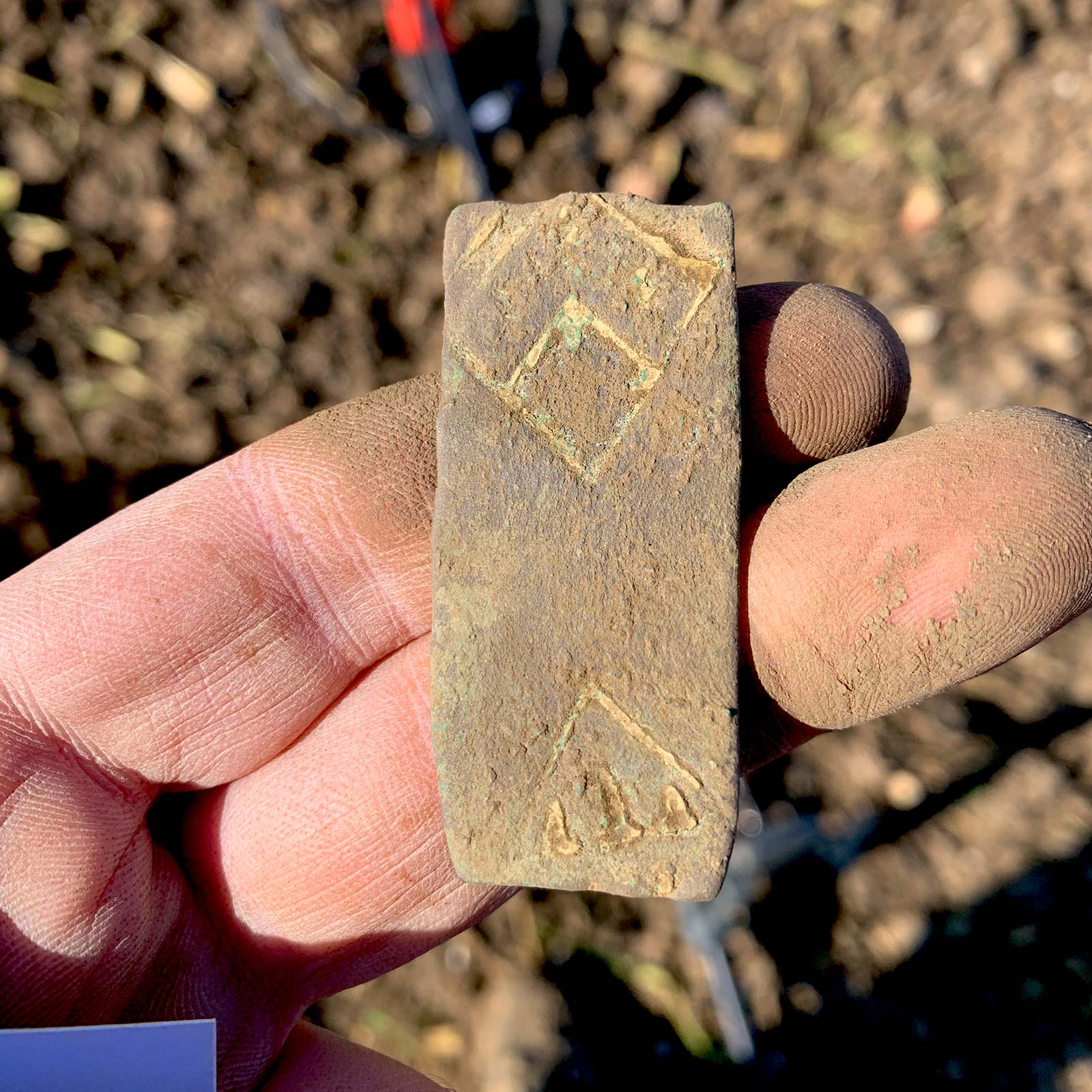
The fact that this guy obviously knew he was there without permission left me feeling quite angry. He had good kit and looked like a season detectorist so he must know the do’s and dont’s that the majority of detectorists abide by. Is it any wonder that it’s becoming harder and harder to secure permissions when trust is being ebbed away by the actions of people like this. I just hope that if he did find anything that he at least had the decency to record it with the Portable Antiquities Scheme, but I fear that’s very doubtful.
I carried on my afternoon with varying results. I had a few of the usual suspects, some 20th century coins, a couple of nice medieval buckles, a few musket balls and what could possibly be part of a medieval strap end. I trudged off the field just as dusk was setting in feeling a little disappointed. Like the last field walk I was hoping for some good Roman finds but unfortunately it was the same result, nothing!
The next day I was up at the crack of dawn and straight back out there! Thankfully I never saw another detectorist for the remainder of my survey, don’t get me wrong I love doing group stuff but only when the permission is in place to do so. The second day was much like the first in that I wasn’t finding anything Roman. It started to make me wonder if this field had been cleaned out by illegal detecting as well, much like the Roman bath house site appears to have been. Not deterred I carried on and I’m so glad that I did. The best find was at the end of the day, by which point a friend of mine had popped over with his dog to see how I was getting on. It was then that I unearthed the best Roman coin that I have found to date.
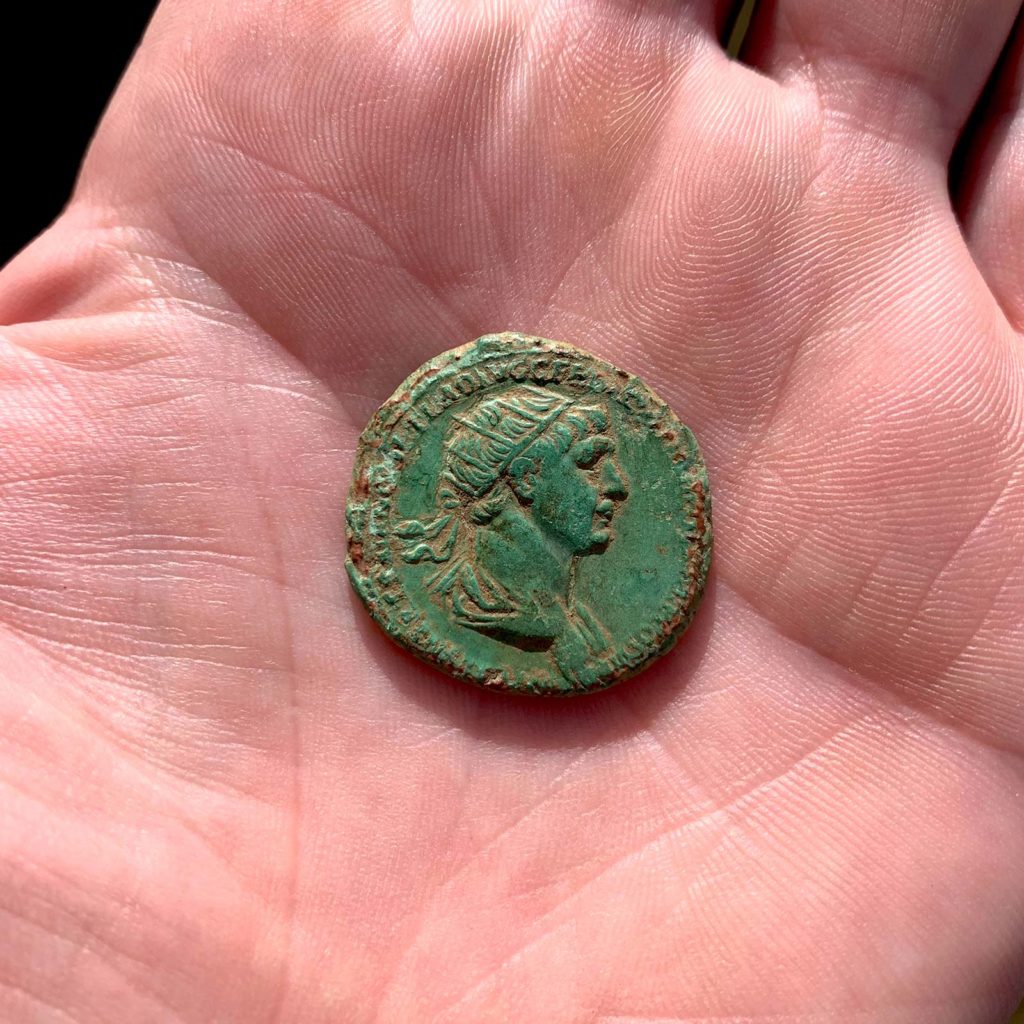
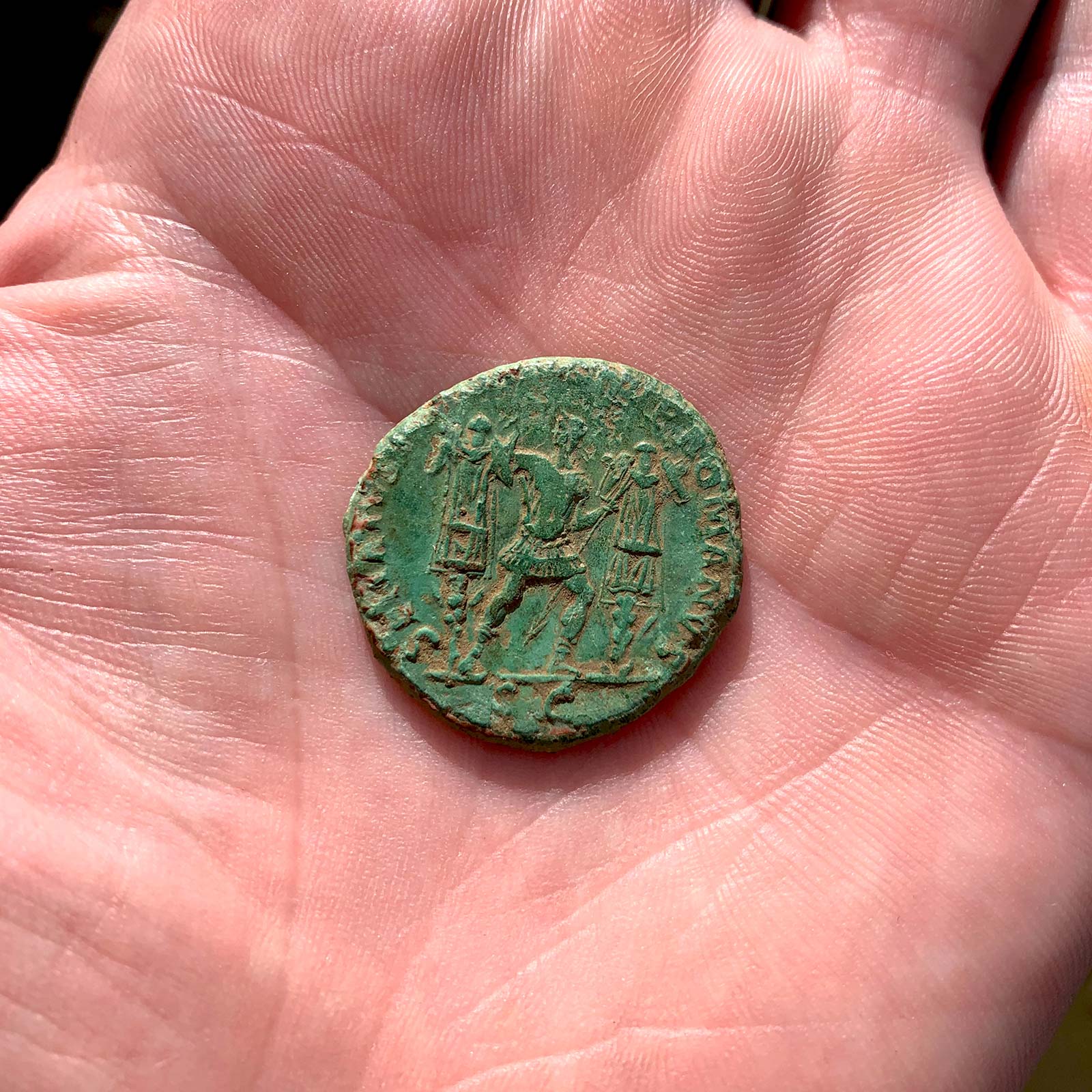
I had a good clear signal, the type that usually tells me I have an item with some copper content. About 5 inches down at the end of the clod that I pulled out was a little slither of green. As I pulled at this green edge it fell away to reveal a perfect bust of Trajan, and it was stunningly clear as you can see by the pictures. This is the first time that I have actually given a shout of joy at finding something whilst detecting. Even more surprising was the condition of the reverse, the detail was just breathtaking. I’m glad my friend was there to share in the moment, it’s one of those firsts that I definitely won’t forget. For those that follow my detecting journey on instagram you will have noticed that I have milked this find a little bit, but who wouldn’t. I know Roman coins are pretty common finds, but in this condition and with that beautiful green patina, not often. You can now view the specifics for this coin on the Portable Antiquities Scheme link at the bottom of this post.
The next weekend I only had the Saturday on which to detect due to other commitments. In all I had a good mixture of stuff that included coins, buttons, a few medieval bits, a big but broken crotal bell and a possible medieval pin head. So on the metal front things had gone pretty well I think, but it wasn’t just metal Items that I was picking up. Had the field walk gone ahead, then the purpose of it would have been much like the last one which was to look for finds on the surface, like pottery and tile fragments, evidence of the past.
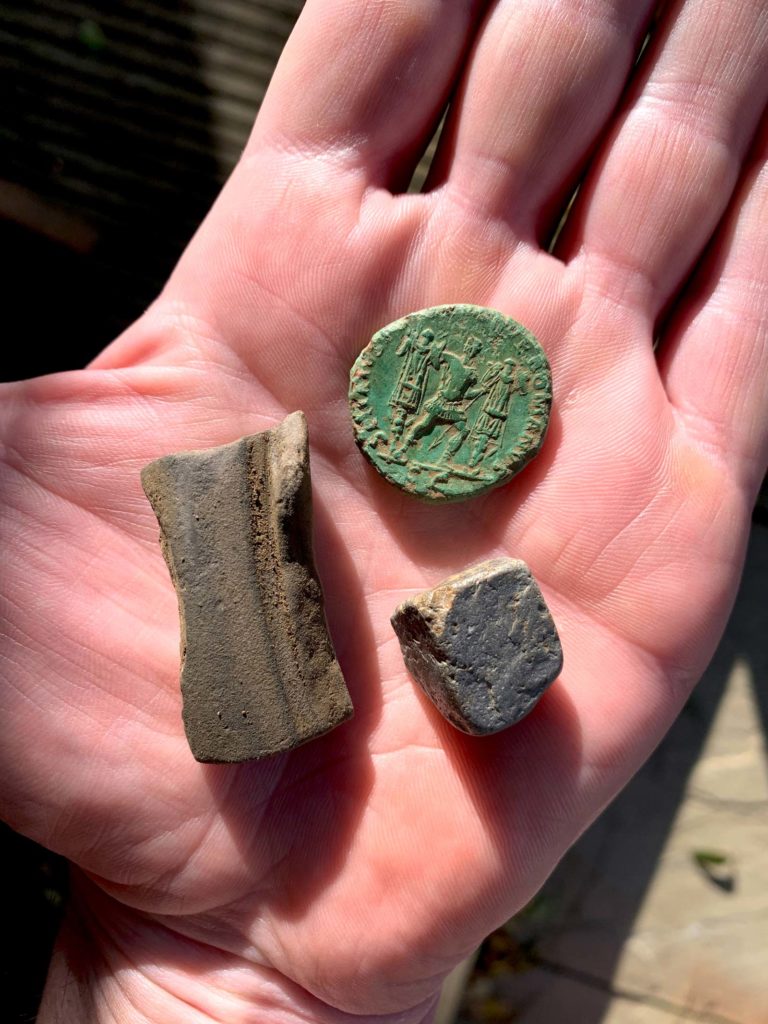
Not having a trained eye for this sort of thing I did my best to pick up the odd bit here and there and it turns out it was a good thing I did. As my detecting was part of a project for the museum everything that I found had to be handed in to Keith. When I met with Keith we went through the finds and a good portion of the pottery items I found turned out to be Roman, I even found what might be a piece of Roman mosaic tesserae.
The very last thing I found was also just lying on the ground. It looks like it could be the stem of some kind of vessel, possibly a wine cup. It looks like it should be made of glass but the problem is that it is jet black and it has no translucency, even when a high powered LED light is shone on it. I was so intrigued by it that I looked up Andy McConnell (The glass expert on BBC’s The Antiques Roadshow) on instagram and messaged him to see if he could throw any light on the matter. He was kind enough to reply and said he thought It looked like early 17th Century furnaced formed glass and that it was probably the stem of a wine vessel. He asked what colour it was and when I told him it was jet black he said there was no such thing as truly ‘black’ glass. He said it was probably a very deep green and that shining a light on the thinner edges would show this, but it didn’t. This started to make me think that it might be obsidian, but I’m sure Keith will investigate and get to the bottom of it.
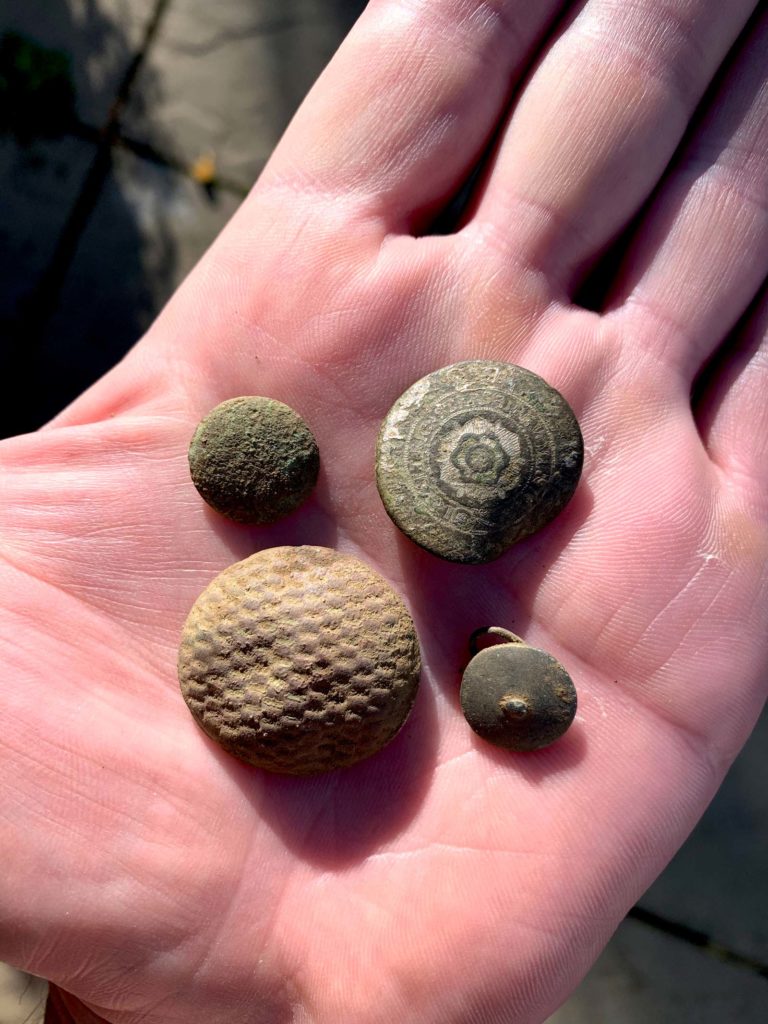
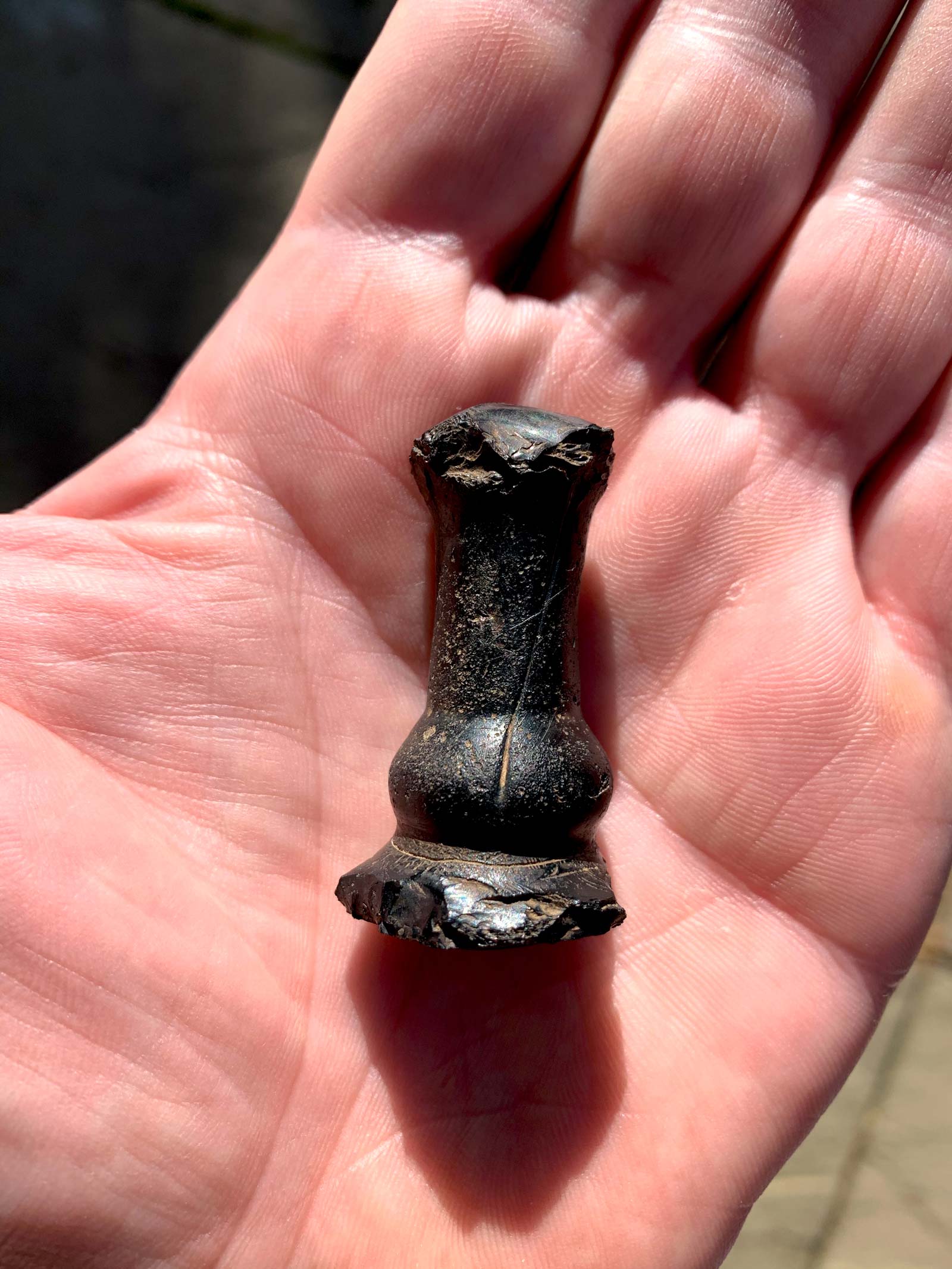
So once again, now that this little project is at an end, it just leaves me to wonder about the objects that I found. As it turns out all of the Roman items were in close proximity to each other which really has my imagination firing. Is it possible that having found fragments of Roman pot, bowls and plates that this could be the site of some kind of Roman dwelling? All of this evidence along with that perfect Dupondius of Trajan would certainly suggest so. With a high status Roman bathhouse in the area I don’t think it’s unreasonable to speculate that there would have been outlying dwellings and that maybe this little hotspot that I appear to have stumbled upon could well be the site of one of them.
Left with that curious and lingering thought I have to thank Keith for this amazing opportunity to be part of his archaeological project. I never thought when I started detecting again just over a year ago that I would get the chance to take part in projects like this. I love that I get to uncover all this history, but even more so that I’m able to share it and contribute to building a picture of how life once was in my local area in times gone by.
And once again this hopefully isn’t the end. I have been told there might be more opportunities coming up in the early spring of 2022, so watch this space, more could be on the way…
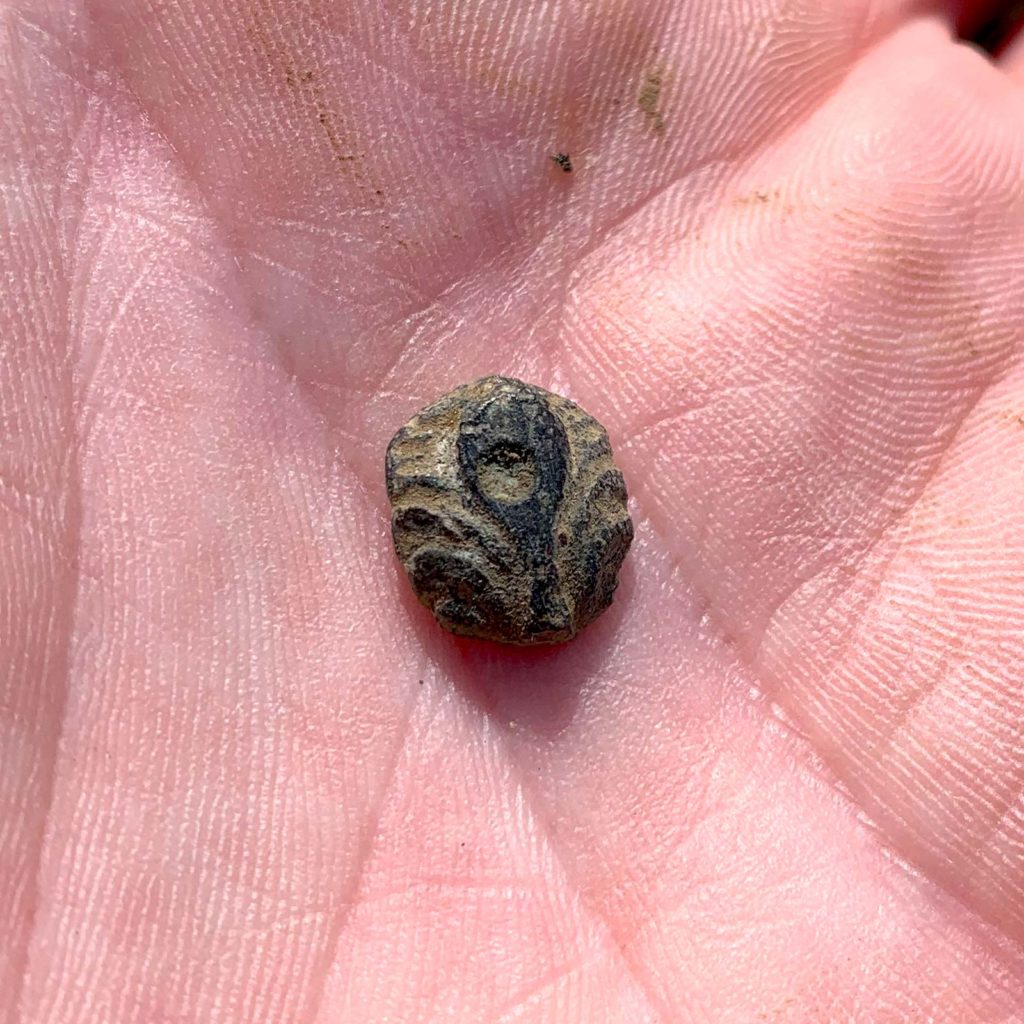
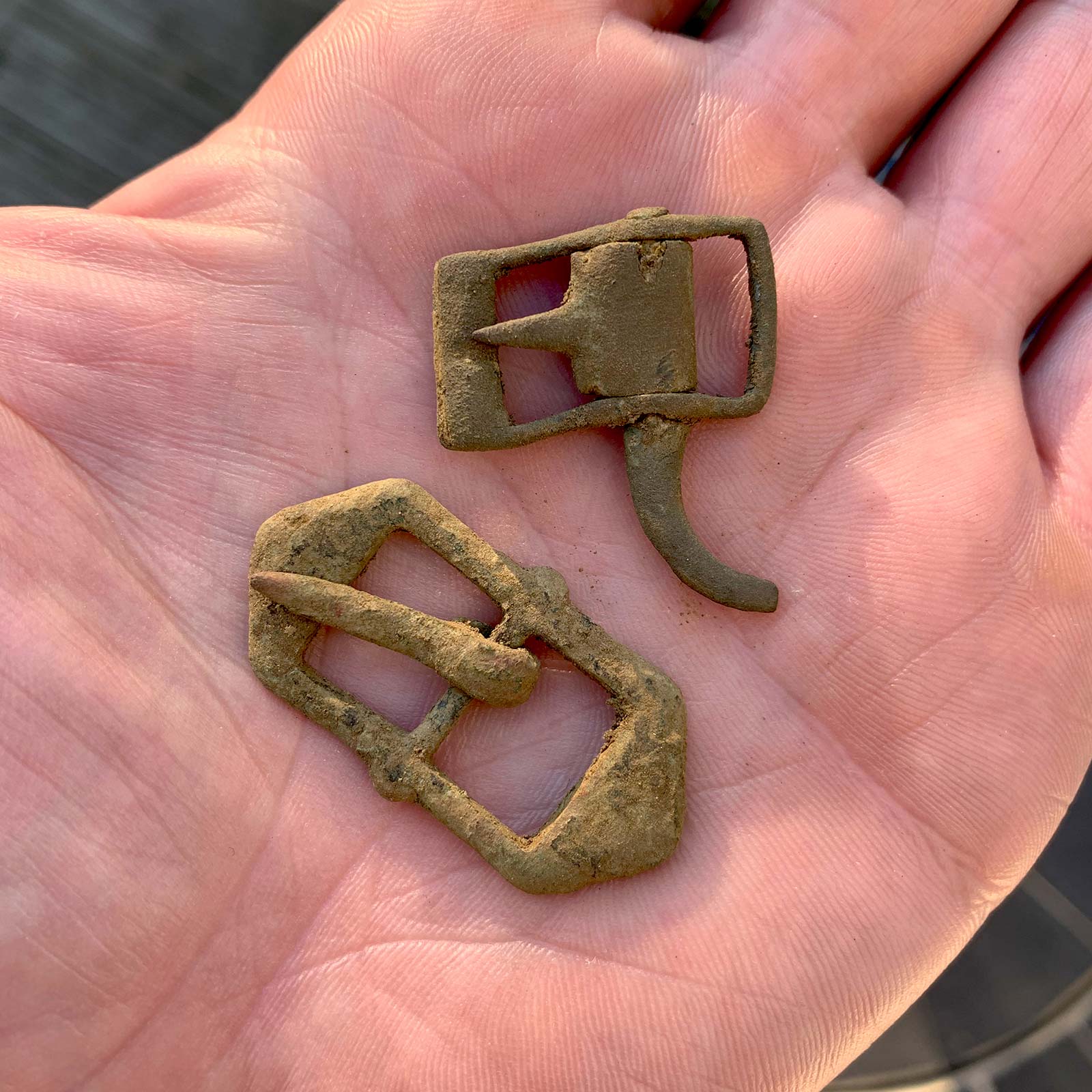
A walk in the fields
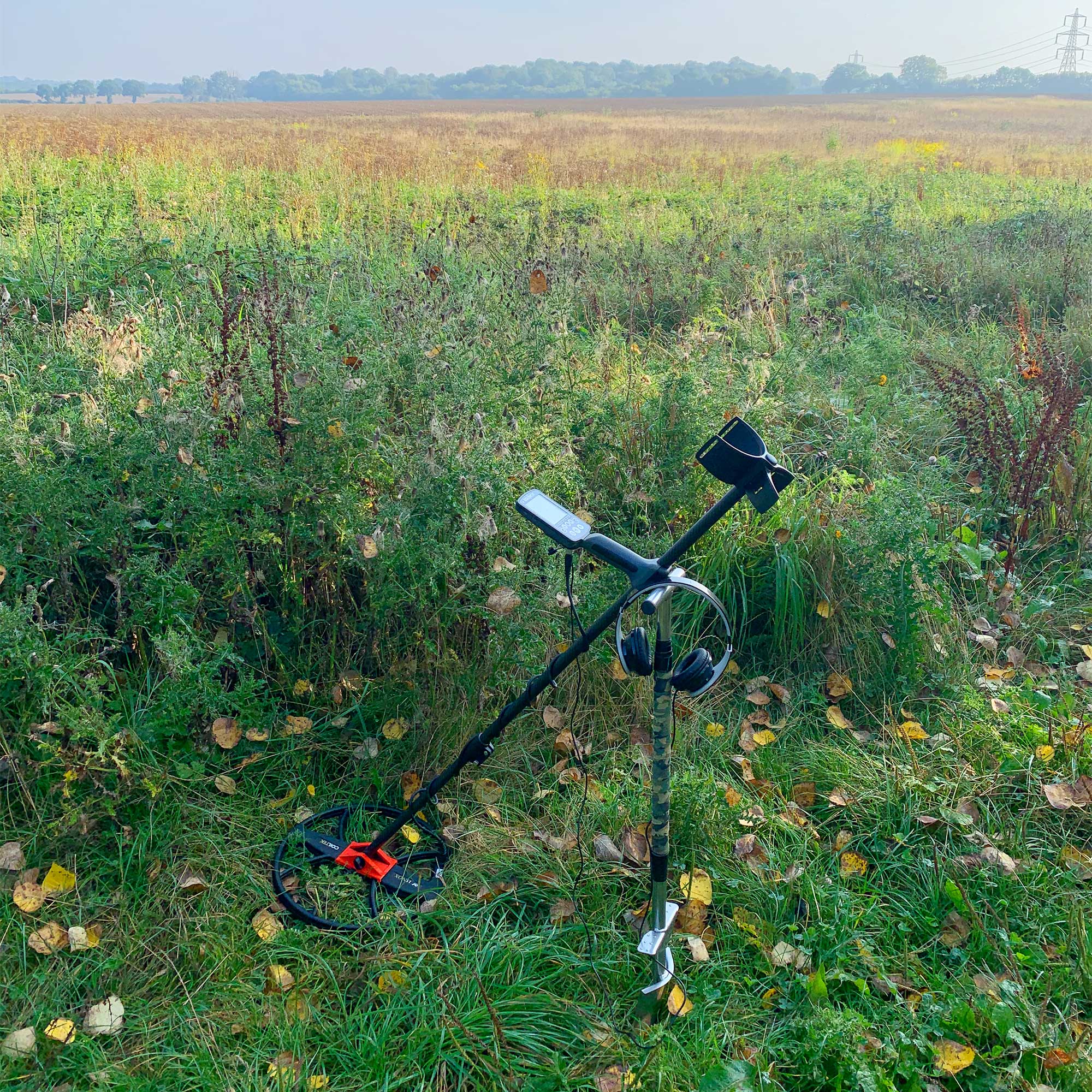
So I have been back detecting again for nearly a year now and I have pretty much been on the same permission for that entire time. The two fields where I detect were kept by my family when the rest of the land which they owned for their orchard farming business was sold off in the late 1960’s. I have struggled to get other permissions locally so I feel incredibly thankful to have these two fields in which to wind away the hours listening for bleeps and beeps.
So far my finds have taken me on quite the historical journey including Celtic, Roman, Anglo-Saxon and Medieval right through to Victorian times and the modern day. Nothing I have found has been of any significant value in monetary terms but these fields have proven to be rich with history. They have also proven to be plentiful with bits of old farm machinery, I reckon I’m pretty close to being able to build my own tractor!
During this time I have also become quite friendly with Keith Fitzpatrick-Matthews the Curator and Heritage Access Officer at North Herts Museums. Keith has been an amazing wealth of knowledge and very patient in taking the time to help identify the things I find and also in letting me know what needs to go to the Finds Liaison Officer. It turns out that Keith has studied and written about the history and archaeology of the general area in which I’m detecting so I feel fairly confident that he is genuinely interested in seeing what finds come up.
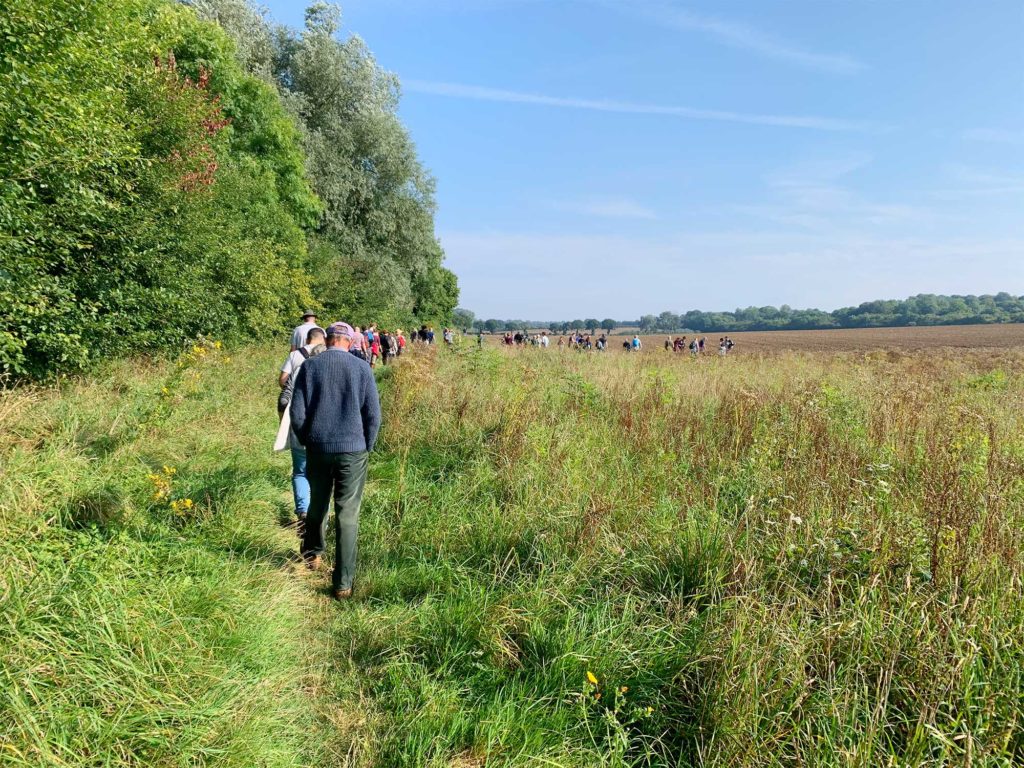
I have known for quite some time that there is what is thought to be a Roman Bath House not too far from where I detect so I have been quite hopeful in finding Roman items. To that end I have had 3 Roman coins so far, but I have also been told that these fields have been detected on by many others over the years so I do wonder if there is much else left to find.
I quite often walk the dog around the area where the Roman Bath House is believed to be and I always think to myself how good it would be to be able to detect around there. It’s an Ancient Scheduled Monument so no detecting directly over the bath house would be allowed, but surely the field surrounding it could be? I decided to ask Keith if he knew who the land owner was, and his reply resulted in the highlight of my detecting journey so far.
It turns out that Keith did know and that he had been planning a field walking day with local councillor Sam Collins for when the crops had been harvested. His intention was to see what evidence of Roman occupation could be found and he said that a detector survey would be a useful addition to that. Yes you heard it right, an archaeologist inviting a detectorist to be part of an archaeological field walk! You can imagine my excitement to be able to detect on known Roman occupied land which I had been longingly looking at and walking around for years.
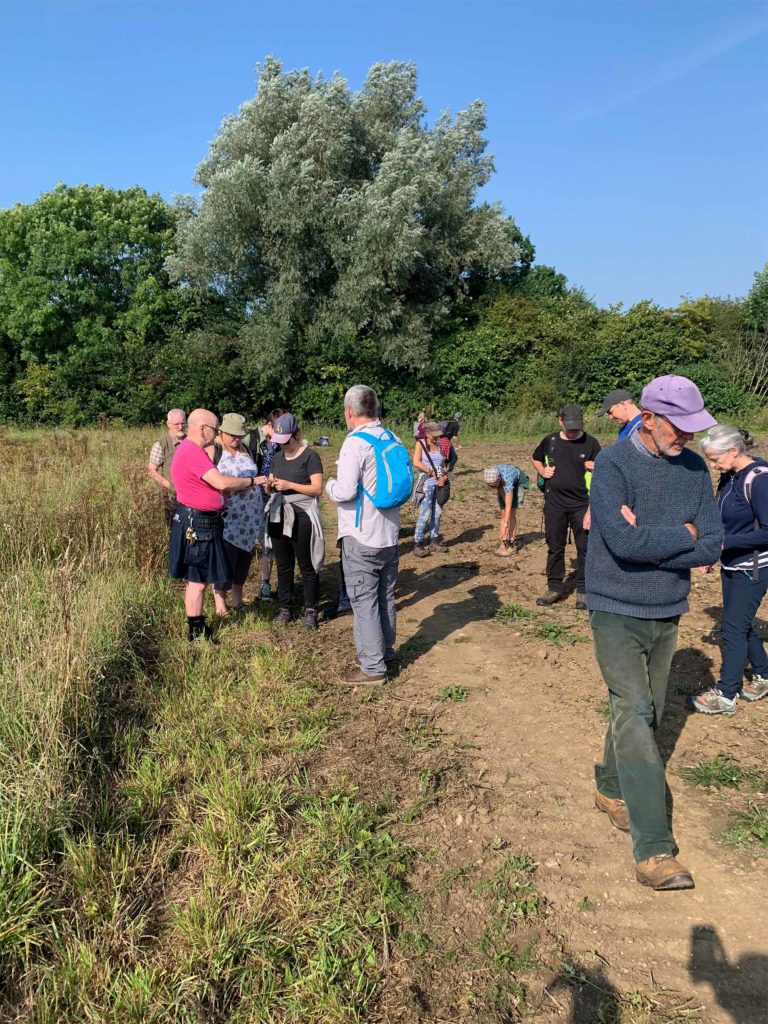
Keith and Sam had put a call out in the local paper for volunteers to come along and take part in the field walking exercise so that more of the field could be covered in the one day that they had available. On the day around 50-60 people turned up all of varying ages, backgrounds and interests. As we all gathered around, Keith explained to everyone what it was they were looking for, how to bag it, label it and record where their finds were being found using What Three Words. People were put into groups of 3 or 4 and given a direction in which to walk scouring the ground for evidence of what might have once been there.
For the morning session I was the sole detectorist and I set off walking my line in the hope that I was going to pull up some good Roman finds. By the end of the day I had found nothing Roman, not one Roman item. I couldn’t understand it, the field walking session itself had ended very successfully with lots of evidence of Roman occupation and even a Mesolithic Tranchet Axehead was found, but for me, not a jot. Later in the afternoon another detectorist stopped by and informed Keith that the area had been extensively ‘Night Hawked’ by a group of detectorists some years ago and as you can imagine my heart sank at this news but it would also explain my lack of Roman finds.
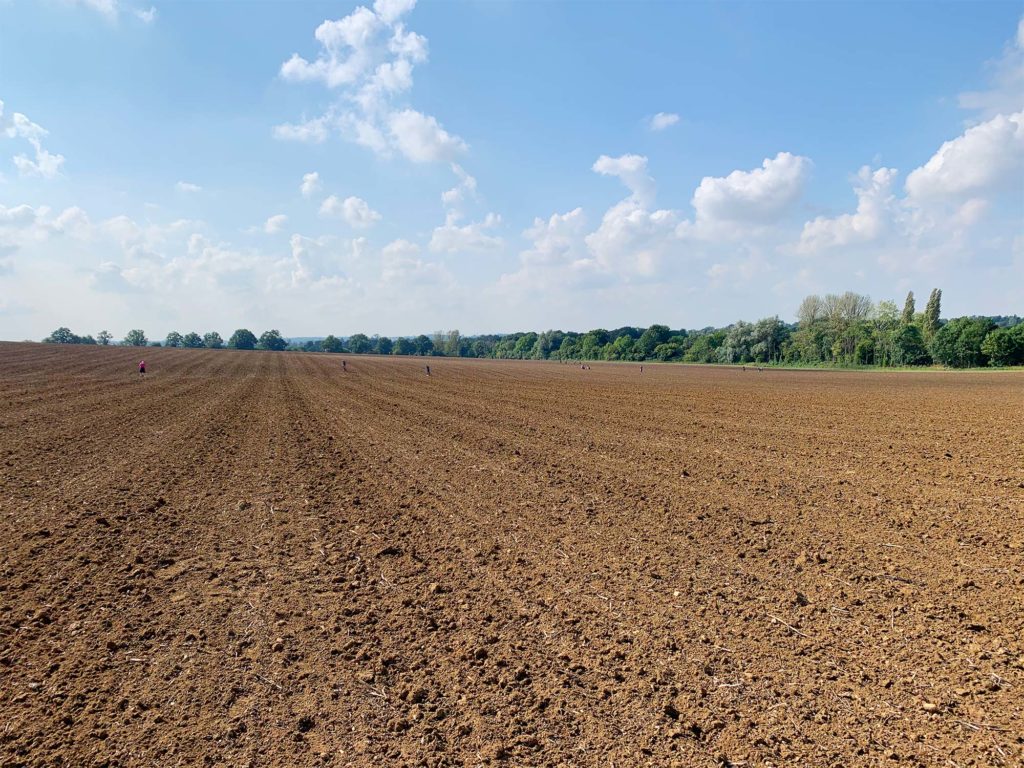
Thats not to say I didn’t have any finds, there was the odd button, bits of farm machinery and a lead bag seal, but then there was something that actually turned out to be a little bit special. Keith and I were both unsure of what this find might be so he suggested I take a look through the Finds Identified books when I got home to see if there was anything similar, and sure enough there was! I actually think Keith knew what it was but decided to send me on my own little journey of discovery.
I have also become quite friendly over email with the editor of a certain best selling detecting magazine during my new found love for the hobby. It turns out that where I detect is part of his old hunting ground so like Keith I think there is a genuine interest in the things that come up. I emailed pics of the find to him and this was his response, “That area has been well hit over years – however that is a Celtic loop and toggle fastener, probably the best example I’ve seen”.
With that news I wanted to find out more. The find is now in the museums possession but I had taken my own photos so I sent those to Matt Fittock our Finds Liaison Officer to find out what his thoughts were on the find… “Yes, that looks to be late Iron Age to me. It’s definitely a loop fastener but that extra plate on top is unusual and it’s generally the style of similar late Iron Age mounts. Date wise I would say it’s somewhere between 50 BC to 50 AD based on this and the general chronology of loop fasteners overall.” He then went on to say, “It would be good to have crisp and perfectly focused images for something like this; it’s a pretty rare example as far as I can tell. It’s a really nice find.”
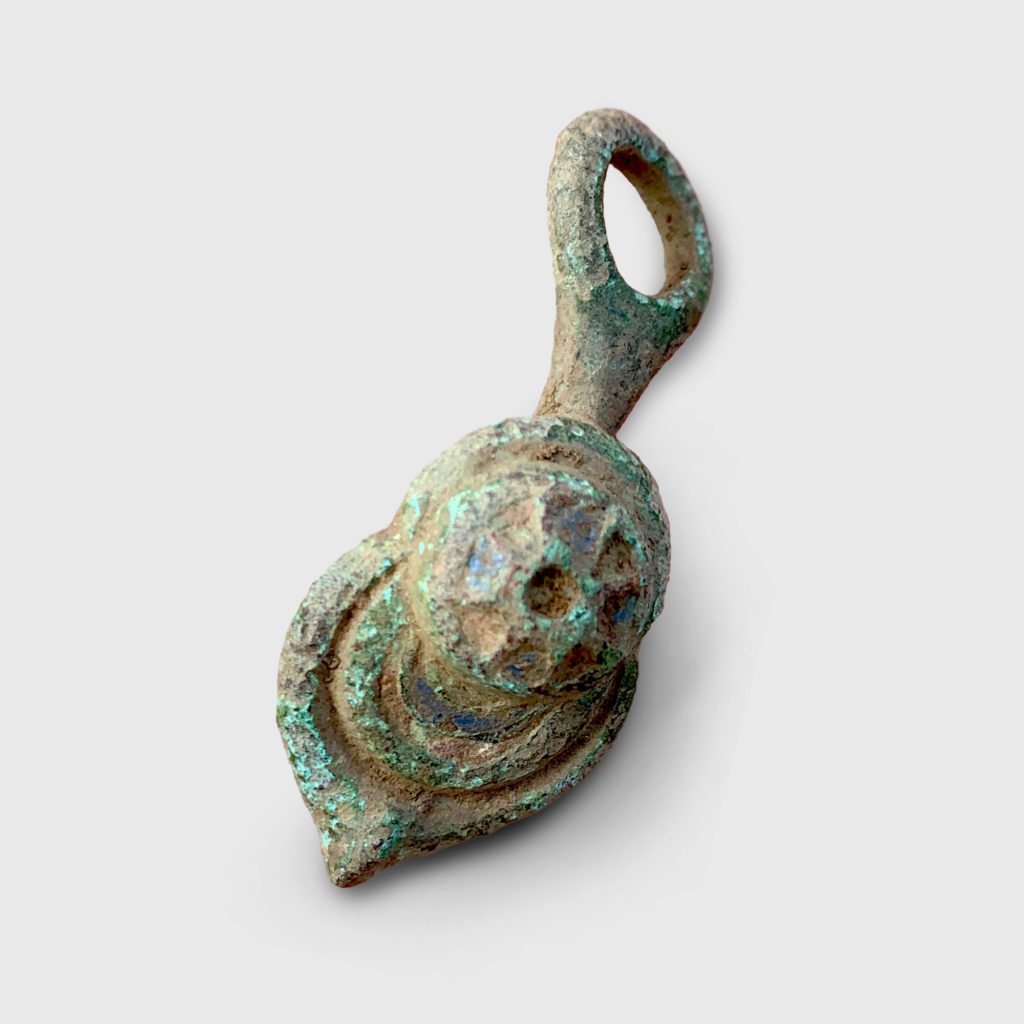
So what I thought was a bit of a disappointing day on the finds front actually turned out to be pretty successful. On the whole the day itself was a great success in that it gained the archaeological aims that Keith had set it out to do. Everyone involved seemed to enjoy themselves, but for me, to be part of this archaeological event as a detectorist was a great privilege and I can’t thank Keith enough for the opportunity. It just goes to show that detecting can be of benefit to archaeology and it has certainly given Keith food for thought as it’s possible that this find might be evidence of an Iron Age settlement in the area.
So that just leaves me to wonder about this Celtic Loop fastener, and this is the part of the hobby that I really love. It’s one thing feeling the buzz of unearthing a good find, but it’s quite another to imagine it’s place in a person’s life over 2000 years ago. This is an item that had a purpose and regularity in the day to day living of our Celtic ancestors. It’s a connection between them and us, a reminder of what we once were and it really does go a long way to painting a picture in my imagination of what life could have been like back then. I wonder if someone will feel the same awe and excitement in another 2000 years when they unearth a Levis zip!
But this isn’t the end, Keith has extended an invitation to another field walk in mid October so the story will hopefully continue… P.S. Since writing this blog the Loop and Toggle Fastener has now been recorded on the PAS database. It has been listed as a find of note and has been designated: Potential for inclusion in Britannia. Click on the Portable Antiquities Scheme link to view the record.
